Have you ever wondered WHY?
ANSWERS TO INTRIGUING QUESTIONs ABOUT JUDAISM
ANSWERS TO INTRIGUING QUESTIONs ABOUT JUDAISM
What is the holiday of Sukkot?
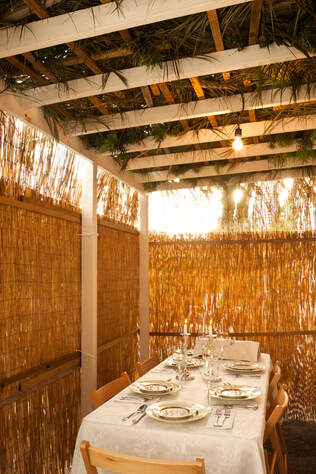
Sukkot is named after the booths or huts (Sukkot in Hebrew) in which traditionally observant Jews dwell during this week-long celebration. According to rabbinic tradition, these flimsy Sukkot represent the huts in which the Israelites dwelt during their 40 years of wandering in the desert after escaping from slavery in Egypt. The festival of Sukkot is one of the three great pilgrimage festivals (Regalim) of the Jewish year.
The origins of Sukkot are found in an ancient autumnal harvest festival. Indeed it is often referred to as hag ha-asif, “The Harvest Festival.” Much of the imagery and ritual of the holiday revolves around rejoicing and thanking God for the completed harvest. The sukkah represents the huts that farmers would live in during the last hectic period of harvest before the coming of the winter rains. Sukkot also commemorates the wanderings of the Israelites in the desert after the revelation at Mount Sinai, with the huts representing the temporary shelters that the Israelites lived in during those 40 years.
As soon after the conclusion of Yom Kippur as possible, often on the same evening, one is enjoined to begin building the sukkah, or hut, that is the central symbol of the holiday. The sukkah is a flimsy structure with at least three sides, whose roof is made out of thatch or branches, which provides some shade and protection from the sun, but also allows the stars to be seen at night. It is traditional to decorate the sukkah and to spend as much time in it as possible. Weather permitting, meals are eaten in the sukkah, and the hardier among us may also elect to sleep in the sukkah. In a welcoming ceremony called ushpizin, ancestors are symbolically invited to partake in the meals with us. And in commemoration of the bounty of the Holy Land, we hold and shake four species of plants (arba minim), consisting of palm, myrtle, and willow (lulav ), together with citron (etrog ). (Sourced in part from MyJewishLearning.com)
The origins of Sukkot are found in an ancient autumnal harvest festival. Indeed it is often referred to as hag ha-asif, “The Harvest Festival.” Much of the imagery and ritual of the holiday revolves around rejoicing and thanking God for the completed harvest. The sukkah represents the huts that farmers would live in during the last hectic period of harvest before the coming of the winter rains. Sukkot also commemorates the wanderings of the Israelites in the desert after the revelation at Mount Sinai, with the huts representing the temporary shelters that the Israelites lived in during those 40 years.
As soon after the conclusion of Yom Kippur as possible, often on the same evening, one is enjoined to begin building the sukkah, or hut, that is the central symbol of the holiday. The sukkah is a flimsy structure with at least three sides, whose roof is made out of thatch or branches, which provides some shade and protection from the sun, but also allows the stars to be seen at night. It is traditional to decorate the sukkah and to spend as much time in it as possible. Weather permitting, meals are eaten in the sukkah, and the hardier among us may also elect to sleep in the sukkah. In a welcoming ceremony called ushpizin, ancestors are symbolically invited to partake in the meals with us. And in commemoration of the bounty of the Holy Land, we hold and shake four species of plants (arba minim), consisting of palm, myrtle, and willow (lulav ), together with citron (etrog ). (Sourced in part from MyJewishLearning.com)
What is a Selichot service?
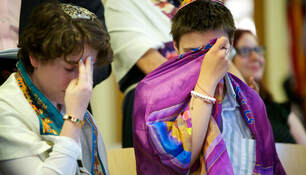
Selichot, prayers for forgiveness, are ancient prayers already mentioned in the Mishnah. They originated as prayers for fast days. The Mishnah describes public fast days and the order of prayer for such occasions as featuring a series of exhortations that end with the words “He will answer us,” recalling the times in Jewish history when God answered those who called upon Him. The Tanna debei Eliyahu Zuta, a midrashic work that dates at the latest to the ninth century, mentions a special service for forgiveness instituted by King David when he realized that the Temple would be destroyed.
“How will they attain atonement?” he asked the Lord and was told that the people would recite the order of Selichot and would then be forgiven. God even showed David that this act of contrition would include a recitation of the 13 Attributes of Mercy, a descriptive passage from Exodus that expresses God’s merciful nature.
The name “Lord” [the Hebrew letters YHWH which constitute God’s name] was consistently understood by the rabbis as referring to the appearance of God in His attribute of mercy. Therefore, its repetition in this passage indicated that God was merciful at all times.
The Selichot service also emphasizes the recitation of The 13 Attributes. Over the centuries, special poems embellishing this passage were added. The tradition of reciting Selichot throughout Elul, the month preceding Rosh Hashanah, may stem from the fact that it was customary to fast six days before Rosh Hashanah. Since the Selichot originated as prayers for fast days, it followed naturally that they would be recited at this time.
Sephardic communities begin reciting Selichot at the beginning of Elul so that a period of 40 days, similar to the time Moses spent on Mount Sinai, is devoted to prayers of forgiveness. The practice among Ashkenazi Jews is to begin saying them on the Saturday night prior to Rosh Hashanah.
Originally, Selichot prayers were recited early in the morning, prior to dawn. There was a custom in Eastern Europe that the person in charge of prayers would make the rounds of the village, knocking three times on each door and saying, “Israel, holy people, awake, arouse yourselves and rise for the service of the Creator!” It later became common practice to hold the first Selichot service — considered the most important — at a time more convenient for the masses of people. Therefore, the Saturday night service was moved forward to midnight. (BY RABBI DR. REUVEN HAMMER taken in part from MyJewishLearning.com)
“How will they attain atonement?” he asked the Lord and was told that the people would recite the order of Selichot and would then be forgiven. God even showed David that this act of contrition would include a recitation of the 13 Attributes of Mercy, a descriptive passage from Exodus that expresses God’s merciful nature.
The name “Lord” [the Hebrew letters YHWH which constitute God’s name] was consistently understood by the rabbis as referring to the appearance of God in His attribute of mercy. Therefore, its repetition in this passage indicated that God was merciful at all times.
The Selichot service also emphasizes the recitation of The 13 Attributes. Over the centuries, special poems embellishing this passage were added. The tradition of reciting Selichot throughout Elul, the month preceding Rosh Hashanah, may stem from the fact that it was customary to fast six days before Rosh Hashanah. Since the Selichot originated as prayers for fast days, it followed naturally that they would be recited at this time.
Sephardic communities begin reciting Selichot at the beginning of Elul so that a period of 40 days, similar to the time Moses spent on Mount Sinai, is devoted to prayers of forgiveness. The practice among Ashkenazi Jews is to begin saying them on the Saturday night prior to Rosh Hashanah.
Originally, Selichot prayers were recited early in the morning, prior to dawn. There was a custom in Eastern Europe that the person in charge of prayers would make the rounds of the village, knocking three times on each door and saying, “Israel, holy people, awake, arouse yourselves and rise for the service of the Creator!” It later became common practice to hold the first Selichot service — considered the most important — at a time more convenient for the masses of people. Therefore, the Saturday night service was moved forward to midnight. (BY RABBI DR. REUVEN HAMMER taken in part from MyJewishLearning.com)
What is the significance of the 18th day of Elul?
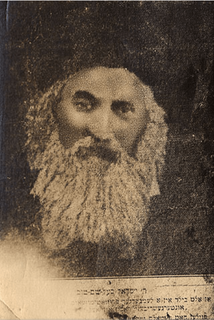
"Chai Elul", the 18th day of the Hebrew month of Elul, is a most significant date, especially for Chassidic Jews. The founder of Chassidism, Rabbi Israel Baal Shem Tov, was born on this date, in 1698. It is also the day, 36 years later, on which the Baal Shem Tov began to publicly disseminate his groundbreaking teachings, after many years as a member of the society of "hidden tzaddikim", during which he lived disguised as a simple innkeeper and clay-digger, his greatness known only to a very small circle of fellow mystics and disciples.
The numerical value of the Hebrew word Chai, which means life, is 18. Therefore for example, it is customary for Jews to make donations in multiples of 18, as well as recognize calendar dates including the number 18 as especially auspicious.
Elul 18 is also the birthday, in 1745, of Rabbi Schneur Zalman of Liadi, who often referred to himself as the Baal Shem Tov's "spiritual grandson". He was also known as the “Alter Rebbe”, Yiddish for the old Rebbe.
After gaining fame as a child prodigy and young Talmudic genius, Rabbi Schneur Zalman journeyed to Mezeritch to study under the tutelage of the Baal Shem Tov's successor, Rabbi Dov Ber also knows as the Maggid of Mezeritch. As the Alter Rebbe later explained, "to study I knew somewhat, but I needed to learn how to pray", and was soon accepted into the intimate circle of Rabbi Dov Ber's leading disciples.
Rabbi Schneur Zalman established the "Chabad" branch of Chassidism, which till this day emphasizes in-depth study and intense contemplation as the key to vitalizing the entire person, from sublime mind to practical deed. (Sourced in part from Chabbad.org)
The numerical value of the Hebrew word Chai, which means life, is 18. Therefore for example, it is customary for Jews to make donations in multiples of 18, as well as recognize calendar dates including the number 18 as especially auspicious.
Elul 18 is also the birthday, in 1745, of Rabbi Schneur Zalman of Liadi, who often referred to himself as the Baal Shem Tov's "spiritual grandson". He was also known as the “Alter Rebbe”, Yiddish for the old Rebbe.
After gaining fame as a child prodigy and young Talmudic genius, Rabbi Schneur Zalman journeyed to Mezeritch to study under the tutelage of the Baal Shem Tov's successor, Rabbi Dov Ber also knows as the Maggid of Mezeritch. As the Alter Rebbe later explained, "to study I knew somewhat, but I needed to learn how to pray", and was soon accepted into the intimate circle of Rabbi Dov Ber's leading disciples.
Rabbi Schneur Zalman established the "Chabad" branch of Chassidism, which till this day emphasizes in-depth study and intense contemplation as the key to vitalizing the entire person, from sublime mind to practical deed. (Sourced in part from Chabbad.org)
Why is romantic love an Elul theme?

We are in the Hebrew month of Elul, the letters of whose name famously form an acronym for the phrase ani l’dodi v’dodi li — I am my beloved’s and my beloved is mine.
This phrase comes from Song of Songs (6:3), a poetic back and forth between a male and female each longing for the other’s love. The rabbis classically interpreted Song of Songs as an allegory for the on-again, off-again romance between God and the Jewish people.
We do find images of God as lover elsewhere in Jewish tradition, perhaps most notably in the Friday night liturgy. This is where a theology of hieros gamos, or sacred union, is most pronounced, as we welcome the transcendent God to cohabit with the Shabbat queen on earth, an immanent face of the manifest divine. But notwithstanding the long history of ecstatic poetry, from King Solomon’s palace through to the Renaissance mystics, in general Judaism has not organized itself around the sense of God as lover. Far more standard are images of God as king, father and creator.
Even if these conceptions of God are intended as benevolent, they are still fundamentally hierarchical. The king is in charge, and father knows best. Creator, father and king all imply a singular power, distinct from the many millions of its multifarious progeny. Unlike the unique intimacy of a beloved, these images are apt to make our deity feel rather impersonal and remote. How much individual attention can we really expect from a father whose living human children alone number more than eight billion?
And where God is depicted as a husband or romantic partner in Jewish tradition, the implications are frequently disturbing. In his extensive use of the “faithless wife” analogy, the prophet Hosea fulminates against Israel’s adulterous attraction to other gods, an infidelity that leaves “her” legitimately deserving of violent punishment. The Book of Lamentations expresses this violence outright, drawing explicit focus to the disgraced body of Zion. She is seen not merely weeping, humiliated and scorned by her former friends, but even coded as the victim of sexual violence — “snatched at,” “raped,” “her nakedness exposed,” “with unclean blood clinging to her skirts.”
Constructing the encompassing body of the nation as female (along with ships and sports teams) is not limited to Jews, and in fact is common in the wider culture. However, the Hebrew language also genders not only soul (neshamah) but self (nefesh) in the feminine. Relative to the penetrating presence of divine life-force, the containing receptacle of each individual is “female,” regardless of biological sex. At some level, this is presumably a human projection of our reproductive mechanism onto the mystery of existence: If matter is mother, some tiny animating spark of encoded intelligence from the great Other is still needed to seed creation.
Gender, then, is metaphor — in the deeper sense of the word: a splitting into parts. For as Deuteronomy 4:35 reminds us, at root “there is nothing else but God.” The supposed duality of lover and beloved must therefore be mere playfulness, a contraction of the all-pervasive Self-awareness of God precisely so that It might experience the delight of being found and known and merged with once again.
A famous midrash (Bereishit Rabbah 8:1) understands the description in Genesis of humanity’s creation as an account of primordial man and woman being separated out from one original androgynous body. This separation, say the rabbis, lets us go from being whole but unconscious of our wholeness to being able to approach one another face to face, panim el panim. It is only thus that we can see the presence of God in one another — and find ourselves as both lover and beloved, rooted into the cosmos by the experience of love itself.
And in that love we might well find that as much as I am my beloved’s and my beloved is mine, at heart I am my beloved, and My Beloved Is Me. (BY KOHENET RABBI SARAH BRACHA GERSHUNY and found in MyJewishLearning.com)
This phrase comes from Song of Songs (6:3), a poetic back and forth between a male and female each longing for the other’s love. The rabbis classically interpreted Song of Songs as an allegory for the on-again, off-again romance between God and the Jewish people.
We do find images of God as lover elsewhere in Jewish tradition, perhaps most notably in the Friday night liturgy. This is where a theology of hieros gamos, or sacred union, is most pronounced, as we welcome the transcendent God to cohabit with the Shabbat queen on earth, an immanent face of the manifest divine. But notwithstanding the long history of ecstatic poetry, from King Solomon’s palace through to the Renaissance mystics, in general Judaism has not organized itself around the sense of God as lover. Far more standard are images of God as king, father and creator.
Even if these conceptions of God are intended as benevolent, they are still fundamentally hierarchical. The king is in charge, and father knows best. Creator, father and king all imply a singular power, distinct from the many millions of its multifarious progeny. Unlike the unique intimacy of a beloved, these images are apt to make our deity feel rather impersonal and remote. How much individual attention can we really expect from a father whose living human children alone number more than eight billion?
And where God is depicted as a husband or romantic partner in Jewish tradition, the implications are frequently disturbing. In his extensive use of the “faithless wife” analogy, the prophet Hosea fulminates against Israel’s adulterous attraction to other gods, an infidelity that leaves “her” legitimately deserving of violent punishment. The Book of Lamentations expresses this violence outright, drawing explicit focus to the disgraced body of Zion. She is seen not merely weeping, humiliated and scorned by her former friends, but even coded as the victim of sexual violence — “snatched at,” “raped,” “her nakedness exposed,” “with unclean blood clinging to her skirts.”
Constructing the encompassing body of the nation as female (along with ships and sports teams) is not limited to Jews, and in fact is common in the wider culture. However, the Hebrew language also genders not only soul (neshamah) but self (nefesh) in the feminine. Relative to the penetrating presence of divine life-force, the containing receptacle of each individual is “female,” regardless of biological sex. At some level, this is presumably a human projection of our reproductive mechanism onto the mystery of existence: If matter is mother, some tiny animating spark of encoded intelligence from the great Other is still needed to seed creation.
Gender, then, is metaphor — in the deeper sense of the word: a splitting into parts. For as Deuteronomy 4:35 reminds us, at root “there is nothing else but God.” The supposed duality of lover and beloved must therefore be mere playfulness, a contraction of the all-pervasive Self-awareness of God precisely so that It might experience the delight of being found and known and merged with once again.
A famous midrash (Bereishit Rabbah 8:1) understands the description in Genesis of humanity’s creation as an account of primordial man and woman being separated out from one original androgynous body. This separation, say the rabbis, lets us go from being whole but unconscious of our wholeness to being able to approach one another face to face, panim el panim. It is only thus that we can see the presence of God in one another — and find ourselves as both lover and beloved, rooted into the cosmos by the experience of love itself.
And in that love we might well find that as much as I am my beloved’s and my beloved is mine, at heart I am my beloved, and My Beloved Is Me. (BY KOHENET RABBI SARAH BRACHA GERSHUNY and found in MyJewishLearning.com)
Why blow Shofar during the month of Elul?
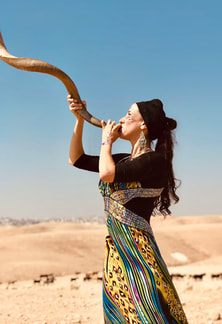
Because there is so much at stake spiritually during Rosh Hashanah, we make preparations beginning a full month earlier. At Rosh Hodesh Elul , or the start of the new month of Elul, we begin to stir with anticipation for this day of spiritual renewal. The most prominent feature of the month of Elul is the sounding of the shofar each morning, except on Shabbat. Three primary reasons are given for this practice.
The first one is to confuse Satan about the date for Rosh Hashanah, so that he will not be able to affect God’s judgment of people with his accusations against them.
The second one pertains to a rabbinic legend, which says that Moses’ ascent to receive the second tablets on the first of Elul was accompanied by blasts of the shofar. Therefore, the shofar reminds us of the story of the Golden Calf and that we must always be aware of our potential for sinning.
The third one has as its source the famous phrase heard at many weddings from the Song of Songs (6:3) Ani l’dodi v’dodi li, meaning “, I am my beloved’s and my beloved is mine.” The first letters (aleph, lamed, vav, lamed) of each Hebrew word form an acrostic for the word "Elul" אלול. From this hint, we gather that the period extending from the beginning of Elul through Yom Kippur (a total of 40 days) is a time ripe to become beloved by God, and relearn the delicate art of loving God. The shofar alerts us to that love relationship. (By RABBI PAUL STEINBERG, sourced in part from MyJewishLearning.com)
The first one is to confuse Satan about the date for Rosh Hashanah, so that he will not be able to affect God’s judgment of people with his accusations against them.
The second one pertains to a rabbinic legend, which says that Moses’ ascent to receive the second tablets on the first of Elul was accompanied by blasts of the shofar. Therefore, the shofar reminds us of the story of the Golden Calf and that we must always be aware of our potential for sinning.
The third one has as its source the famous phrase heard at many weddings from the Song of Songs (6:3) Ani l’dodi v’dodi li, meaning “, I am my beloved’s and my beloved is mine.” The first letters (aleph, lamed, vav, lamed) of each Hebrew word form an acrostic for the word "Elul" אלול. From this hint, we gather that the period extending from the beginning of Elul through Yom Kippur (a total of 40 days) is a time ripe to become beloved by God, and relearn the delicate art of loving God. The shofar alerts us to that love relationship. (By RABBI PAUL STEINBERG, sourced in part from MyJewishLearning.com)
What is the significance of Elul?
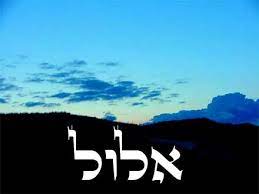
This Jewish month marks the period of soul-searching leading up to the High Holidays.
Although the month of Elul — the sixth month of the Jewish year, which immediately precedes Rosh Hashanah — has no special importance in the Bible or in early rabbinic writings, various customs arose sometime during the first millennium that designated Elul as the time to prepare for the High Holy Days. Because these days are filled with so much meaning and potency, they require a special measure of readiness. We are called upon to enter them thoughtfully and to consider what they mean. As the Maharal of Prague said, “All the month of Elul, before eating and sleeping, a person should look into his soul and search his deeds, that he may make confession.”
Jewish tradition points to the name of the month as symbolically appropriate. The letters of Elul form an acronym for the words in the verse Ani le‑dodi ve‑dodi li–“I am my beloved’s and my beloved is mine” (Song of Songs 6:3). Believing that the “beloved” refers to God, the sages take this verse to describe the particularly loving and close relationship between God and Israel. Elul, then, is our time to establish this closeness so that we can approach the Yamim Noraim, or Days of Awe, in trusting acceptance of God’s judgment. We approach the trial not out of fear, but out of love. (By Rabbi Reuven Hammer, Ph.D in theology from the Jewish Theological Seminary of America. He teaches Jewish studies and special education in Jerusalem. Sourced in part from myJewishlearning.com)
Although the month of Elul — the sixth month of the Jewish year, which immediately precedes Rosh Hashanah — has no special importance in the Bible or in early rabbinic writings, various customs arose sometime during the first millennium that designated Elul as the time to prepare for the High Holy Days. Because these days are filled with so much meaning and potency, they require a special measure of readiness. We are called upon to enter them thoughtfully and to consider what they mean. As the Maharal of Prague said, “All the month of Elul, before eating and sleeping, a person should look into his soul and search his deeds, that he may make confession.”
Jewish tradition points to the name of the month as symbolically appropriate. The letters of Elul form an acronym for the words in the verse Ani le‑dodi ve‑dodi li–“I am my beloved’s and my beloved is mine” (Song of Songs 6:3). Believing that the “beloved” refers to God, the sages take this verse to describe the particularly loving and close relationship between God and Israel. Elul, then, is our time to establish this closeness so that we can approach the Yamim Noraim, or Days of Awe, in trusting acceptance of God’s judgment. We approach the trial not out of fear, but out of love. (By Rabbi Reuven Hammer, Ph.D in theology from the Jewish Theological Seminary of America. He teaches Jewish studies and special education in Jerusalem. Sourced in part from myJewishlearning.com)
What is the latest with Israel's judicial coup? Is there hope?

When Israel’s parliament on Monday passed the first plank in a series of reform proposals meant to curb the power of Israel’s judiciary, it set off alarms among Israel’s supporters abroad.
Rabbi Donniel Hartman is urging critics of the judicial reforms and Netanyahu’s government to take a deep breath. Not because he supports the proposals — he agrees they would “undermine the systems of checks and balances necessary to protect Israel’s democratic identity.” But he warns that the bill passed on Monday represents one of the least controversial planks in Netanyahu’s reform plan, and that the massive demonstrations against the proposals have united an Israeli consensus around what he is calling a “new social coalition.”
An interview with Rabbi Donniel Hartman:
Carol: I’ve been thinking of the “day after” fear and anticipation after some recent watershed events – Trump’s election, the Dobbs decision that overturned Roe v. Wade, maybe the Brexit vote. Did Monday’s vote on the “reasonableness” clause mark a before and after?
Hartman: No. It doesn’t feel like a Brexit moment, because the vote on the reasonableness clause is not big enough. The election itself was more significant. The proposal of the reform was more significant. The “reasonableness” clause was the perfect issue for Netanyahu to pick, because it’s the most reasonable of the judicial reform proposals. Overall there are five big reform proposals, including the way the Israeli Supreme Court is selected, the power of the attorneys general and the “override” clause. The last is the one the haredi Orthodox want because no matter who is on the Supreme Court or what they decide they could just cancel it out. That’s just the end of democracy.
So Netanyahu pushed the right one for a first victory, but in order to stop the slippery slope process, [the opposition] had to pretend as if this was very big. It was a tactical game, to claim that the override clause was the end of democracy. Tom Friedman overplayed his cards. Nope. It’s far from the end.
This was just the beginning of a three-year war. This is going to go on until the next elections in 2026.
Carol: You said the 2022 election was the real watershed moment. In what way?
Hartman: The consequence of the election was the judicial reform proposals, which raised a fundamental question: What is the nature of our country? Trump wasn’t the end of America, but his election asked the question, What is America?
Carol: Can Israelis right the ship as they see it in the next election?
Hartman: I believe this is the last Likud-led government and it certainly is the last right-wing government. That’s assuming that Netanyahu is not going to be prime minister. This whole reform issue has created an awareness that there are different coalitions being formed in Israel, which aren’t being formed around the right-left wing divide. That divide doesn’t really exist anymore. There is a broad centrist camp that agrees on Judea and Samaria [the West Bank] and economic theory. And there is no possibility of a two-state solution anyway — I just don’t know how to implement it. On the fringes, there is a left-wing socialist camp, let’s call it, and there is a right-wing settler group. Other than that, 80% of Israel is not divided under the left wing-right wing categories. You see at the demonstrations and in the polls that 20 to 30% of those who used to be on the right or are still on the right no longer want to vote for Netanyahu, Smotrich and Ben-Gvir. They want to find alternative expressions for their identities.
What we need to do over the next three years is to frame a new social coalition in Israel, around internal values of liberal Zionism and liberal Judaism, which 80% of Israelis accept. Then we can win and that’s where 2026 is going to change.
Carol: You used the term “liberal Zionist” before. I think you use it differently than an American Jew might. Here it means someone who is pro-Israel but is desperate to see a resolution to the Israeli-Palestinian conflict.
Hartman: It’s very interesting how the category of liberalism has been reclaimed in Israeli society. While in America the term is very divisive, actually in Israel it is becoming much more inclusive. It’s the old liberalism of liberties — a belief in Zionism and the right of the Jewish people to a state but one that believes in human rights and a diverse public sphere and that respects law and the Supreme Court. It’s the old Likud. It’s the old [Ze’ev] Jabotinsky [the pre-state leader of Revisionist Zionism]. It’s the old [Likud Prime Minister] Menachem Begin. It’s not Smotrich or Ben-Gvir, and it’s not the haredi parties.
Carol: But it doesn’t extend to the Palestinian issue.
Hartman: Liberal Zionism in Israel recognizes that we don’t want to be an occupier of another people. But for the vast majority of Israelis, “the Palestinians want to murder me.” There is no Palestinian Authority today. The Palestinian Authority controls the Mukata [the P.A. headquarters in Ramallah] and three upper-middle-class towns in Judea and Samaria. Hamas and Islamic Jihad would run away with any election. It’s very hard to even have a conversation about Palestinian rights in Israel, when you feel you’re talking about a society that wants to kill you.
I just finished a book that is getting published in November, and I have a whole section on it challenging North American liberal Jews to recognize that they have liberal partners in Israel, even though they don’t agree with you on Judea and Samaria, or the West Bank, or what you even call it.
Carol: Since we’re talking on Tisha B’Av, I went to services last night and the person who led the services gave a scorched-earth lament for Israel, basically saying his dreams for Israel are dying and he tied the week’s events, as a lot of people have, to the cataclysms that we acknowledge on the fast day, including the destruction of the First and Second Temples. What are you telling either Israelis or Diaspora supporters of Israel who are talking in apocalyptic terms about this week’s vote and the push for judicial reform by this government?
Hartman: We mourn the destruction of the Temple. We learn from the destruction of the Temple. But we don’t declare the Temple destroyed before it’s destroyed.
Everything in Jewish history is about hope. It’s about working under impossible conditions. And Israel is now working under impossible conditions. That’s true. There is a government which is advocating for an Israel that half of Israel and 90% of North American Jewry wants nothing to do with. But Israel is not defined by its government alone, as you discovered when it came to Trump. People have a voice. What the demonstrations make clear is that the vast majority of Israelis do not support these proposals.
It’s one thing to turn your back on the Israeli government. But we’re out there marching. We don’t embrace destruction before it happens, but we get to work. There is a blueprint forward. The vast majority of Israelis now are embracing a liberal Zionism of the type I mentioned. North American Jews now have partners. They might not be perfect partners, but they have partners. Why walk away from Israel, when the majority of Israelis are now saying things they never said before: “I care about the Supreme Court. I care about human rights. I care about the rights of minorities”? This is what they’re talking about at every demonstration.
So I would go back to your [prayer leader] and say to him, “We waited 2,000 freaking years to have this country. Could you wait three more years? And could you fight for three years?” Because if you fight and you stand up and you don’t walk away, there are partners in Israel who are looking at you and who feel encouraged by you. We can build it. (Excerpted from an article by ANDREW SILOW-CARROLL in the Jewish Telegraphic Agency)
Rabbi Donniel Hartman is urging critics of the judicial reforms and Netanyahu’s government to take a deep breath. Not because he supports the proposals — he agrees they would “undermine the systems of checks and balances necessary to protect Israel’s democratic identity.” But he warns that the bill passed on Monday represents one of the least controversial planks in Netanyahu’s reform plan, and that the massive demonstrations against the proposals have united an Israeli consensus around what he is calling a “new social coalition.”
An interview with Rabbi Donniel Hartman:
Carol: I’ve been thinking of the “day after” fear and anticipation after some recent watershed events – Trump’s election, the Dobbs decision that overturned Roe v. Wade, maybe the Brexit vote. Did Monday’s vote on the “reasonableness” clause mark a before and after?
Hartman: No. It doesn’t feel like a Brexit moment, because the vote on the reasonableness clause is not big enough. The election itself was more significant. The proposal of the reform was more significant. The “reasonableness” clause was the perfect issue for Netanyahu to pick, because it’s the most reasonable of the judicial reform proposals. Overall there are five big reform proposals, including the way the Israeli Supreme Court is selected, the power of the attorneys general and the “override” clause. The last is the one the haredi Orthodox want because no matter who is on the Supreme Court or what they decide they could just cancel it out. That’s just the end of democracy.
So Netanyahu pushed the right one for a first victory, but in order to stop the slippery slope process, [the opposition] had to pretend as if this was very big. It was a tactical game, to claim that the override clause was the end of democracy. Tom Friedman overplayed his cards. Nope. It’s far from the end.
This was just the beginning of a three-year war. This is going to go on until the next elections in 2026.
Carol: You said the 2022 election was the real watershed moment. In what way?
Hartman: The consequence of the election was the judicial reform proposals, which raised a fundamental question: What is the nature of our country? Trump wasn’t the end of America, but his election asked the question, What is America?
Carol: Can Israelis right the ship as they see it in the next election?
Hartman: I believe this is the last Likud-led government and it certainly is the last right-wing government. That’s assuming that Netanyahu is not going to be prime minister. This whole reform issue has created an awareness that there are different coalitions being formed in Israel, which aren’t being formed around the right-left wing divide. That divide doesn’t really exist anymore. There is a broad centrist camp that agrees on Judea and Samaria [the West Bank] and economic theory. And there is no possibility of a two-state solution anyway — I just don’t know how to implement it. On the fringes, there is a left-wing socialist camp, let’s call it, and there is a right-wing settler group. Other than that, 80% of Israel is not divided under the left wing-right wing categories. You see at the demonstrations and in the polls that 20 to 30% of those who used to be on the right or are still on the right no longer want to vote for Netanyahu, Smotrich and Ben-Gvir. They want to find alternative expressions for their identities.
What we need to do over the next three years is to frame a new social coalition in Israel, around internal values of liberal Zionism and liberal Judaism, which 80% of Israelis accept. Then we can win and that’s where 2026 is going to change.
Carol: You used the term “liberal Zionist” before. I think you use it differently than an American Jew might. Here it means someone who is pro-Israel but is desperate to see a resolution to the Israeli-Palestinian conflict.
Hartman: It’s very interesting how the category of liberalism has been reclaimed in Israeli society. While in America the term is very divisive, actually in Israel it is becoming much more inclusive. It’s the old liberalism of liberties — a belief in Zionism and the right of the Jewish people to a state but one that believes in human rights and a diverse public sphere and that respects law and the Supreme Court. It’s the old Likud. It’s the old [Ze’ev] Jabotinsky [the pre-state leader of Revisionist Zionism]. It’s the old [Likud Prime Minister] Menachem Begin. It’s not Smotrich or Ben-Gvir, and it’s not the haredi parties.
Carol: But it doesn’t extend to the Palestinian issue.
Hartman: Liberal Zionism in Israel recognizes that we don’t want to be an occupier of another people. But for the vast majority of Israelis, “the Palestinians want to murder me.” There is no Palestinian Authority today. The Palestinian Authority controls the Mukata [the P.A. headquarters in Ramallah] and three upper-middle-class towns in Judea and Samaria. Hamas and Islamic Jihad would run away with any election. It’s very hard to even have a conversation about Palestinian rights in Israel, when you feel you’re talking about a society that wants to kill you.
I just finished a book that is getting published in November, and I have a whole section on it challenging North American liberal Jews to recognize that they have liberal partners in Israel, even though they don’t agree with you on Judea and Samaria, or the West Bank, or what you even call it.
Carol: Since we’re talking on Tisha B’Av, I went to services last night and the person who led the services gave a scorched-earth lament for Israel, basically saying his dreams for Israel are dying and he tied the week’s events, as a lot of people have, to the cataclysms that we acknowledge on the fast day, including the destruction of the First and Second Temples. What are you telling either Israelis or Diaspora supporters of Israel who are talking in apocalyptic terms about this week’s vote and the push for judicial reform by this government?
Hartman: We mourn the destruction of the Temple. We learn from the destruction of the Temple. But we don’t declare the Temple destroyed before it’s destroyed.
Everything in Jewish history is about hope. It’s about working under impossible conditions. And Israel is now working under impossible conditions. That’s true. There is a government which is advocating for an Israel that half of Israel and 90% of North American Jewry wants nothing to do with. But Israel is not defined by its government alone, as you discovered when it came to Trump. People have a voice. What the demonstrations make clear is that the vast majority of Israelis do not support these proposals.
It’s one thing to turn your back on the Israeli government. But we’re out there marching. We don’t embrace destruction before it happens, but we get to work. There is a blueprint forward. The vast majority of Israelis now are embracing a liberal Zionism of the type I mentioned. North American Jews now have partners. They might not be perfect partners, but they have partners. Why walk away from Israel, when the majority of Israelis are now saying things they never said before: “I care about the Supreme Court. I care about human rights. I care about the rights of minorities”? This is what they’re talking about at every demonstration.
So I would go back to your [prayer leader] and say to him, “We waited 2,000 freaking years to have this country. Could you wait three more years? And could you fight for three years?” Because if you fight and you stand up and you don’t walk away, there are partners in Israel who are looking at you and who feel encouraged by you. We can build it. (Excerpted from an article by ANDREW SILOW-CARROLL in the Jewish Telegraphic Agency)
Why do we fast on Tisha B'Av?
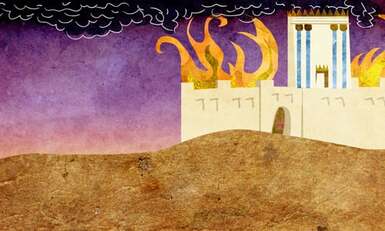
Tisha B’Av, the ninth of the month of Av, is a day of mourning for Jews. It is the day Jews remember the destruction of both Temples that once stood in Jerusalem as well as a number of other tragedies that have befallen the Jewish people over the course of history.
Nine days prior to Tisha B’Av, a new period of more intense mourning begins. Traditional Jews do not eat meat, cut their hair, or wash their clothes unless they are to be worn again during the nine days. All these actions are considered signs of joy or luxury inappropriate for this time of mourning.
Tisha B’Av is a full fast day, so the last meal must be eaten before sunset prior to the ninth of Av. The meal often is comprised of round foods like eggs or lentils, which symbolize mourning in Jewish tradition because they evoke the cycle of life.
Megillat Eicha (the Scroll of Lamentations), which is a lament for the destruction of the First Temple, is chanted during the Maariv service, along with several kinot, elegies or dirges written at different periods of Jewish history. The kinot speak of the suffering and pain of Jewish tragedy through the ages. An extended set of kinot are traditionally recited during the morning service, and some communities repeat the chanting of Eicha in the morning as well.
The meal ending the fast traditionally omits meat and wine, in acknowledgment of the fact that the burning of the Temple continued until the next day. Finally, the sorrow that began on the 17th of Tammuz comes to a halt and the Shabbat immediately following Tishah B’Av is called Shabbat Nahamu (Shabbat of comfort) because the Haftarah begins with the words “nahamu nahamu ami” (“comfort, comfort my people”). This begins a period of consolation and comfort leading up to Rosh Hashanah, the Jewish New Year. (Sourced in part from myJewishlearning.com)
Nine days prior to Tisha B’Av, a new period of more intense mourning begins. Traditional Jews do not eat meat, cut their hair, or wash their clothes unless they are to be worn again during the nine days. All these actions are considered signs of joy or luxury inappropriate for this time of mourning.
Tisha B’Av is a full fast day, so the last meal must be eaten before sunset prior to the ninth of Av. The meal often is comprised of round foods like eggs or lentils, which symbolize mourning in Jewish tradition because they evoke the cycle of life.
Megillat Eicha (the Scroll of Lamentations), which is a lament for the destruction of the First Temple, is chanted during the Maariv service, along with several kinot, elegies or dirges written at different periods of Jewish history. The kinot speak of the suffering and pain of Jewish tragedy through the ages. An extended set of kinot are traditionally recited during the morning service, and some communities repeat the chanting of Eicha in the morning as well.
The meal ending the fast traditionally omits meat and wine, in acknowledgment of the fact that the burning of the Temple continued until the next day. Finally, the sorrow that began on the 17th of Tammuz comes to a halt and the Shabbat immediately following Tishah B’Av is called Shabbat Nahamu (Shabbat of comfort) because the Haftarah begins with the words “nahamu nahamu ami” (“comfort, comfort my people”). This begins a period of consolation and comfort leading up to Rosh Hashanah, the Jewish New Year. (Sourced in part from myJewishlearning.com)
What is the Book of Lamantations (Megilat Eicha)?
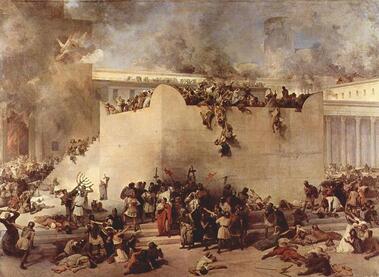
Lamentations is one of the Five “Scrolls” (megillot) in the Hebrew Bible (The others are Esther, Song of Songs, Ruth, and Kohelet, also known as Ecclesiastes). The text begins with the Hebrew word Eicha (how?), and the book is known in Hebrew as Megillat Eicha (the scroll of Eicha.) The book is a theological and prophetic response to the destruction of the First Temple (Beit Hamikdash), in Jerusalem, in 586 B.C.E. The Talmud (The Babylonian, Tractate Bava Batra 15a) states that it was written by the prophet Jeremiah, who lived at the time of the destruction.
In 586 B.C.E., the army of the Babylonian empire destroyed Jerusalem and its Temple because the kingdom of Judah, of which Jerusalem was the capital, refused to remain a loyal vassal of Babylonia. The king of Babylonia at the time, Nebuchadnezzar, sought to counter Egyptian military power and political influence in Syria-Palestine, and so control of Judah was particularly important to him. Jerusalem was destroyed, and large parts of the population were exiled to Babylon.
But Lamentations is not concerned with the technical historical details of the destruction, but rather with larger and meta-historical issues: Why did God, who had once been Israel’s redeemer, acquiesce to the destruction of His holy city and temple? Why is God’s love no longer evident? How can it be that “the city that was full of people” now “dwells alone” (Lamentations 1:1)?
Lamentations offers more questions than answers, but asking these questions is an important step in dealing with the theological crisis posed by the destruction of the Temple. The book does not question God’s justice in destroying Jerusalem. “Jerusalem has sinned,” the book proclaims in 1:8, and has therefore been punished. Lamentations describes God as participating in the destruction of Jerusalem: “The yoke of my (i.e. Jerusalem’s) sins in his hand is ready. They twine together, come upon my neck, cause my strength to fail. God has given me into the hands of one against whom I cannot stand up” (1:14). Because of Jerusalem’s sins, God has given Jerusalem over to the Babylonians. (Sourced in part from myJewishlearning.com)
In 586 B.C.E., the army of the Babylonian empire destroyed Jerusalem and its Temple because the kingdom of Judah, of which Jerusalem was the capital, refused to remain a loyal vassal of Babylonia. The king of Babylonia at the time, Nebuchadnezzar, sought to counter Egyptian military power and political influence in Syria-Palestine, and so control of Judah was particularly important to him. Jerusalem was destroyed, and large parts of the population were exiled to Babylon.
But Lamentations is not concerned with the technical historical details of the destruction, but rather with larger and meta-historical issues: Why did God, who had once been Israel’s redeemer, acquiesce to the destruction of His holy city and temple? Why is God’s love no longer evident? How can it be that “the city that was full of people” now “dwells alone” (Lamentations 1:1)?
Lamentations offers more questions than answers, but asking these questions is an important step in dealing with the theological crisis posed by the destruction of the Temple. The book does not question God’s justice in destroying Jerusalem. “Jerusalem has sinned,” the book proclaims in 1:8, and has therefore been punished. Lamentations describes God as participating in the destruction of Jerusalem: “The yoke of my (i.e. Jerusalem’s) sins in his hand is ready. They twine together, come upon my neck, cause my strength to fail. God has given me into the hands of one against whom I cannot stand up” (1:14). Because of Jerusalem’s sins, God has given Jerusalem over to the Babylonians. (Sourced in part from myJewishlearning.com)
What Is Yom Yerushalayim, Jerusalem Day?
Yom Yerushalayim — Jerusalem Day — is the most recent addition to the Hebrew calendar. It commemorates the reunification of Jerusalem under Jewish sovereignty in 1967. It is celebrated on the 28th day of Iyar.
Jerusalem became the capital city of the Jewish people in the time of King David who conquered it and made it the seat of his monarchy in approximately 1000 B.C.E. It was conquered twice in antiquity, the second time by the Romans in 70 C.E. The destruction of Jerusalem was a watershed event in Jewish history that began thousands of years of mourning for Jerusalem—including an official day of mourning every year on Tisha B’Av. During the ensuing two millennia of exile, Jerusalem remained the Jews’ spiritual capital. To this day, Jews face in the direction of Jerusalem for prayer and Jewish services are filled with references to Jerusalem. However, there has never been a special day in honor of the city until recent times.
Following the Israeli War of Independence in 1948, the city of Jerusalem was divided, with the older eastern side falling under Jordanian control, and the more recently-developed western side falling under Israeli control. On the third day of the Six-Day War in June 1967, the Israeli army captured the ancient, eastern part of the city. The 1967 victory marked the first time in thousands of years that all of Jerusalem came under Jewish control. It also allowed Jews access to the holiest parts of the city, especially the Western Wall.
Due to the young age of this holiday, there is still not much that makes it unique in terms of customs and traditions. It is gradually becoming a “pilgrimage” day, when thousands of Israelis travel (some hike) to Jerusalem to demonstrate solidarity with the city. This show of solidarity is of special importance to the state of Israel, since the international community has never approved the “reunification” of the city under Israeli sovereignty, and many countries have not recognized Jerusalem as the capital of the Jewish state. (The United Nations “partition plan” of November 1947 assigned a status of “International City” to Jerusalem.)
Following the model of Yom Ha’atzmaut, the Chief Rabbinate of Israel decided that this day should also be marked with the recitation of Hallel. The ambiguity of the religious status of this holiday is reflected in celebrations — or lack thereof — outside of Israel. While the city of Jerusalem has significant meaning for all Jews, Yom Yerushalayim has yet to attain the popularity of Yom Ha’atzmaut and is not observed extensively outside of Israel. (Sourced in part from myJewishlearning.com)
Jerusalem became the capital city of the Jewish people in the time of King David who conquered it and made it the seat of his monarchy in approximately 1000 B.C.E. It was conquered twice in antiquity, the second time by the Romans in 70 C.E. The destruction of Jerusalem was a watershed event in Jewish history that began thousands of years of mourning for Jerusalem—including an official day of mourning every year on Tisha B’Av. During the ensuing two millennia of exile, Jerusalem remained the Jews’ spiritual capital. To this day, Jews face in the direction of Jerusalem for prayer and Jewish services are filled with references to Jerusalem. However, there has never been a special day in honor of the city until recent times.
Following the Israeli War of Independence in 1948, the city of Jerusalem was divided, with the older eastern side falling under Jordanian control, and the more recently-developed western side falling under Israeli control. On the third day of the Six-Day War in June 1967, the Israeli army captured the ancient, eastern part of the city. The 1967 victory marked the first time in thousands of years that all of Jerusalem came under Jewish control. It also allowed Jews access to the holiest parts of the city, especially the Western Wall.
Due to the young age of this holiday, there is still not much that makes it unique in terms of customs and traditions. It is gradually becoming a “pilgrimage” day, when thousands of Israelis travel (some hike) to Jerusalem to demonstrate solidarity with the city. This show of solidarity is of special importance to the state of Israel, since the international community has never approved the “reunification” of the city under Israeli sovereignty, and many countries have not recognized Jerusalem as the capital of the Jewish state. (The United Nations “partition plan” of November 1947 assigned a status of “International City” to Jerusalem.)
Following the model of Yom Ha’atzmaut, the Chief Rabbinate of Israel decided that this day should also be marked with the recitation of Hallel. The ambiguity of the religious status of this holiday is reflected in celebrations — or lack thereof — outside of Israel. While the city of Jerusalem has significant meaning for all Jews, Yom Yerushalayim has yet to attain the popularity of Yom Ha’atzmaut and is not observed extensively outside of Israel. (Sourced in part from myJewishlearning.com)
Judicial Reform In Israel, What's the fuss all about?
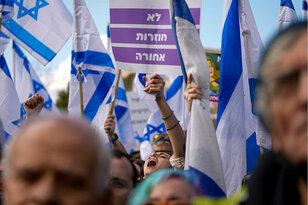
At the inaugural Younes Nazarian Memorial Lecture of the UCLA Y&S Nazarian Center for Israel Studies, writer Yossi Klein Halevi contended that mass demonstrations against the proposed judicial reforms of Prime Minister Netanyahu were reanimating the center in Israeli politics.
By Peggy McInerny, Director of Communications
“To be a liberal Israeli these days is to experience an anguish that I’ve never known in the 40 years that I’ve lived in Israel,” said Yossi Klein Halevi, who immigrated to the country from the U.S. in 1982. “I never recall losing sleep the way that I do now.
“What we’re experiencing in Israel is a convergence of assaults. This is the most corrupt, most politically extreme and most religiously fundamentalist government in Israel’s history. Any one of those assaults would be a formidable challenge. Coming together, [they have] really brought us to the edge of what feels like the abyss.”
A conflict over the meaning of Israel’s dual identities
Israel today is living through a dispute between the center and the right over what a Jewish state and a democratic state mean, said Halevi. Proposed reforms that would reduce the independence of the Israeli Supreme Court have sparked huge demonstrations nationwide by Israeli citizens, many of whom also object to the inclusion of extreme far-right politicians in the cabinet of Prime Minister Benjamin Netanyahu.
“The debate that we’re having today over democracy is: How do you define majority rule? Does a majority have the right to do whatever it decides if [it] wins an election, as this government did? Does winner take all? This government is saying, yes, we won the election and to oppose us is to oppose the democratic process.
“The liberal understanding of democracy is that there’s a delicate dance between the rights of the majority and the rights of a minority. When the government says that the [Supreme] Court is an undemocratic institution, they’re right. That’s its purpose. Its purpose is to be a check on [the] runaway power of an elected majority. And so there’s a profound disagreement [over] what we mean by democracy.”
Israel is not and never well be a paragon of pure democracy because it must constantly mediate between democratic norms and serious security threats, observed Halevi. “What makes Israeli democracy so precious, and I would argue so important for the world, is [that we are] the test case of democracy under extremity.
“I fear this government would up-end precisely that delicate balance, that search for decency under conditions that I believe would have defeated almost any country in our place.
“The second identity issue that is on the table,” he continued, “and I believe [will] become more and more prominent in the coming months, is what do we mean by a Jewish state?
“The classical Zionist, mainstream answer to this question, going back to the founding of Zionism, [is] that Israel was meant to be the state of the Jewish people, all of the Jewish people.”
In Halevi’s view, Rabbinic Judaism succeeded in holding the Jews together for 1,700 years in the diaspora, but broke down in the face of modernity in the 19th century, when Zionism arose to offer an alternative version of a unifying Jewish identity.
“There is good reason for why almost the entire ultra-Orthodox world in… pre-Holocaust Europe opposed Zionism, because they understood just how radical, how revolutionary Zionism was,” he continued.
“Now, it’s true that Zionism and the secular state went a long way to accommodat[e] the camp that defines ‘who is a Jew’ in classical Rabbinic Orthodox terms,” he commented. “I would define Israel as a secular state with too many religious laws… maybe like Ireland or Italy of two generations ago.
“The one [law] that most defines Israel as the state of the Jewish people, and not the state of Orthodox Judaism, is the Law of Return. And that’s precisely what this government intends to amend. So the next great fight that’s heading our way is going to be over how we define admission into the state of Israel.”
The contending definitions of Israel as a Jewish state highlight the difference between a modern state and a people, observed Halevi, who argued that the ultra-Orthodox and religious Zionists confuse a community with a people, and do not have an expansive notion of a modern state.
“For me, the definition of Israel as a Jewish and democratic state is that… Israel is, first of all, the state of every Jew in the world, whether or not they are citizens of Israel. And secondly, it is the state of all of its citizens, whether or not they are Jews.
“This government wants to expand and expand and expand the Jewishness of the state. And that seems to be antithetical to Israel’s best long term interests, which require the absorption to whatever extent is possible of Arab citizens into some sense of shared civic Israeli identity.”
Despite the gravity of the current political situation, Halevi was ultimately optimistic. “This is potentially one of the most positive moments in Israeli history,” he said.
“And I say that because it has forced us not only to deal with identity issues that we must confront, but also to deal with the long-simmering distortions in the Israeli system.” Among those distortions, he identified both “the ultra-Orthodox state within a state” and settler violence, which he believes has moved from the farthest fringe of the Israeli right to the heart of Israeli power.
“What we’re experiencing today on the streets is the rise of a passionate center,” he concluded. “The center in Israel today is no less passionate, no less militant, than the extremes.
“[T]he center has …moved from a mood to an ideology. And that ideology is what I’ve tried to lay out here: a liberal understanding, a classical Zionist understanding of Israel as a Jewish state and a democratic state, and [an insistence] on the non-negotiable entwinement of these two identities.
“On the left, there is a wavering about a Jewish state. On the right, we’re seeing the erosion of support for a democratic state. It’s the center that will fight and preserve, I believe, the integrity of these two identities.”
Watch the video of Halevi's full presentation here.
From the Hartman Institute website
By Peggy McInerny, Director of Communications
“To be a liberal Israeli these days is to experience an anguish that I’ve never known in the 40 years that I’ve lived in Israel,” said Yossi Klein Halevi, who immigrated to the country from the U.S. in 1982. “I never recall losing sleep the way that I do now.
“What we’re experiencing in Israel is a convergence of assaults. This is the most corrupt, most politically extreme and most religiously fundamentalist government in Israel’s history. Any one of those assaults would be a formidable challenge. Coming together, [they have] really brought us to the edge of what feels like the abyss.”
A conflict over the meaning of Israel’s dual identities
Israel today is living through a dispute between the center and the right over what a Jewish state and a democratic state mean, said Halevi. Proposed reforms that would reduce the independence of the Israeli Supreme Court have sparked huge demonstrations nationwide by Israeli citizens, many of whom also object to the inclusion of extreme far-right politicians in the cabinet of Prime Minister Benjamin Netanyahu.
“The debate that we’re having today over democracy is: How do you define majority rule? Does a majority have the right to do whatever it decides if [it] wins an election, as this government did? Does winner take all? This government is saying, yes, we won the election and to oppose us is to oppose the democratic process.
“The liberal understanding of democracy is that there’s a delicate dance between the rights of the majority and the rights of a minority. When the government says that the [Supreme] Court is an undemocratic institution, they’re right. That’s its purpose. Its purpose is to be a check on [the] runaway power of an elected majority. And so there’s a profound disagreement [over] what we mean by democracy.”
Israel is not and never well be a paragon of pure democracy because it must constantly mediate between democratic norms and serious security threats, observed Halevi. “What makes Israeli democracy so precious, and I would argue so important for the world, is [that we are] the test case of democracy under extremity.
“I fear this government would up-end precisely that delicate balance, that search for decency under conditions that I believe would have defeated almost any country in our place.
“The second identity issue that is on the table,” he continued, “and I believe [will] become more and more prominent in the coming months, is what do we mean by a Jewish state?
“The classical Zionist, mainstream answer to this question, going back to the founding of Zionism, [is] that Israel was meant to be the state of the Jewish people, all of the Jewish people.”
In Halevi’s view, Rabbinic Judaism succeeded in holding the Jews together for 1,700 years in the diaspora, but broke down in the face of modernity in the 19th century, when Zionism arose to offer an alternative version of a unifying Jewish identity.
“There is good reason for why almost the entire ultra-Orthodox world in… pre-Holocaust Europe opposed Zionism, because they understood just how radical, how revolutionary Zionism was,” he continued.
“Now, it’s true that Zionism and the secular state went a long way to accommodat[e] the camp that defines ‘who is a Jew’ in classical Rabbinic Orthodox terms,” he commented. “I would define Israel as a secular state with too many religious laws… maybe like Ireland or Italy of two generations ago.
“The one [law] that most defines Israel as the state of the Jewish people, and not the state of Orthodox Judaism, is the Law of Return. And that’s precisely what this government intends to amend. So the next great fight that’s heading our way is going to be over how we define admission into the state of Israel.”
The contending definitions of Israel as a Jewish state highlight the difference between a modern state and a people, observed Halevi, who argued that the ultra-Orthodox and religious Zionists confuse a community with a people, and do not have an expansive notion of a modern state.
“For me, the definition of Israel as a Jewish and democratic state is that… Israel is, first of all, the state of every Jew in the world, whether or not they are citizens of Israel. And secondly, it is the state of all of its citizens, whether or not they are Jews.
“This government wants to expand and expand and expand the Jewishness of the state. And that seems to be antithetical to Israel’s best long term interests, which require the absorption to whatever extent is possible of Arab citizens into some sense of shared civic Israeli identity.”
Despite the gravity of the current political situation, Halevi was ultimately optimistic. “This is potentially one of the most positive moments in Israeli history,” he said.
“And I say that because it has forced us not only to deal with identity issues that we must confront, but also to deal with the long-simmering distortions in the Israeli system.” Among those distortions, he identified both “the ultra-Orthodox state within a state” and settler violence, which he believes has moved from the farthest fringe of the Israeli right to the heart of Israeli power.
“What we’re experiencing today on the streets is the rise of a passionate center,” he concluded. “The center in Israel today is no less passionate, no less militant, than the extremes.
“[T]he center has …moved from a mood to an ideology. And that ideology is what I’ve tried to lay out here: a liberal understanding, a classical Zionist understanding of Israel as a Jewish state and a democratic state, and [an insistence] on the non-negotiable entwinement of these two identities.
“On the left, there is a wavering about a Jewish state. On the right, we’re seeing the erosion of support for a democratic state. It’s the center that will fight and preserve, I believe, the integrity of these two identities.”
Watch the video of Halevi's full presentation here.
From the Hartman Institute website
Why do we read the Book Of Ruth on Shavuot?
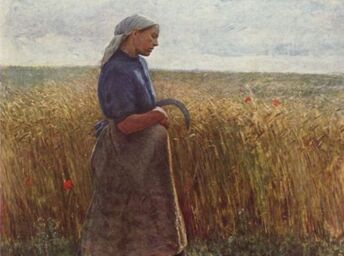
In traditional settings, the Book Of Ruth is read on the second day of Shavuot. The book is about a Moabite woman who, after her husband dies, follows her Israelite mother-in-law, Naomi, into the Jewish people with the famous words “whither you go, I will go, wherever you lodge, I will lodge, your people will be my people, and your God will be my God.” She asserts the right of the poor to glean the leftovers of the barley harvest, breaks the normal rules of behavior to confront her kinsman Boaz, is redeemed by him for marriage, and becomes the ancestor of King David.
The custom of reading the Book Of Ruth is already mentioned in the Talmudic tractate of Soferim (14:16), and the fact that the first chapter of the Midrash of Ruth deals with the giving of the Torah is evidence that this custom was already well established by the time this Midrash was compiled.
There are many explanations given for the reading of Ruth on Shavuot. The most quoted reason is that Ruth’s coming to Israel took place around the time of Shavuot, late spring, and her acceptance into the Jewish faith was analogous to the Jewish people accepting God’s Torah.
A second explanation relates to genealogy. Since the Book Of Ruth ends with the genealogy of David, Ruth being his forbearer, it has been suggested that it is read on Shavuot because King David is believed to have died on Shavuot.
Another reason for the reading of Ruth on Shavuot is that its story takes place at harvest time, Ruth meeting Boaz out in the fields during harvest. The holiday of Shavuot also occurs at the time of the spring harvest.
The story of Ruth’s conversion to Judaism teaches us humility and gratitude about our Jewish identity. It suggests that our Jewishness is not guaranteed but rather requires that we continually reconvert, like Ruth, and accept the Torah of our ancestors each year anew.
By RABBI RONALD H. ISAACS (Sourced in part from myJewishlearning.com)
The custom of reading the Book Of Ruth is already mentioned in the Talmudic tractate of Soferim (14:16), and the fact that the first chapter of the Midrash of Ruth deals with the giving of the Torah is evidence that this custom was already well established by the time this Midrash was compiled.
There are many explanations given for the reading of Ruth on Shavuot. The most quoted reason is that Ruth’s coming to Israel took place around the time of Shavuot, late spring, and her acceptance into the Jewish faith was analogous to the Jewish people accepting God’s Torah.
A second explanation relates to genealogy. Since the Book Of Ruth ends with the genealogy of David, Ruth being his forbearer, it has been suggested that it is read on Shavuot because King David is believed to have died on Shavuot.
Another reason for the reading of Ruth on Shavuot is that its story takes place at harvest time, Ruth meeting Boaz out in the fields during harvest. The holiday of Shavuot also occurs at the time of the spring harvest.
The story of Ruth’s conversion to Judaism teaches us humility and gratitude about our Jewish identity. It suggests that our Jewishness is not guaranteed but rather requires that we continually reconvert, like Ruth, and accept the Torah of our ancestors each year anew.
By RABBI RONALD H. ISAACS (Sourced in part from myJewishlearning.com)
Why study Torah all night on the holiday of Shavuot?
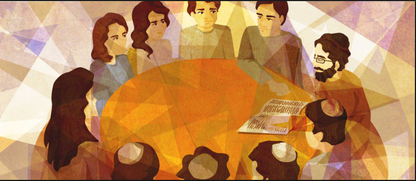
The holiday of Shavuot, celebrated this coming week, is understood by Jewish tradition to be the time when God gave the Israelites the Torah at Mount Sinai. It is traditionally celebrated with dairy foods and intensive Torah study, with some staying up all night to learn. These all-night study sessions, known as Tikkun Leil Shavuot, are held by Jewish communities of different denominations and geographies and are the only widely observed Jewish ritual involving staying up all night. Though the custom is widespread, there are few classical sources to support it. So why do we do it?
On its face, the connection is obvious. Shavuot celebrates receiving the Torah, so of course we would honor Shavuot with abundant Torah study. But upon reflection, this reason seems less than convincing. How high is the quality of Torah study in the middle of the night? As the hours tick by, is anyone even paying attention to the teacher?
A more common explanation is that Tikkun Leil Shavuot is precisely that — a tikkun (literally “rectification”) for what went wrong on that original Shavuot at Sinai. The Israelites, according to this commentary, slept-in on the day they were meant to receive the Torah. In a sort of penance for that failing, we make sure not to miss Shavuot morning by pulling an all-nighter the night before.
I would like to suggest an alternate explanation, one focused less on learning and preparedness and more on the experience of receiving the Torah. The goal of Shavuot night is not Torah learning — one can study Torah any day of the year. The goal is to experience something of the radical encounter with God at Sinai.
In the book of Exodus, we find this description of what had transpired as God descended on the mountain: “And the entire people saw the thunder and lightning and the sound of the shofar and the mountain in smoke. The nation saw, they trembled with fear, and they stayed at a distance. They said to Moses, ‘Speak to us yourself and we will listen. But do not have God speak to us or we will die.’”
In the Torah’s telling, the encounter with God was an immersive experience. As if attending a concert with overwhelming audiovisual components, the people are at first entranced and then overwhelmed by what they’re experiencing, backtracking in fear. They are so overpowered they are unable to distinguish between the senses — hence they “saw” the “sound of the shofar.” Overawed by all of this, they beg off, asking to have Moses serve as an intermediary rather than encounter God directly again.
This should not be surprising — it makes sense that an encounter with God should be overwhelming, an experience that scrambles the senses and shifts one’s consciousness. And that’s what we’re looking for on Shavuot. Tikkun Leil Shavuot isn’t primarily an opportunity to learn, nor a chance to fix some millennia-old mishap. It is meant precisely to simulate that total immersive experience.
We do that by occupying ourselves entirely with Torah — and nothing else. We learn until exhausted, going at it until we just can’t anymore. Depriving ourselves of sleep brings our body into the experience inevitably effecting a shift in consciousness. Taken together, this practice creates an intense experience, an all-encompassing engagement with God and Torah — just as the Israelites experienced at Mount Sinai.
BY RABBI SHLOMO ZUCKIER. This article initially appeared in My Jewish Learning’s Shabbat newsletter Recharge on May 20, 2023. To sign up to receive Recharge each week in your inbox, click here.
On its face, the connection is obvious. Shavuot celebrates receiving the Torah, so of course we would honor Shavuot with abundant Torah study. But upon reflection, this reason seems less than convincing. How high is the quality of Torah study in the middle of the night? As the hours tick by, is anyone even paying attention to the teacher?
A more common explanation is that Tikkun Leil Shavuot is precisely that — a tikkun (literally “rectification”) for what went wrong on that original Shavuot at Sinai. The Israelites, according to this commentary, slept-in on the day they were meant to receive the Torah. In a sort of penance for that failing, we make sure not to miss Shavuot morning by pulling an all-nighter the night before.
I would like to suggest an alternate explanation, one focused less on learning and preparedness and more on the experience of receiving the Torah. The goal of Shavuot night is not Torah learning — one can study Torah any day of the year. The goal is to experience something of the radical encounter with God at Sinai.
In the book of Exodus, we find this description of what had transpired as God descended on the mountain: “And the entire people saw the thunder and lightning and the sound of the shofar and the mountain in smoke. The nation saw, they trembled with fear, and they stayed at a distance. They said to Moses, ‘Speak to us yourself and we will listen. But do not have God speak to us or we will die.’”
In the Torah’s telling, the encounter with God was an immersive experience. As if attending a concert with overwhelming audiovisual components, the people are at first entranced and then overwhelmed by what they’re experiencing, backtracking in fear. They are so overpowered they are unable to distinguish between the senses — hence they “saw” the “sound of the shofar.” Overawed by all of this, they beg off, asking to have Moses serve as an intermediary rather than encounter God directly again.
This should not be surprising — it makes sense that an encounter with God should be overwhelming, an experience that scrambles the senses and shifts one’s consciousness. And that’s what we’re looking for on Shavuot. Tikkun Leil Shavuot isn’t primarily an opportunity to learn, nor a chance to fix some millennia-old mishap. It is meant precisely to simulate that total immersive experience.
We do that by occupying ourselves entirely with Torah — and nothing else. We learn until exhausted, going at it until we just can’t anymore. Depriving ourselves of sleep brings our body into the experience inevitably effecting a shift in consciousness. Taken together, this practice creates an intense experience, an all-encompassing engagement with God and Torah — just as the Israelites experienced at Mount Sinai.
BY RABBI SHLOMO ZUCKIER. This article initially appeared in My Jewish Learning’s Shabbat newsletter Recharge on May 20, 2023. To sign up to receive Recharge each week in your inbox, click here.
How do we celebrate Yom Haatzma'ut, Israel's Independence Day?
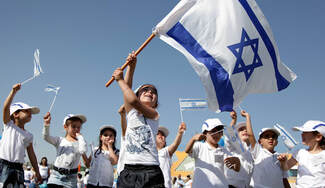
Yom Haatzmaut, Israel’s Independence Day is celebrated on the fifth day of the month of Iyar, which is the Hebrew date of the formal establishment of the State of Israel, when members of the “provisional government” read and signed a Declaration of Independence in Tel Aviv. The original date corresponded to May 14, 1948.
Most of the Jewish communities in the Western world have incorporated this modern holiday into their calendars, but some North American Jewish communities hold the public celebrations on a following Sunday in order to attract more participation. In the State of Israel it is a formal holiday, so almost everyone has the day off.
Yom Ha’atzmaut in Israel is always preceded by Yom Hazikaron, Israel’s Memorial Day for the fallen soldiers. The official “switch” from Yom Hazikaron to Yom Ha’atzmaut takes place a few minutes after sundown, with a ceremony on Mount Herzl in Jerusalem in which the flag is raised from half staff (due to Memorial Day) to the top of the pole.
The president of Israel delivers a speech of congratulations, and soldiers representing the Army, Navy, and Air Force parade with their flags. In recent decades this small-scale parade has replaced the large-scale daytime parade, which was the main event during the 1950s and ’60s. The evening parade is followed by a torch lighting (hadlakat masuot) ceremony, which marks the country’s achievements in all spheres of life.
Israeli citizens celebrate Yom Ha’atzmaut in a variety of ways. In the cities, the nighttime festivities may be found on the main streets. Crowds will gather to watch public shows offered for free by the municipalities and the government. Many spend the night dancing Israeli folk-dances or singing Israeli songs. During the daytime thousands of Israeli families go out on hikes and picnics. Army camps are open for civilians to visit and to display the recent technological achievements of the Israeli Defense Forces. Yom Ha’atzmaut is concluded with the ceremony of granting the “Israel Prize” recognizing individual Israelis for their unique contribution to the country’s culture, science, arts, and the humanities.
The religious character of Yom Ha’atzmaut is still in the process of formation, and is still subject to debate. The Chief Rabbinate of the State (which consists of Orthodox rabbis) has decided that this day should be marked with the recitation of Hallel (psalms of praise), similar to other joyous holidays, and with the reading of a special haftarah (prophetic portion). (Sourced in part from myJewishlearning.com)
Most of the Jewish communities in the Western world have incorporated this modern holiday into their calendars, but some North American Jewish communities hold the public celebrations on a following Sunday in order to attract more participation. In the State of Israel it is a formal holiday, so almost everyone has the day off.
Yom Ha’atzmaut in Israel is always preceded by Yom Hazikaron, Israel’s Memorial Day for the fallen soldiers. The official “switch” from Yom Hazikaron to Yom Ha’atzmaut takes place a few minutes after sundown, with a ceremony on Mount Herzl in Jerusalem in which the flag is raised from half staff (due to Memorial Day) to the top of the pole.
The president of Israel delivers a speech of congratulations, and soldiers representing the Army, Navy, and Air Force parade with their flags. In recent decades this small-scale parade has replaced the large-scale daytime parade, which was the main event during the 1950s and ’60s. The evening parade is followed by a torch lighting (hadlakat masuot) ceremony, which marks the country’s achievements in all spheres of life.
Israeli citizens celebrate Yom Ha’atzmaut in a variety of ways. In the cities, the nighttime festivities may be found on the main streets. Crowds will gather to watch public shows offered for free by the municipalities and the government. Many spend the night dancing Israeli folk-dances or singing Israeli songs. During the daytime thousands of Israeli families go out on hikes and picnics. Army camps are open for civilians to visit and to display the recent technological achievements of the Israeli Defense Forces. Yom Ha’atzmaut is concluded with the ceremony of granting the “Israel Prize” recognizing individual Israelis for their unique contribution to the country’s culture, science, arts, and the humanities.
The religious character of Yom Ha’atzmaut is still in the process of formation, and is still subject to debate. The Chief Rabbinate of the State (which consists of Orthodox rabbis) has decided that this day should be marked with the recitation of Hallel (psalms of praise), similar to other joyous holidays, and with the reading of a special haftarah (prophetic portion). (Sourced in part from myJewishlearning.com)
Why do traditional Jews count each day from Passover to Shavuot, Sefirat HaOmer?
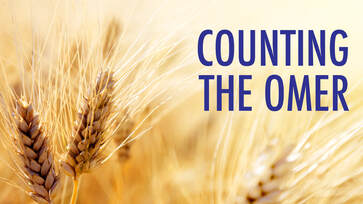
We often flow unaware from one moment on the calendar to the next. There are too many times when we fail to remember what we did last month, last week or even yesterday. There are too many times when the year breezes past us and before we know it, we are another year older. This pattern and this way of being is sharply interrupted by the ritual known as the Sefirat HaOmer, the Counting of the Omer.
In Biblical times the Omer was a grain offering brought to the Temple in Jerusalem and since then has transformed into a ritual with rhythm and movement all of its own. Each night people from every corner of the globe count how many nights have elapsed from the second night of Passover until the holiday of Shavuot, which celebrates the Revelation of the Torah at Mount Sinai. Every night adds from the night before, slowly building and rising in anticipation and progression towards Shavuot. This ritual concretely and conceptually links the holiday of Passover to the holiday of Shavuot. It makes a profound statement about the nature of the freedom won in Egypt by the ancient Israelites. It sets out to define the very state of what it means to be free.
If the Exodus from Egypt was an unshackling of the physical bonds that held the people of Israel to servitude and bondage then the Revelation at Sinai was the unshackling of the emotional, psychological and spiritual bonds that kept the people in an oppression of the soul and the heart. The 18th century Italian mystic and philosopher Rabbi Moshe Chaim Luzzatto underscored this when he commented that the reason Pharaoh increased the physical labor of the Israelites after Moses made his first plea for their release was to further suppress their spirit because the fatigue and tiredness of the body destroys the aspirations of the spirit.
This is the intention behind the count between Passover and Shavuot. The Talmudic rabbis teach that every person in each generation is obligated to see himself or herself as having left the servitude of Egypt and an intrinsic part of that process is the progressive march from the experience of physical freedom to a fuller freedom encompassing not just body but spirit as well. The rituals of the Passover seder help us reconnect into the experience of the Exodus and the deeply important ritual of the Omer help us walk and move through our own deserts towards a life of whole and total freedom of the spirit.
By BEN GREENBERG | APRIL 12, 2012
RABBIS WITHOUT BORDERS
Rabbis Without Borders is a dynamic forum for exploring contemporary issues in the Jewish world and beyond. Written by rabbis of different denominations, viewpoints, and parts of the country, Rabbis Without Borders is a project of Clal – The National Jewish Center for Learning and Leadership.
In Biblical times the Omer was a grain offering brought to the Temple in Jerusalem and since then has transformed into a ritual with rhythm and movement all of its own. Each night people from every corner of the globe count how many nights have elapsed from the second night of Passover until the holiday of Shavuot, which celebrates the Revelation of the Torah at Mount Sinai. Every night adds from the night before, slowly building and rising in anticipation and progression towards Shavuot. This ritual concretely and conceptually links the holiday of Passover to the holiday of Shavuot. It makes a profound statement about the nature of the freedom won in Egypt by the ancient Israelites. It sets out to define the very state of what it means to be free.
If the Exodus from Egypt was an unshackling of the physical bonds that held the people of Israel to servitude and bondage then the Revelation at Sinai was the unshackling of the emotional, psychological and spiritual bonds that kept the people in an oppression of the soul and the heart. The 18th century Italian mystic and philosopher Rabbi Moshe Chaim Luzzatto underscored this when he commented that the reason Pharaoh increased the physical labor of the Israelites after Moses made his first plea for their release was to further suppress their spirit because the fatigue and tiredness of the body destroys the aspirations of the spirit.
This is the intention behind the count between Passover and Shavuot. The Talmudic rabbis teach that every person in each generation is obligated to see himself or herself as having left the servitude of Egypt and an intrinsic part of that process is the progressive march from the experience of physical freedom to a fuller freedom encompassing not just body but spirit as well. The rituals of the Passover seder help us reconnect into the experience of the Exodus and the deeply important ritual of the Omer help us walk and move through our own deserts towards a life of whole and total freedom of the spirit.
By BEN GREENBERG | APRIL 12, 2012
RABBIS WITHOUT BORDERS
Rabbis Without Borders is a dynamic forum for exploring contemporary issues in the Jewish world and beyond. Written by rabbis of different denominations, viewpoints, and parts of the country, Rabbis Without Borders is a project of Clal – The National Jewish Center for Learning and Leadership.
What is on the Seder Plate?
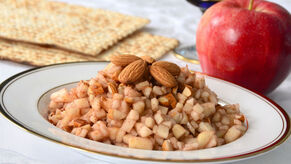
The Passover Haggadah recommends that each person see him or herself as having personally come forth out of Egypt. Accordingly, the seder is one of the most sensory-heavy rituals of the Jewish year. During the seder, we don’t just tell the story of the Exodus, we see, smell, feel, and taste liberation.
Many of the elements of this sensory experience appear on the seder plate (k’arah), which serves as the centerpiece of the seder table. The seder plate traditionally holds five or six items, each of which symbolizes a part (or multiple parts) of the Passover story.
The Seder Plate Items
Karpas (a green vegetable, most often parsley)
Karpas represents the initial flourishing of the Israelites during the first years in Egypt. At the end of the biblical book of Genesis, Joseph moves his family to Egypt, where he becomes the second-in-command to Pharaoh. Protected by Joseph’s exalted status, the family lives safely for several generations and proliferates greatly, becoming a great nation. The size of this growing population frightens the new Pharaoh, who enslaves the Israelites, lest they make war on Egypt. Even under slave conditions, the Israelites continue to reproduce, and Pharaoh eventually decrees that all baby boys be drowned in the Nile. In the course of the seder, we dip the karpas in salt water (Ashkenazi custom) or vinegar (Sephardi custom) in order to taste both the hope of new birth and the tears that the Israelite slaves shed over their condition.
Karpas also symbolizes the new spring. One of the names for Passover is Hag Ha-Aviv or the “holiday of spring.” Right around Passover the first buds emerge, and we look forward to the warmth and sense of possibility that accompany the beginning of spring. Some Ashkenazi Jews use a potato for karpas, as green vegetables were not readily available in Eastern Europe.
Haroset (sweet fruit paste symbolizing mortar)
This mix of fruits, wine or honey, and nuts symbolizes the mortar that the Israelite slaves used to construct buildings for Pharaoh. The name itself comes from the Hebrew word cheres or clay. Ashkenazi Jews generally include apples in haroset, a nod to the midrashic tradition that the Israelite women would go into the fields and seduce their husbands under the apple trees, in defiance of the Egyptian attempts to prevent reproduction by separating men and women.
Sephardic recipes for haroset allude to this fertility symbolism by including fruits, such as dates and figs, mentioned in Song of Songs, the biblical book that is most infused with images of love and sexuality.
Maror, (bitter herbs, such as horseradish)
This bitter herb allows us to taste the bitterness of slavery. Today, most Jews use horseradish as maror. Originally, though, maror was probably a bitter lettuce, such as romaine, or a root, such as chicory. Like life in Egypt, these lettuces and roots taste sweet when one first bites into them, but then become bitter as one eats more. We dip maror into haroset in order to associate the bitterness of slavery with the work that caused so much of this bitterness.
Hazeret (second bitter herb, often Romaine lettuce)
A second bitter herb, used in korech or the Hillel sandwich, which consists of matzah and bitter herbs (some add haroset as well). Many Jews use horseradish for maror and Romaine lettuce or another bitter green for hazeret. Others use the same vegetable for both parts of the seder, and do not include hazeret on the seder plate at all.
Zero’ah (shank bone, usually a chicken bone)
A roasted lamb shank bone that symbolizes the lamb that Jews sacrificed as the special Passover offering when the Temple stood in Jerusalem. The zeroa does not play an active role in the seder, but serves as a visual reminder of the sacrifice that the Israelites offered immediately before leaving Egypt and that Jews continued to offer until the destruction of the Temple. Vegetarians often substitute a roasted beet, both because the red of the beet resembles the blood of the sacrifice and because the Talmud mentions beets as one of the vegetables sometimes dipped during the seder.
Beitzah (egg)
A roasted or hard-boiled egg that symbolizes the hagigah sacrifice, which would be offered on every holiday (including Passover) when the Temple stood. The roundness of the egg also represents the cycle of life — even in the most painful of times, there is always hope for a new beginning.
How Is the Seder Plate Arranged?
There are a few traditions regarding the arrangement of items on the seder plate. Most commonly, the maror is placed in the middle of the plate. The hazeret is at the six o’clock position followed by, moving clockwise, karpas (seven o’clock), beitzah (11 o’clock), z’roa (one o’clock), and haroset (five o’clock).
What Else Is On the Seder Table?
In addition to the items on the seder plate, the seder table should also have three pieces of matzah wrapped or covered in a cloth and a container of salt water or vinegar in which to dip the karpas. Some seder plates have a compartment for matzah underneath, or include space for salt water among the other symbols. In most cases, though, matzah and salt water or vinegar sit near, but not on, the seder plate.
Many contemporary Jews add additional items to the seder plate to symbolize modern liberation struggles. The most common new item is an orange, which honors the role of women and/or gays and lesbians in Jewish life. The orange symbolizes the fruitfulness that these previously marginalized communities bring to Jewish life. Some Jews place an olive on the seder plate to signal hope for eventual peace between Israelis and Palestinians.
One way to encourage participation in the seder is to ask each guest to bring one item that, for him or her, represents liberation. Participants might bring family heirlooms that remind them of their family’s immigration story, newspaper stories about current liberation struggles, or other symbolic objects. Each guest should place this item near the seder plate and, at an appropriate time in the seder, explain its significance. (Sourced in part from myJewishlearning.com)
Many of the elements of this sensory experience appear on the seder plate (k’arah), which serves as the centerpiece of the seder table. The seder plate traditionally holds five or six items, each of which symbolizes a part (or multiple parts) of the Passover story.
The Seder Plate Items
Karpas (a green vegetable, most often parsley)
Karpas represents the initial flourishing of the Israelites during the first years in Egypt. At the end of the biblical book of Genesis, Joseph moves his family to Egypt, where he becomes the second-in-command to Pharaoh. Protected by Joseph’s exalted status, the family lives safely for several generations and proliferates greatly, becoming a great nation. The size of this growing population frightens the new Pharaoh, who enslaves the Israelites, lest they make war on Egypt. Even under slave conditions, the Israelites continue to reproduce, and Pharaoh eventually decrees that all baby boys be drowned in the Nile. In the course of the seder, we dip the karpas in salt water (Ashkenazi custom) or vinegar (Sephardi custom) in order to taste both the hope of new birth and the tears that the Israelite slaves shed over their condition.
Karpas also symbolizes the new spring. One of the names for Passover is Hag Ha-Aviv or the “holiday of spring.” Right around Passover the first buds emerge, and we look forward to the warmth and sense of possibility that accompany the beginning of spring. Some Ashkenazi Jews use a potato for karpas, as green vegetables were not readily available in Eastern Europe.
Haroset (sweet fruit paste symbolizing mortar)
This mix of fruits, wine or honey, and nuts symbolizes the mortar that the Israelite slaves used to construct buildings for Pharaoh. The name itself comes from the Hebrew word cheres or clay. Ashkenazi Jews generally include apples in haroset, a nod to the midrashic tradition that the Israelite women would go into the fields and seduce their husbands under the apple trees, in defiance of the Egyptian attempts to prevent reproduction by separating men and women.
Sephardic recipes for haroset allude to this fertility symbolism by including fruits, such as dates and figs, mentioned in Song of Songs, the biblical book that is most infused with images of love and sexuality.
Maror, (bitter herbs, such as horseradish)
This bitter herb allows us to taste the bitterness of slavery. Today, most Jews use horseradish as maror. Originally, though, maror was probably a bitter lettuce, such as romaine, or a root, such as chicory. Like life in Egypt, these lettuces and roots taste sweet when one first bites into them, but then become bitter as one eats more. We dip maror into haroset in order to associate the bitterness of slavery with the work that caused so much of this bitterness.
Hazeret (second bitter herb, often Romaine lettuce)
A second bitter herb, used in korech or the Hillel sandwich, which consists of matzah and bitter herbs (some add haroset as well). Many Jews use horseradish for maror and Romaine lettuce or another bitter green for hazeret. Others use the same vegetable for both parts of the seder, and do not include hazeret on the seder plate at all.
Zero’ah (shank bone, usually a chicken bone)
A roasted lamb shank bone that symbolizes the lamb that Jews sacrificed as the special Passover offering when the Temple stood in Jerusalem. The zeroa does not play an active role in the seder, but serves as a visual reminder of the sacrifice that the Israelites offered immediately before leaving Egypt and that Jews continued to offer until the destruction of the Temple. Vegetarians often substitute a roasted beet, both because the red of the beet resembles the blood of the sacrifice and because the Talmud mentions beets as one of the vegetables sometimes dipped during the seder.
Beitzah (egg)
A roasted or hard-boiled egg that symbolizes the hagigah sacrifice, which would be offered on every holiday (including Passover) when the Temple stood. The roundness of the egg also represents the cycle of life — even in the most painful of times, there is always hope for a new beginning.
How Is the Seder Plate Arranged?
There are a few traditions regarding the arrangement of items on the seder plate. Most commonly, the maror is placed in the middle of the plate. The hazeret is at the six o’clock position followed by, moving clockwise, karpas (seven o’clock), beitzah (11 o’clock), z’roa (one o’clock), and haroset (five o’clock).
What Else Is On the Seder Table?
In addition to the items on the seder plate, the seder table should also have three pieces of matzah wrapped or covered in a cloth and a container of salt water or vinegar in which to dip the karpas. Some seder plates have a compartment for matzah underneath, or include space for salt water among the other symbols. In most cases, though, matzah and salt water or vinegar sit near, but not on, the seder plate.
Many contemporary Jews add additional items to the seder plate to symbolize modern liberation struggles. The most common new item is an orange, which honors the role of women and/or gays and lesbians in Jewish life. The orange symbolizes the fruitfulness that these previously marginalized communities bring to Jewish life. Some Jews place an olive on the seder plate to signal hope for eventual peace between Israelis and Palestinians.
One way to encourage participation in the seder is to ask each guest to bring one item that, for him or her, represents liberation. Participants might bring family heirlooms that remind them of their family’s immigration story, newspaper stories about current liberation struggles, or other symbolic objects. Each guest should place this item near the seder plate and, at an appropriate time in the seder, explain its significance. (Sourced in part from myJewishlearning.com)
In a nutshell, what is Passover all about?
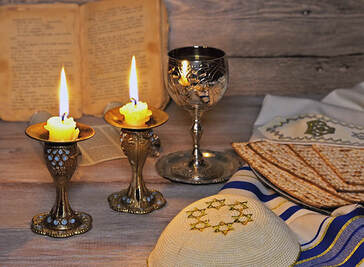
The origins of Passover lie in pre-Israelite spring celebrations of the first grain harvest and the births of the first lambs of the season. In the Jewish context, it celebrates God’s great redemptive act, leading the Israelites out from slavery in Egypt to freedom. Together with Shavuot (the Festival of Weeks) and Sukkot (The Festival of Booths), Passover is one of the three ancient Israelite pilgrimage festivals, during which adult males journeyed to the Temple in Jerusalem to offer sacrifices and bask in the divine presence. Since the destruction of the Second Temple in 70 CE, the focus of Passover shifted to the ritual meal, called the seder, which normally takes place at home.
In anticipation of Passover, it is traditional to engage in a thorough spring cleaning. During the holiday, the food reflects the major theme of Passover and is intended to help Jews relive God’s great redemptive act, albeit in a vicarious manner. Because the Israelites had no time to let their bread rise as they hurriedly left Egypt, Jewish law forbids eating nor possessing any food that contains leavened grains.Therefore, a major part of the preparations for Passover consists of removing all traces of leavened foods from the home and replacing them with unleavened foods (though many Jews prefer to “sell” some leavened products to a non-Jew for the duration of the holiday). This necessitates both a massive cleanup and the replacement of one’s ordinary dishes with special Passover ones. It also requires a shopping expedition to stock the kitchen with special kosher-for-Passover foods.
The Passover seder is a carefully choreographed ritual meal that typically takes place in the home. A number of symbolic foods are laid out on the table, of which the most important is the matzah, the unleavened “bread of affliction.” The seder follows a script laid out in the Haggadah, a book that tells the story of the redemption from Egypt. Although the Haggadah is a traditional text, many people add to it and revise it in accord with their theology and understanding of God’s redemptive actions in the world. (Sourced in part from myJewishlearning.com)
In anticipation of Passover, it is traditional to engage in a thorough spring cleaning. During the holiday, the food reflects the major theme of Passover and is intended to help Jews relive God’s great redemptive act, albeit in a vicarious manner. Because the Israelites had no time to let their bread rise as they hurriedly left Egypt, Jewish law forbids eating nor possessing any food that contains leavened grains.Therefore, a major part of the preparations for Passover consists of removing all traces of leavened foods from the home and replacing them with unleavened foods (though many Jews prefer to “sell” some leavened products to a non-Jew for the duration of the holiday). This necessitates both a massive cleanup and the replacement of one’s ordinary dishes with special Passover ones. It also requires a shopping expedition to stock the kitchen with special kosher-for-Passover foods.
The Passover seder is a carefully choreographed ritual meal that typically takes place in the home. A number of symbolic foods are laid out on the table, of which the most important is the matzah, the unleavened “bread of affliction.” The seder follows a script laid out in the Haggadah, a book that tells the story of the redemption from Egypt. Although the Haggadah is a traditional text, many people add to it and revise it in accord with their theology and understanding of God’s redemptive actions in the world. (Sourced in part from myJewishlearning.com)
How and why do we celebrate Purim?

Jewish communities around the world celebrate Purim as a holiday of feasting and gladness, gift-giving and tzedakah (charity), revelry and imbibing. It is one of the most popular Jewish holidays for families and children. The celebration of Purim is based on the story found in the biblical Book of Esther. A tractate of the Mishnah (and hence the Talmud) is devoted to it as well. Purim is a time when Jewish communities, like the community in the Book of Esther, become particularly aware of the fragility and even the danger of living in the Diaspora, as a people “scattered abroad and dispersed among the peoples” (Esther 3:8).
The Megillah Reading
The primary communal observance connected to Purim is the mitzvah (commandment) of reading the Book of Esther, called the Megillah (the scroll). It is supposed to be read in the synagogue with a minyan (quorum) present. The scroll is read twice, once in the evening and once after the Torah service the next morning. The Megillah is in the form of a parchment scroll, handwritten like a Torah .
During the reading, it is customary for the congregation to drown out the name of Haman by making noise, usually using a special noisemaker called a gragger, whenever the reader utters the villain’s name. Another custom is to read the verses listing the ten sons of Haman (found in chapter 9) in one breath. One theory regarding the significance of this practice says that it is done to symbolize how the brothers all died together, while a second theory suggests that we should not draw out the reading of the names so as not to gloat over their fate.
Traditionally, an additional Torah reading is added on the Shabbat before Purim that discusses the battle with Amalek. Jewish tradition views Amalek as the ancestor and in some ways the precursor of Haman. Both sought to annihilate the Jewish people, and both were thwarted in their plans.
There is another unique feature to communal Purim observance. Purim is celebrated in most of the world on the 14th of Adar. However, in Jerusalem it is observed on the 15th of Adar, because of the interpretation of Esther 9:18-19, “But the Jews that were in Shushan assembled together on the 13th day thereof, and on the 14th thereof; and on the 15th day of the same they rested, and made it a day of feasting and gladness. Therefore do the Jews of the villages, that dwell in the unwalled towns, make the 14th day of the month of Adar a day of gladness and feasting.” The sages concluded that Purim was celebrated on the 15th of Adar, as in Shushan, in cities that had been walled since the days of Joshua.
Mishloach Manot (Gift Baskets)
On Purim the Megillah mandates that we give gifts to friends (mishloach manot), usually of food, and to the poor (matanot l’evyonim). It is a tradition for congregations to collect money in memory of the half shekel collected in ancient days for the upkeep of the Temple. Purim is a time for carnivals and parties and masquerades. Most Jewish congregations hold special carnivals when we dress in costumes that commemorate the various characters of the Purim story. We perform humorous plays called Purim shpiels, which more often than not mock both the characters in the story and leaders in the Jewish community. (Sourced in part from myJewishlearning.com)
The Megillah Reading
The primary communal observance connected to Purim is the mitzvah (commandment) of reading the Book of Esther, called the Megillah (the scroll). It is supposed to be read in the synagogue with a minyan (quorum) present. The scroll is read twice, once in the evening and once after the Torah service the next morning. The Megillah is in the form of a parchment scroll, handwritten like a Torah .
During the reading, it is customary for the congregation to drown out the name of Haman by making noise, usually using a special noisemaker called a gragger, whenever the reader utters the villain’s name. Another custom is to read the verses listing the ten sons of Haman (found in chapter 9) in one breath. One theory regarding the significance of this practice says that it is done to symbolize how the brothers all died together, while a second theory suggests that we should not draw out the reading of the names so as not to gloat over their fate.
Traditionally, an additional Torah reading is added on the Shabbat before Purim that discusses the battle with Amalek. Jewish tradition views Amalek as the ancestor and in some ways the precursor of Haman. Both sought to annihilate the Jewish people, and both were thwarted in their plans.
There is another unique feature to communal Purim observance. Purim is celebrated in most of the world on the 14th of Adar. However, in Jerusalem it is observed on the 15th of Adar, because of the interpretation of Esther 9:18-19, “But the Jews that were in Shushan assembled together on the 13th day thereof, and on the 14th thereof; and on the 15th day of the same they rested, and made it a day of feasting and gladness. Therefore do the Jews of the villages, that dwell in the unwalled towns, make the 14th day of the month of Adar a day of gladness and feasting.” The sages concluded that Purim was celebrated on the 15th of Adar, as in Shushan, in cities that had been walled since the days of Joshua.
Mishloach Manot (Gift Baskets)
On Purim the Megillah mandates that we give gifts to friends (mishloach manot), usually of food, and to the poor (matanot l’evyonim). It is a tradition for congregations to collect money in memory of the half shekel collected in ancient days for the upkeep of the Temple. Purim is a time for carnivals and parties and masquerades. Most Jewish congregations hold special carnivals when we dress in costumes that commemorate the various characters of the Purim story. We perform humorous plays called Purim shpiels, which more often than not mock both the characters in the story and leaders in the Jewish community. (Sourced in part from myJewishlearning.com)
What’s is the historical significance of the Masada מצדה fortress in the Judean desert?
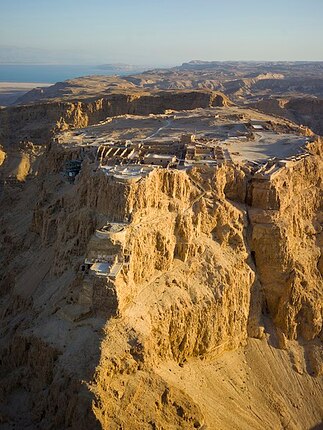
After the destruction of the Second Temple in 70 CE, additional members of the Sicarii fled Jerusalem and settled on the Masada mountaintop. According to Josephus, the Sicarii were an extremist Jewish splinter group antagonistic to a larger grouping, the Zealots, who carried the main burden of the rebellion.
In 73 CE, the Roman governor of Iudaea, Lucius Flavius Silva, headed the Roman legion X Fretensis and laid siege to Masada. The Roman legion surrounded Masada, building a circumvallation wall and then a siege ramp against the western face of the plateau. The ramp was complete in the spring of 73, after probably two to three months of siege, allowing the Romans to finally breach the wall of the fortress with a battering ram on April 16.
The Romans employed the X Legion and a number of auxiliary units and Jewish prisoners of war, totaling some 15,000 (of whom an estimated 8,000 to 9,000 were fighting men), in crushing Jewish resistance at Masada. A giant siege tower with a battering ram was constructed and moved laboriously up the completed ramp. According to Josephus, when Roman troops entered the fortress, they discovered that its defenders had set all the buildings but the food storerooms ablaze and committed mass suicide or killed each other, 960 men, women, and children in total.
Josephus wrote of two stirring speeches that the Sicari leader had made to convince his men to kill themselves. Only two women and five children were found alive.
(Sourced in part from Wikipedia)
In 73 CE, the Roman governor of Iudaea, Lucius Flavius Silva, headed the Roman legion X Fretensis and laid siege to Masada. The Roman legion surrounded Masada, building a circumvallation wall and then a siege ramp against the western face of the plateau. The ramp was complete in the spring of 73, after probably two to three months of siege, allowing the Romans to finally breach the wall of the fortress with a battering ram on April 16.
The Romans employed the X Legion and a number of auxiliary units and Jewish prisoners of war, totaling some 15,000 (of whom an estimated 8,000 to 9,000 were fighting men), in crushing Jewish resistance at Masada. A giant siege tower with a battering ram was constructed and moved laboriously up the completed ramp. According to Josephus, when Roman troops entered the fortress, they discovered that its defenders had set all the buildings but the food storerooms ablaze and committed mass suicide or killed each other, 960 men, women, and children in total.
Josephus wrote of two stirring speeches that the Sicari leader had made to convince his men to kill themselves. Only two women and five children were found alive.
(Sourced in part from Wikipedia)
What makes food Kosher or not?
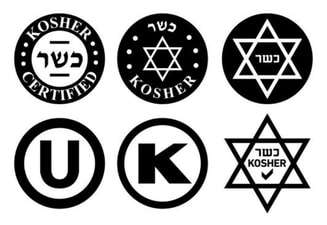
The consumption of food and drink, considered one of the great joys of life in the Torah, is subject to a number of restrictions in the Torah‘s legal passages. Among the land animals only certain types of mammals—cud-chewing species with split hooves—and a very small class of insects are approved, are kosher, for consumption by the Israelites. Only certain types of fowl are similarly acceptable. Among sea creatures, only fish with fins and scales may be consumed. The flesh of acceptable mammals and fowl could be consumed, but not their blood. One additional restriction on consuming such meat is the ban on cooking a kid in its own mother’s milk.
Rabbinic Judaism elaborated a series of practices intended to provide the details of behavior for putting the biblical restrictions into practice. The rabbis laid out complex rules for the slaughtering of animals and for the removal of blood from meat by salting it. Most notably, from the ban on cooking a kid in its mother’s milk, repeated three times in the Torah, the rabbis made a tripartite ban on combinations of the taste from the meat of a kosher animal (even kosher fowl) with the taste of the milk of a kosher mammal. One is forbidden by rabbinic law to cook such a combination, to consume it, or to derive economic benefit from it in any way.
Over the centuries, with popular practice influenced by the rulings of rabbinic authorities, these last restrictions developed into a system of separation articulated in great detail: separate sets of utensils for milk and meat, for example, and, in many homes, separate color-coded tablecloths, placemats, and dishtowels. Elaborate systems were developed for undoing (or letting pass) near-infractions of these rules—such as the accidental inclusion of a very small amount of milk in a meat dish, or vice-versa.
In most cases, rabbinic rulings on the dietary laws developed in the direction of increasing stringency. The Babylonian Talmud, for example, bans the consumption of milk during a meal after meat has been consumed at that meal. The post-talmudic practices in various communities, though, range from waiting one hour to waiting as long as six hours after consuming food containing meat before consuming food containing milk.
New discoveries and new technologies have occasioned questions about the application of the principles of kashrut in medieval and modern times. The rabbis had extrapolated rules from the biblical lists of kosher fowl, but once Jews were exposed to the turkey and the pheasant they became subject of debate and disagreement. The same is true of the swordfish, which shed their scales in adulthood, and the sturgeon engendered debate. The properties of new materials used to produce cookware, such as Pyrex in the twentieth century, also raised questions about how to classify them, since different materials known are each subject to different rules. Jewish law and practice are dependent on the state of knowledge in the larger society at any given time and are in constant flux and development. (Sourced in part from myJewishlearning.com)
Rabbinic Judaism elaborated a series of practices intended to provide the details of behavior for putting the biblical restrictions into practice. The rabbis laid out complex rules for the slaughtering of animals and for the removal of blood from meat by salting it. Most notably, from the ban on cooking a kid in its mother’s milk, repeated three times in the Torah, the rabbis made a tripartite ban on combinations of the taste from the meat of a kosher animal (even kosher fowl) with the taste of the milk of a kosher mammal. One is forbidden by rabbinic law to cook such a combination, to consume it, or to derive economic benefit from it in any way.
Over the centuries, with popular practice influenced by the rulings of rabbinic authorities, these last restrictions developed into a system of separation articulated in great detail: separate sets of utensils for milk and meat, for example, and, in many homes, separate color-coded tablecloths, placemats, and dishtowels. Elaborate systems were developed for undoing (or letting pass) near-infractions of these rules—such as the accidental inclusion of a very small amount of milk in a meat dish, or vice-versa.
In most cases, rabbinic rulings on the dietary laws developed in the direction of increasing stringency. The Babylonian Talmud, for example, bans the consumption of milk during a meal after meat has been consumed at that meal. The post-talmudic practices in various communities, though, range from waiting one hour to waiting as long as six hours after consuming food containing meat before consuming food containing milk.
New discoveries and new technologies have occasioned questions about the application of the principles of kashrut in medieval and modern times. The rabbis had extrapolated rules from the biblical lists of kosher fowl, but once Jews were exposed to the turkey and the pheasant they became subject of debate and disagreement. The same is true of the swordfish, which shed their scales in adulthood, and the sturgeon engendered debate. The properties of new materials used to produce cookware, such as Pyrex in the twentieth century, also raised questions about how to classify them, since different materials known are each subject to different rules. Jewish law and practice are dependent on the state of knowledge in the larger society at any given time and are in constant flux and development. (Sourced in part from myJewishlearning.com)
Why are wedding ceremonies held under a Huppah?
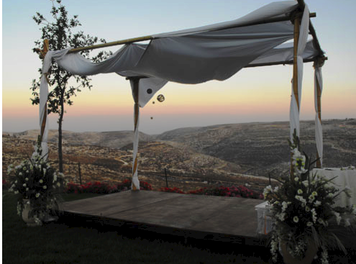
A Huppah is a wedding canopy usually a large piece of decorated fabric (sometimes a Talit, a prayer shawl) supported by four firm poles. It is a reminder of ancient times when the groom brought the bride to a room in his house at the end of the betrothal (engagement) period to copulate for consummating the marriage. The sexual joining, termed Yihud, was considered the essence of the wedding. During Middle Ages when weddings were performed in the synagogue, it became customary to erect the type of Huppah still in use today, symbolizing the Yihud room. Source: (Second Jewish Book of Why, Kolatch 1985, p. 35).
What is a Tu B'Shvat Seder?

Trees that are mentioned in two passages of the Hebrew Bible have held special intensity of meaning in Jewish tradition. One passage–the story of Gan Eden, or the Garden of Eden (of delight) gave enormous importance to the Trees of the Garden. In the other passage, Proverbs equates the “tree of life” with Wisdom–perhaps with Torah, perhaps with Divinity Itself. Indeed, the kabbalists came to imagine the emanations of God (called the Sefirot) connected in an organic pattern that they called a tree.
During the 16th century an extraordinary grouping of creative kabbalists settled in the tiny town of Tzfat (Safed) in the lush Galilee region of the Land of Israel. So the mystical sense of God’s Presence became charged with the earthiness of living close to the land. The Tzfat community created new forms of celebration that viewed the land and the rhythms of nature in new ways. Midnight became a special time of Heavenly Opening. Sunset on the eve of Shabbat became a time of singing on the hilltops. And earthly trees became intertwined with the image and symbol the One Tree, God’s Own Self, the Tree that has its roots in heaven and its fruitfulness on earth.
From these mystics emerged the notion of a Seder for Tu B’Shvat, the Fifteenth of Shvat, celebrating the rebirth of trees. Their Seder was built around fruits and nuts and cups of wine of different colors, which became edible symbols of the mystical Four Worlds as well as invocations of God’s Holy shefa, holy abundance.
There is another aspect of the kabbalist’s view of nature that is related to the question of humanity’s relation to nature. The kabbalistic cosmos in its present state, especially according to the School of Isaac Luria [also known as the Ari, 1534-1572], is dualistic. Evil as well as good is present in some sense and to some degree in each of the kabbalistic Worlds.
Indeed, the way in which evil is present in each world is symbolized in the Seder by the classification of fruits, according to the location of their shells, skin, or rind. Thus the presence of evil in our material world is also a reflection of conditions in the higher Worlds, which themselves reflect the state of things in the theosophical realm. The duality of good and evil is also symbolically present within nature. Sources of life, such as food, represent the powers of holiness. That which may not be eaten symbolizes the external evil forces. The edible portion of wheat, for example, symbolizes holiness, while chaff represents the external forces. Generally, the edible portion of fruit is associated with forces of holiness, while its shell represents the forces of evil.
It is obvious that nature alone is not sufficient for maintaining a harmonious state. If, then, neither the divine realm nor nature can be counted on to maintain a state of cosmic harmony, what factor remains which might act to fulfill this function? For the kabbalist, the answer is humanity. Symbolically, through eating the fruit in direct violation of the divine command, Adam separated the forces of holiness in nature from their divine source, thus empowering the external forces. As a result, the Edenic state of harmony was broken and humanity and nature became adversaries.
The Tu B’Shvat Seder celebrates the power of humanity restore balance to nature and the cosmos. (Sourced in part from myJewishlearning.com)
During the 16th century an extraordinary grouping of creative kabbalists settled in the tiny town of Tzfat (Safed) in the lush Galilee region of the Land of Israel. So the mystical sense of God’s Presence became charged with the earthiness of living close to the land. The Tzfat community created new forms of celebration that viewed the land and the rhythms of nature in new ways. Midnight became a special time of Heavenly Opening. Sunset on the eve of Shabbat became a time of singing on the hilltops. And earthly trees became intertwined with the image and symbol the One Tree, God’s Own Self, the Tree that has its roots in heaven and its fruitfulness on earth.
From these mystics emerged the notion of a Seder for Tu B’Shvat, the Fifteenth of Shvat, celebrating the rebirth of trees. Their Seder was built around fruits and nuts and cups of wine of different colors, which became edible symbols of the mystical Four Worlds as well as invocations of God’s Holy shefa, holy abundance.
There is another aspect of the kabbalist’s view of nature that is related to the question of humanity’s relation to nature. The kabbalistic cosmos in its present state, especially according to the School of Isaac Luria [also known as the Ari, 1534-1572], is dualistic. Evil as well as good is present in some sense and to some degree in each of the kabbalistic Worlds.
Indeed, the way in which evil is present in each world is symbolized in the Seder by the classification of fruits, according to the location of their shells, skin, or rind. Thus the presence of evil in our material world is also a reflection of conditions in the higher Worlds, which themselves reflect the state of things in the theosophical realm. The duality of good and evil is also symbolically present within nature. Sources of life, such as food, represent the powers of holiness. That which may not be eaten symbolizes the external evil forces. The edible portion of wheat, for example, symbolizes holiness, while chaff represents the external forces. Generally, the edible portion of fruit is associated with forces of holiness, while its shell represents the forces of evil.
It is obvious that nature alone is not sufficient for maintaining a harmonious state. If, then, neither the divine realm nor nature can be counted on to maintain a state of cosmic harmony, what factor remains which might act to fulfill this function? For the kabbalist, the answer is humanity. Symbolically, through eating the fruit in direct violation of the divine command, Adam separated the forces of holiness in nature from their divine source, thus empowering the external forces. As a result, the Edenic state of harmony was broken and humanity and nature became adversaries.
The Tu B’Shvat Seder celebrates the power of humanity restore balance to nature and the cosmos. (Sourced in part from myJewishlearning.com)
What does Kabbalah mean?
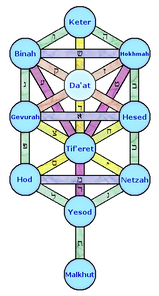
Kabbalah, literally “the received”, is a body of knowledge comprising Jewish mystical wisdom and practice. The term alludes to the process of secret transmission from a previous generation of scholars and mystics handing over their knowledge to the next generation, the receivers of the knowledge, hence Kabbalah. Kabbalah flowered uniquely in 13th century Spain with the writing of the Zohar, which was originally attributed to the 2nd century sage Shimon bar Yohai. The Zohar is a commentary on the Torah, concerned primarily with understanding the world of the divine and of souls, and its relation to physical reality. According to kabbalah , God — also known as Ein Sof or “the Infinite” — cannot be comprehended by humans. However, God can be understood and described as revealed in ten mystical attributes, or Sefirot. Much of currently known Kabbalah, including the important 16th-century Kabbalah of Isaac Luria–whose intricate theology of creation describes how God “contracted” (Tzimtzum) to make room for the world — concerns itself with the Sefirot. Abraham Abulafia was the most important of the medieval intensive mystics. He tried to achieve a state of prophecy through methods of experiential Kabbalah. (Sourced in part from myJewishlearning.com)
Must a Jew believe in God?

According to Erich Fromm’s book and interpretation of the Hebrew Bible, You Shall Be As Gods, God becomes progressively less real (and relevant) in traditional Jewish literature.
At the beginning of the Bible, God is an absolute ruler who can (and does) destroy the world when He is not happy with it. In the next stage, however, God relinquishes His absolute power by making a covenant with humankind. God’s power is limited because it is subject to the terms of the covenant. The third stage of God’s evolution (or devolution) comes in His revelation to Moses, in which he presents Himself as a nameless God. The evolution of God does not stop with the Bible. Ironically, Maimonides takes it even further by positing that nothing can be said about God. We can venture to say what God isn’t, but God’s positive attributes are unthinkable.
The next step, says Fromm, should have been a rejection of God completely, but even he–a self-declared non-theistic mystic–acknowledges that this is impossible for religious Jews. He does, however, recognize that because Judaism has not been primarily concerned with beliefs per se, one who does not believe in God can still come very close to living a life that is fully Jewish in spirit.
(Sourced in part from myJewishlearning.com)
At the beginning of the Bible, God is an absolute ruler who can (and does) destroy the world when He is not happy with it. In the next stage, however, God relinquishes His absolute power by making a covenant with humankind. God’s power is limited because it is subject to the terms of the covenant. The third stage of God’s evolution (or devolution) comes in His revelation to Moses, in which he presents Himself as a nameless God. The evolution of God does not stop with the Bible. Ironically, Maimonides takes it even further by positing that nothing can be said about God. We can venture to say what God isn’t, but God’s positive attributes are unthinkable.
The next step, says Fromm, should have been a rejection of God completely, but even he–a self-declared non-theistic mystic–acknowledges that this is impossible for religious Jews. He does, however, recognize that because Judaism has not been primarily concerned with beliefs per se, one who does not believe in God can still come very close to living a life that is fully Jewish in spirit.
(Sourced in part from myJewishlearning.com)
Why did "Hatikvah" become Israel’s national anthem?

“Hatikvah” began its life as a nine-stanza Hebrew poem entitled “Tikvatenu” (“Our Hope”). Its author was a colorful 19th-century Hebrew poet, Naftali Hertz Imber (1856-1909), who hailed from Złoczów, a town in Austro-Hungarian Galicia. Inspired by the Hibbat Zion movement of early Zionism, Imber originally wrote the poem in 1878 while living in Jassy (Yash), Romania.
As a young man, Imber wandered Eastern Europe for several years before settling in Ottoman Palestine in 1882. There he worked as personal secretary and Hebrew tutor to Sir Laurence Oliphant (1829-1888), an eccentric British author, politician, world traveler, and Christian Zionist. In the 1880s, Oliphant’s mystical religious beliefs inspired him to launch various philanthropic efforts to encourage Jewish resettlement in the historic Land of Israel. Imber first published “Tikvatenu” in an 1886 collection of his poetry, “Barkai,” (Morning Star), issued in Jerusalem and dedicated to Oliphant.tBy the time Imber left Palestine in 1888, his poem had become a song (soon renamed “Hatikvah,” Hebrew for “The Hope”) thanks to the early Zionist pioneers in the Jewish farming community of Rishon-le-Zion. The melody arrived courtesy of a Romanian Jewish immigrant named Samuel Cohen, who adapted it from a Moldavian folk song, “Carul cu Boi” (Cart and Oxen). “Hatikvah” spread rapidly among Jewish pioneers as part of the new culture of secular Hebrew songs and folk dances (such as the hora) that existed in the early decades of the Zionist movement, and eventually was adapted as the national anthem of the modern state of Israel.
HaTikvah (Translation)
As long as Jewish spirit
Yearns deep in the heart,
With eyes turned East,
Looking towards Zion.
Our hope is not yet lost,
The hope of two millennia,
To be a free people in our land,
The land of Zion and Jerusalem.
(Sourced in part from myJewishlearning.com)
As a young man, Imber wandered Eastern Europe for several years before settling in Ottoman Palestine in 1882. There he worked as personal secretary and Hebrew tutor to Sir Laurence Oliphant (1829-1888), an eccentric British author, politician, world traveler, and Christian Zionist. In the 1880s, Oliphant’s mystical religious beliefs inspired him to launch various philanthropic efforts to encourage Jewish resettlement in the historic Land of Israel. Imber first published “Tikvatenu” in an 1886 collection of his poetry, “Barkai,” (Morning Star), issued in Jerusalem and dedicated to Oliphant.tBy the time Imber left Palestine in 1888, his poem had become a song (soon renamed “Hatikvah,” Hebrew for “The Hope”) thanks to the early Zionist pioneers in the Jewish farming community of Rishon-le-Zion. The melody arrived courtesy of a Romanian Jewish immigrant named Samuel Cohen, who adapted it from a Moldavian folk song, “Carul cu Boi” (Cart and Oxen). “Hatikvah” spread rapidly among Jewish pioneers as part of the new culture of secular Hebrew songs and folk dances (such as the hora) that existed in the early decades of the Zionist movement, and eventually was adapted as the national anthem of the modern state of Israel.
HaTikvah (Translation)
As long as Jewish spirit
Yearns deep in the heart,
With eyes turned East,
Looking towards Zion.
Our hope is not yet lost,
The hope of two millennia,
To be a free people in our land,
The land of Zion and Jerusalem.
(Sourced in part from myJewishlearning.com)
What is the Book Of Maccabees?

The First Book of Maccabees is a book written in Hebrew by an anonymous Jewish author after the restoration of an independent Jewish kingdom by the Hasmonean dynasty around the late 2nd century BC. The original Hebrew is lost and the most important surviving version is the Greek translation contained in the Septuagint. The book is held as canonical scripture by the Catholic, Orthodox, and Oriental Orthodox churches, but not by the major branches of Judaism; it is not part of the Hebrew Bible.
The Book of Maccabees is best known for its account of an early victory in the Maccabean Revolt against the Seleucid Empire: the recapture of Jerusalem in the year 164 BC and rededication of the Second Temple – the narrative behind the Jewish holiday of Hanukkah.
The name Maccabee is related to the Hebrew word for "Hammer". This was applied to the first leader of the revolt, Judas Maccabeus, third son of Mattathias. In the early days of the rebellion, Judah received the surname Maccabee. It is not known whether this surname should be understood in Greek, Hebrew or Aramaic. Several explanations have been put forward for this surname. One suggestion is that the name derives from the Aramaic maqqaba ("makebet" in modern Hebrew), "hammer" or "sledgehammer" in recognition of his ferocity in battle. Others believe it is in reference to his weapon of choice.
According to Jewish folklore the name Maccabee is an acronym of the verse Mi kamokha ba'elim Adonai, "Who among the gods is like you, Oh Adonai?", the Maccabean battle-cry to motivate troops. (Exodus 15:11). Some scholars maintain that the name is a shortened form of the Hebrew maqqab-Yahu (from naqab, "to mark, to designate"), meaning "the one designated by Yahweh". Although originally the surname Maccabee was exclusive to Judah (his brothers had different surnames), at a later date it came to signify all the Hasmoneans who fought during the Maccabean Revolt. (Sourced in part from Wikipedia)
The Book of Maccabees is best known for its account of an early victory in the Maccabean Revolt against the Seleucid Empire: the recapture of Jerusalem in the year 164 BC and rededication of the Second Temple – the narrative behind the Jewish holiday of Hanukkah.
The name Maccabee is related to the Hebrew word for "Hammer". This was applied to the first leader of the revolt, Judas Maccabeus, third son of Mattathias. In the early days of the rebellion, Judah received the surname Maccabee. It is not known whether this surname should be understood in Greek, Hebrew or Aramaic. Several explanations have been put forward for this surname. One suggestion is that the name derives from the Aramaic maqqaba ("makebet" in modern Hebrew), "hammer" or "sledgehammer" in recognition of his ferocity in battle. Others believe it is in reference to his weapon of choice.
According to Jewish folklore the name Maccabee is an acronym of the verse Mi kamokha ba'elim Adonai, "Who among the gods is like you, Oh Adonai?", the Maccabean battle-cry to motivate troops. (Exodus 15:11). Some scholars maintain that the name is a shortened form of the Hebrew maqqab-Yahu (from naqab, "to mark, to designate"), meaning "the one designated by Yahweh". Although originally the surname Maccabee was exclusive to Judah (his brothers had different surnames), at a later date it came to signify all the Hasmoneans who fought during the Maccabean Revolt. (Sourced in part from Wikipedia)
How to light the Menorah?
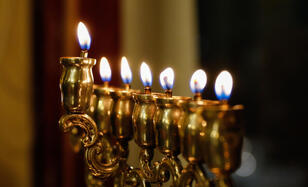
The ancient rabbis felt it was important to publicize the miracle of Hanukkah. Therefore, you can also publicize the miracle by placing your menorah in a window facing the street. In most places, passers-by enjoying seeing the candles through the window. In moments when antisemitism has endangered Jewish lives, some Jews have chosen to light the menorah in a window as an act of defiance and bravery.
Your menorah should have eight spots for candles — one for each night — and an extra ninth spot that is at a different elevation. This ninth spot is for the shamash, or helper candle, that is used to light the others.
On the first of Hanukkah’s eight nights, only two candles are placed in the Hanukkah menorah: the shamash, or “helper” candle, which has its own designated spot (usually in the center), and another candle that designates it is the first night. The first night’s candle is placed in the right-most spot. Each night, another candle is added so that on the eighth and final night of Hanukkah, all nine candles (the shamash plus eight others) are lit. To complete the ritual on all eight nights with one menorah, you will need a total of 44 candles per menorah. Most boxes of Hanukkah candles contain 45.
The candles are placed in the menorah from right to left (just as Hebrew is written from right to left), but are lit from left to right. The blessings are said before the candles are lit. In Ashkenazi communities, the shamash candle is the first one lit, and it is used to light the others, starting with the left-most one. (Think of it as lighting the candle representing the current night first.) In Sephardi communities, an extra candle — not part of the menorah — is used to light the candles that represent the nights, and then the shamash is lit last and the extra candle used for lighting is blown out.
Hanukkah candles are lit after sundown, when it is dark. But there is one exception. Since Hanukkah lasts for eight nights, the holiday will inevitably overlap with Shabbat at least once. Lighting a fire during Shabbat is forbidden according to Jewish law, so there are slight adjustments to Hanukkah candle lighting on both Friday and Saturday nights. According to Jewish law, the menorah should be lit before the Shabbat candles on Friday evening while it is still light out. As for Saturday night, the candles are lit after the sun goes down and Shabbat has ended, but there are differing opinions regarding whether the menorah should be lit before or after the havdalah rituals are completed. There is no consensus among Ashkenazi rabbis, and the most widespread Sephardic custom is to recite havdalah first.
Before lighting the candles (but after placing them in the menorah), it is traditional to recite three blessings on the first night and then two on every night thereafter. Click here to download a printable PDF of the Hanukkah candle blessings. (By Rishe Groner Sourced in part from myJewishlearning.com)
Your menorah should have eight spots for candles — one for each night — and an extra ninth spot that is at a different elevation. This ninth spot is for the shamash, or helper candle, that is used to light the others.
On the first of Hanukkah’s eight nights, only two candles are placed in the Hanukkah menorah: the shamash, or “helper” candle, which has its own designated spot (usually in the center), and another candle that designates it is the first night. The first night’s candle is placed in the right-most spot. Each night, another candle is added so that on the eighth and final night of Hanukkah, all nine candles (the shamash plus eight others) are lit. To complete the ritual on all eight nights with one menorah, you will need a total of 44 candles per menorah. Most boxes of Hanukkah candles contain 45.
The candles are placed in the menorah from right to left (just as Hebrew is written from right to left), but are lit from left to right. The blessings are said before the candles are lit. In Ashkenazi communities, the shamash candle is the first one lit, and it is used to light the others, starting with the left-most one. (Think of it as lighting the candle representing the current night first.) In Sephardi communities, an extra candle — not part of the menorah — is used to light the candles that represent the nights, and then the shamash is lit last and the extra candle used for lighting is blown out.
Hanukkah candles are lit after sundown, when it is dark. But there is one exception. Since Hanukkah lasts for eight nights, the holiday will inevitably overlap with Shabbat at least once. Lighting a fire during Shabbat is forbidden according to Jewish law, so there are slight adjustments to Hanukkah candle lighting on both Friday and Saturday nights. According to Jewish law, the menorah should be lit before the Shabbat candles on Friday evening while it is still light out. As for Saturday night, the candles are lit after the sun goes down and Shabbat has ended, but there are differing opinions regarding whether the menorah should be lit before or after the havdalah rituals are completed. There is no consensus among Ashkenazi rabbis, and the most widespread Sephardic custom is to recite havdalah first.
Before lighting the candles (but after placing them in the menorah), it is traditional to recite three blessings on the first night and then two on every night thereafter. Click here to download a printable PDF of the Hanukkah candle blessings. (By Rishe Groner Sourced in part from myJewishlearning.com)
What is Eid Al B’nat (The Festival of Daughters in Arabic) that women and girls from North Africa’s Jewish communities have been celebrating for centuries?
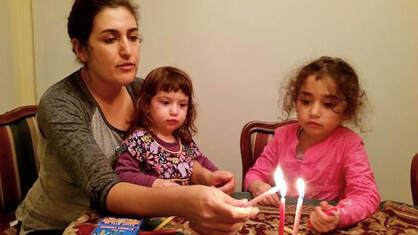
Celebrated on the Rosh Chodesh (New Moon of Tevet) during Hanukkah in communities in North Africa and elsewhere, particularly the islands of Djerba and Tunis in Tunisia, Algeria, Salonika in Greece, and Kushta (Istanbul) in Turkey, this day is filled with historic connections to powerful Jewish women. The festival takes the form of ceremonial gatherings featuring symbolic rituals, delicious treats, and traditional songs, all focusing on bringing together generations of mothers, daughters, aunts, sisters, and the extended community.
Stories of women and Hanukkah are told, including the story of Judith, the brave widow who fake-seduced the Greek-Syrian general Holofernes, fed him salty cheese and got him drunk on wine, then calmly beheaded him. The Greek soldiers panicked, the Maccabees won the battle, and the rest is history.
In some communities, women visited the synagogue (not a thing that was usually done!) and kissed the Torah scrolls and were blessed by the rabbi; in others they cooked and baked a festive meal together, and then celebrated all night. Sweet traditional foods were prepared and gifted in baskets to mothers, daughters, or mothers-in-law, prayers were shared, and songs were sung. Overall, though, the key components always include lighting the Hanukkah candles, lots of music and dancing, and the opportunity to create intimacy and community with women.
A song or piyyut often began the night. Piyyutim are liturgical poems written in Hebrew that are sung with incredibly complicated and deeply moving Arabic maqam (a system of melodic modes). After that, the women traditionally recite a blessing of “Mi Shebeirach Imoteinu,” or, “May the One who blessed our Mothers bless us.” (By Rishe Groner Sourced in part from myJewishlearning.com)
Stories of women and Hanukkah are told, including the story of Judith, the brave widow who fake-seduced the Greek-Syrian general Holofernes, fed him salty cheese and got him drunk on wine, then calmly beheaded him. The Greek soldiers panicked, the Maccabees won the battle, and the rest is history.
In some communities, women visited the synagogue (not a thing that was usually done!) and kissed the Torah scrolls and were blessed by the rabbi; in others they cooked and baked a festive meal together, and then celebrated all night. Sweet traditional foods were prepared and gifted in baskets to mothers, daughters, or mothers-in-law, prayers were shared, and songs were sung. Overall, though, the key components always include lighting the Hanukkah candles, lots of music and dancing, and the opportunity to create intimacy and community with women.
A song or piyyut often began the night. Piyyutim are liturgical poems written in Hebrew that are sung with incredibly complicated and deeply moving Arabic maqam (a system of melodic modes). After that, the women traditionally recite a blessing of “Mi Shebeirach Imoteinu,” or, “May the One who blessed our Mothers bless us.” (By Rishe Groner Sourced in part from myJewishlearning.com)
Hanukkah is not mentioned in the Bible, so how did it start?
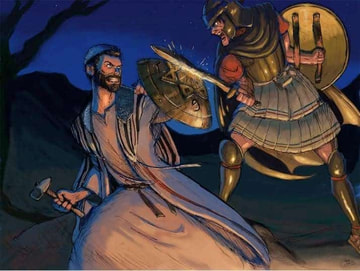
The story of how Hanukkah came to be is contained in the Book of Maccabees 1 and 2, which are not included in the Hebrew Bible. These books tell the story of the Maccabees, a small band of Jewish fighters who liberated the Land of Israel from the Syrian Greeks who occupied it.
Under the reign of Antiochus IV Epiphanes, the Syrian Greeks sought to impose their Hellenistic culture and religion, which many Jews found attractive while others strongly resisted. By 167 B.C.E, Antiochus intensified his campaign of cultural and religious dominance by defiling the Temple in Jerusalem and banning Jewish practice. The Maccabees - led by the five sons of the priest Mattathias the Hashmonean, especially Judah - waged a three-year rebellion that culminated in their unlikely victory and in the cleaning and rededication (Hanukkah in Hebrew) of the Temple.
Under Greek rule, and during the rebellion, the Macccabees were unable to celebrate the holiday of Sukkot at its proper time in early autumn. But once they defeated the Greeks in late autumn, the Maccabees decided that Sukkot should be celebrated in the Temple even belatedly, which they did on the 25th of the month of Kislev in the year 164 B.C.E.. Since Sukkot and Sh’mini Atzeret, last eight days, this became the timeframe adopted for the celebration of the eight days of Hanukkah from then on.
About 250 years after these events, the first-century Jewish historian Flavius Josephus wrote his account of the origins of the holiday. Josephus referred to the holiday as the Festival of Lights and not as Hanukkah. One reason is that the eternal light of the Temple Menorah had been relit by the Maccabees. Additionally, Josephus seems to be connecting the newfound liberty that resulted from the rebellion with the image of light, and the holiday still is often referred to by the title Josephus gave it. After the Hanukkah victory, the Hashmonean dynasty continued to rule over an independent Jewish kingdom for about one hundred years until it was conquered and subjugated again by the rising Roman empire in 63 B.C.E. (Sourced in part from myJewishlearning.com)
Under the reign of Antiochus IV Epiphanes, the Syrian Greeks sought to impose their Hellenistic culture and religion, which many Jews found attractive while others strongly resisted. By 167 B.C.E, Antiochus intensified his campaign of cultural and religious dominance by defiling the Temple in Jerusalem and banning Jewish practice. The Maccabees - led by the five sons of the priest Mattathias the Hashmonean, especially Judah - waged a three-year rebellion that culminated in their unlikely victory and in the cleaning and rededication (Hanukkah in Hebrew) of the Temple.
Under Greek rule, and during the rebellion, the Macccabees were unable to celebrate the holiday of Sukkot at its proper time in early autumn. But once they defeated the Greeks in late autumn, the Maccabees decided that Sukkot should be celebrated in the Temple even belatedly, which they did on the 25th of the month of Kislev in the year 164 B.C.E.. Since Sukkot and Sh’mini Atzeret, last eight days, this became the timeframe adopted for the celebration of the eight days of Hanukkah from then on.
About 250 years after these events, the first-century Jewish historian Flavius Josephus wrote his account of the origins of the holiday. Josephus referred to the holiday as the Festival of Lights and not as Hanukkah. One reason is that the eternal light of the Temple Menorah had been relit by the Maccabees. Additionally, Josephus seems to be connecting the newfound liberty that resulted from the rebellion with the image of light, and the holiday still is often referred to by the title Josephus gave it. After the Hanukkah victory, the Hashmonean dynasty continued to rule over an independent Jewish kingdom for about one hundred years until it was conquered and subjugated again by the rising Roman empire in 63 B.C.E. (Sourced in part from myJewishlearning.com)
Why Latkes and how?
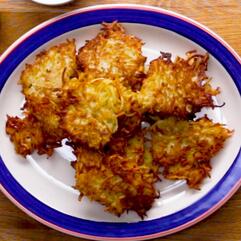
On Hanukkah is it customary to eat foods that are either fried in oil or made with cheese. The fried foods custom recalls the miracle of Hanukkah, which centered around oil (one cruse lasting for eight days). Latkes (fried potato pancakes) are traditional, topped with applesauce or sour cream, but there are many creative variations to the pancakes and the toppings. Other fried foods for Hanukkah include sufganiyot (jelly doughnuts) and other kinds of fritters.
The cheesy foods tradition is based on a story from the apocryphal Book of Judith which takes place during the time of the Maccabean revolt that we commemorate on Hanukkah. In it, an Assyrian warrior named Holofernes besieges the town of Bethulia, and though Bethulia’s elders are ready to surrender, Judith, a widow, enters the Assyrian camp and gives Holofernes salty cheese to make him thirsty and wine to make him drunk. After he becomes intoxicated, she seizes his sword and beheads him, bringing the head back to her village in a basket. The next morning when the Assyrian troops found the headless body of their leader, they fled in terror. While a severed head is not the most appetizing image, we honor Judith’s victorious and brave use of cheese by incorporating the dairy product into our Hanukkah menus.
Sweet Potato Latkes Recipe
Ingredients
2 lbs sweet potatoes or yams; 2 Tablespoons matzah meal or flour; 2 eggs; 1 teaspoon baking powder; 1-2 teaspoons cinnamon (to taste); 1/4 teaspoon nutmeg; peanut oil; 1/4 teaspoon cloves.
Directions
Peel and grate sweet potatoes and remove any excess moisture (can put in dish towel or cheesecloth and squeeze out moisture). Beat eggs and add one at a time, mixing well. Add matzoh meal or flour and baking powder. Add spices and mix well. Heat oil until hot and put large spoonful for each pancake. Cook until brown and flip.
Note: For fluffier pancakes, separate eggs. Separate and add yolks where “add eggs.” Beat egg whites until stiff. Fold in egg whites after all other ingredients have been mixed in. (Recipe by CLAUDIA RODEN Sourced in part from the Jewish Virtual Library)
The cheesy foods tradition is based on a story from the apocryphal Book of Judith which takes place during the time of the Maccabean revolt that we commemorate on Hanukkah. In it, an Assyrian warrior named Holofernes besieges the town of Bethulia, and though Bethulia’s elders are ready to surrender, Judith, a widow, enters the Assyrian camp and gives Holofernes salty cheese to make him thirsty and wine to make him drunk. After he becomes intoxicated, she seizes his sword and beheads him, bringing the head back to her village in a basket. The next morning when the Assyrian troops found the headless body of their leader, they fled in terror. While a severed head is not the most appetizing image, we honor Judith’s victorious and brave use of cheese by incorporating the dairy product into our Hanukkah menus.
Sweet Potato Latkes Recipe
Ingredients
2 lbs sweet potatoes or yams; 2 Tablespoons matzah meal or flour; 2 eggs; 1 teaspoon baking powder; 1-2 teaspoons cinnamon (to taste); 1/4 teaspoon nutmeg; peanut oil; 1/4 teaspoon cloves.
Directions
Peel and grate sweet potatoes and remove any excess moisture (can put in dish towel or cheesecloth and squeeze out moisture). Beat eggs and add one at a time, mixing well. Add matzoh meal or flour and baking powder. Add spices and mix well. Heat oil until hot and put large spoonful for each pancake. Cook until brown and flip.
Note: For fluffier pancakes, separate eggs. Separate and add yolks where “add eggs.” Beat egg whites until stiff. Fold in egg whites after all other ingredients have been mixed in. (Recipe by CLAUDIA RODEN Sourced in part from the Jewish Virtual Library)
Do Jewish law and tradition permit celebrating Thanksgiving?
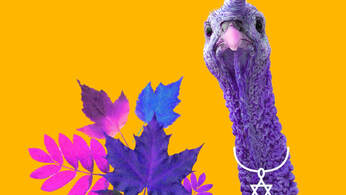
While not an inherently religious holiday, Thanksgiving celebration has caused debate within the Jewish community and illuminates the delicate balance that traditional American Jews hold between their Jewish and American identities.
The first Thanksgiving - attended by 90 native Americans and 50 English Pilgrim settlers - was held in Plymouth, Massachusetts in 1621. That first Thanksgiving mirrored ancient harvest feasts such as the Jewish holiday of Sukkot, the ancient Greek Thesmophorian celebration and the ancient Roman Cerealian rites.
This Thanksgiving day, however, was not an annual event and did not become an American ritual for more than 200 years. President George Washington did announce that November 26, 1789, would be a day of thanksgiving and prayer to mark the adoption of the U.S. Constitutions and the establishment of a new government. But even then, Thanksgiving was a one-time deal. It was not until 1863, in the midst of the American Civil War, that President Abraham Lincoln proclaimed a national holiday for the last Thursday of each November as a "day of thanksgiving and praise to our beneficent Father."
In 1868, in response to a proclamation to celebrate Thanksgiving issued by Pennsylvania Governor John W. Geary that was viewed as "intended to exclude Israelites" from the celebration, Philadelphia’s rabbis condemned the encroachment on the freedom of religion and expressed the sentiment that national holidays should be devoid of religious content.
Jews are forbidden by the Torah to partake in "gentile customs," a prohibition derived from Leviticus 18:3. But as decades have passed, Thanksgiving has retained ever less of its original English Pilgrim religious origins and most American Jews have absorbed the holiday into their own traditions.
Unlike other celebrations, such as Halloween, halacha (Jewish Law) does not prohibit Jewish participation in Thanksgiving because the holiday has secular, not religious origins and undertones. ( Sourced in part from the Jewish Virtual Library)
The first Thanksgiving - attended by 90 native Americans and 50 English Pilgrim settlers - was held in Plymouth, Massachusetts in 1621. That first Thanksgiving mirrored ancient harvest feasts such as the Jewish holiday of Sukkot, the ancient Greek Thesmophorian celebration and the ancient Roman Cerealian rites.
This Thanksgiving day, however, was not an annual event and did not become an American ritual for more than 200 years. President George Washington did announce that November 26, 1789, would be a day of thanksgiving and prayer to mark the adoption of the U.S. Constitutions and the establishment of a new government. But even then, Thanksgiving was a one-time deal. It was not until 1863, in the midst of the American Civil War, that President Abraham Lincoln proclaimed a national holiday for the last Thursday of each November as a "day of thanksgiving and praise to our beneficent Father."
In 1868, in response to a proclamation to celebrate Thanksgiving issued by Pennsylvania Governor John W. Geary that was viewed as "intended to exclude Israelites" from the celebration, Philadelphia’s rabbis condemned the encroachment on the freedom of religion and expressed the sentiment that national holidays should be devoid of religious content.
Jews are forbidden by the Torah to partake in "gentile customs," a prohibition derived from Leviticus 18:3. But as decades have passed, Thanksgiving has retained ever less of its original English Pilgrim religious origins and most American Jews have absorbed the holiday into their own traditions.
Unlike other celebrations, such as Halloween, halacha (Jewish Law) does not prohibit Jewish participation in Thanksgiving because the holiday has secular, not religious origins and undertones. ( Sourced in part from the Jewish Virtual Library)
What does "Abrahamic Traditions" mean? Was "Abraham our Father" Jewish?
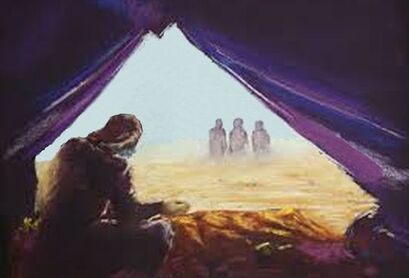
It is common for Jews to affectionately refer to the first Patriarch as Avraham Avinu, “Abraham our Father.” But is Abraham our father alone?
If we approach the figure of Abraham from the perspective of later Jewish Torah commentary, such as the Mishnah, we note a number of additions to Abraham’s biography. A more careful examination reveals that some of these added details reflect very heated controversies that preoccupied the classical Jewish commentators in their contacts with competing religious outlooks.
As an example, let us look at an oft-quoted rabbinic tradition: Our father Abraham observed the entire Torah before it was given to Israel (by Moses at Sinai)….” (Mishnah, end of Kiddushin). In Genesis 18:7-8, we find Abraham hurrying to prepare a meal for his guests that consisted of “a calf tender and good…curd and milk” — hardly an ideal menu for a Torah kosher meal. Why did the rabbis of the Mishnah insist on making such a contradictory statement?
Abraham in Christianity
A possible explanation might be found in an exposition by a Jew who wrote towards the end of the First Century C.E., Saul of Tarsus–who was to become known to the world as Saint Paul, the leading ideologist of early Christianity. Paul made considerable use of Abraham's un-kosher meal case to support his own belief that the observance of Torah laws are not conducive to spiritual salvation. Paul points to Genesis 15:6: “And [Abraham] believed in the Lord and He (the Lord) counted it to him as righteousness.” Did Abraham, Paul argues, not live before the receiving of the Torah? Since he did, he could not have observed its laws. Nevertheless, God deems him righteous! In view of such claims made by the early Church about Abraham, it is perfectly understandable that the rabbis would feel it essential to assert that he was an authentic Jewish figure who had observed the precepts of the Torah even before they were made mandatory by the revelation at Mount Sinai.
Abraham in Islam
With the rise of Islam in the seventh century the Arabs also came to emphasize their descent from the Patriarch. Interestingly, the descriptions of Abraham’s life as found in the Koran are strongly influenced by Jewish traditions. They incorporate many events not mentioned in the bible but in later Midrashim, such as Abraham’s disputes with his idol-worshipping father and his conflict with the wicked king Nimrod who cast him into a fiery furnace. All this provides ample proof that Mohammed had Jewish teachers.
The story of the akedah (binding of Isaac) also found its way into the Koran (37:103), where the story conforms in most respects with the biblical version. Later Islamic tradition took it for granted that the almost-sacrificed son was actually Ishmael, the ancestor of the Arabs.
When Abraham said: “Lord show me how you will revive the dead,” He said, “What, do you not yet believe?” Said he, “Yea, but that my heart may be quieted.” He said, “Then take four birds, and take them close to yourself; then put a part of them on every mountain; then call them, and they will come to you in haste; and know that God is mighty, wise.” The source for this Midrash? It is found in the Koran (2:260). It would appear possible that later Jewish commentators were making free use of an Islamic tradition that provided corroboration for the Jewish belief in resurrection.
Conclusion
It is evident that all three of the great Western religions have laid claim to “Abraham our father.” And the intricate web of relationships between these religions — including both conflicts and points of agreement and harmony — can be traced through the examination of their respective interpretations of Abraham’s life.
In addition, as has been evident throughout our history, the interpretations Jews have given to the Scriptures often reflect pressing concerns that go far beyond the particular verses that are being expounded, such as the competitive need to maintain an exclusive link to “Abraham Our Father”. This effort further emphasizes the shared, though contested, link all three religions have to one ancestor, giving rise to the term "The Abrahamic Traditions". (BY ELIEZER SEGAL, Sourced in part from myJewishlearning.com)
If we approach the figure of Abraham from the perspective of later Jewish Torah commentary, such as the Mishnah, we note a number of additions to Abraham’s biography. A more careful examination reveals that some of these added details reflect very heated controversies that preoccupied the classical Jewish commentators in their contacts with competing religious outlooks.
As an example, let us look at an oft-quoted rabbinic tradition: Our father Abraham observed the entire Torah before it was given to Israel (by Moses at Sinai)….” (Mishnah, end of Kiddushin). In Genesis 18:7-8, we find Abraham hurrying to prepare a meal for his guests that consisted of “a calf tender and good…curd and milk” — hardly an ideal menu for a Torah kosher meal. Why did the rabbis of the Mishnah insist on making such a contradictory statement?
Abraham in Christianity
A possible explanation might be found in an exposition by a Jew who wrote towards the end of the First Century C.E., Saul of Tarsus–who was to become known to the world as Saint Paul, the leading ideologist of early Christianity. Paul made considerable use of Abraham's un-kosher meal case to support his own belief that the observance of Torah laws are not conducive to spiritual salvation. Paul points to Genesis 15:6: “And [Abraham] believed in the Lord and He (the Lord) counted it to him as righteousness.” Did Abraham, Paul argues, not live before the receiving of the Torah? Since he did, he could not have observed its laws. Nevertheless, God deems him righteous! In view of such claims made by the early Church about Abraham, it is perfectly understandable that the rabbis would feel it essential to assert that he was an authentic Jewish figure who had observed the precepts of the Torah even before they were made mandatory by the revelation at Mount Sinai.
Abraham in Islam
With the rise of Islam in the seventh century the Arabs also came to emphasize their descent from the Patriarch. Interestingly, the descriptions of Abraham’s life as found in the Koran are strongly influenced by Jewish traditions. They incorporate many events not mentioned in the bible but in later Midrashim, such as Abraham’s disputes with his idol-worshipping father and his conflict with the wicked king Nimrod who cast him into a fiery furnace. All this provides ample proof that Mohammed had Jewish teachers.
The story of the akedah (binding of Isaac) also found its way into the Koran (37:103), where the story conforms in most respects with the biblical version. Later Islamic tradition took it for granted that the almost-sacrificed son was actually Ishmael, the ancestor of the Arabs.
When Abraham said: “Lord show me how you will revive the dead,” He said, “What, do you not yet believe?” Said he, “Yea, but that my heart may be quieted.” He said, “Then take four birds, and take them close to yourself; then put a part of them on every mountain; then call them, and they will come to you in haste; and know that God is mighty, wise.” The source for this Midrash? It is found in the Koran (2:260). It would appear possible that later Jewish commentators were making free use of an Islamic tradition that provided corroboration for the Jewish belief in resurrection.
Conclusion
It is evident that all three of the great Western religions have laid claim to “Abraham our father.” And the intricate web of relationships between these religions — including both conflicts and points of agreement and harmony — can be traced through the examination of their respective interpretations of Abraham’s life.
In addition, as has been evident throughout our history, the interpretations Jews have given to the Scriptures often reflect pressing concerns that go far beyond the particular verses that are being expounded, such as the competitive need to maintain an exclusive link to “Abraham Our Father”. This effort further emphasizes the shared, though contested, link all three religions have to one ancestor, giving rise to the term "The Abrahamic Traditions". (BY ELIEZER SEGAL, Sourced in part from myJewishlearning.com)
Do Jews own the land of Israel?

Israel’s legendary Foreign Minister Abba Eban once stood at the podium of the United Nations general assembly with a Bible in his hand, declaring before the whole world that the Jewish people’s title deed to the Land of Israel is over 3,000 years old.
Rabbi Menachem Froman of blessed memory, an Orthodox settlers leader in the occupied West Bank, surprisingly disagreed; not only with the proof of ownership but with the very claim of ownership. He believed that the Jewish people do not own the land at all!
“The Land of Israel belongs to the People of Israel” has been a longstanding slogan of Religious Zionism, but Rav Menachem never tired of telling all who would listen that the Land of Israel does not belong to the People of Israel. On the contrary, the People of Israel belong to the Land of Israel.
Parashat Behar provides the explanation. “The Land cannot be sold in perpetuity” says the Torah, “for the Land is Mine, and you are residents and sojourners with Me.” The Land belongs to God, and we are no more than His tenants upon it.
Certainly according to the Torah God has promised us the land as an eternal inheritance, but the Almighty has not vouchsafed us ownership. We dwell on the land at His pleasure, always on condition.
Abraham our forefather was told by God in the Book of Genesis that his children would merit to inherit the land - but only after four generations, because “the sin of the Amorites is not yet complete.” That is, God will not bring Abraham’s descendants into the land until the present occupants deserve to be expelled, until the moral blemish of their behavior can no longer be tolerated.
That is perhaps what makes the Land of Israel “the Holy Land”: Those who dwell there do so on condition that their deeds measure up to God’s ethical demands. The same point is forcefully driven home in the Torah when we are told that the Jewish People will be “vomited” out by the land, if we do not live up to the moral standards that God requires, just as the land “vomited” out its earlier inhabitants.
This is perhaps what Rav Menachem Froman meant when he said that we belong to the land: We are servants of its ethical demands. Divine morality is personified as the moral conscience of the land. Living on the land is not a right but a privilege, and it carries with it certain obligations, and the challenge to earn our keep by our deeds.
(BY RABBI HANAN SCHLESINGER, Sourced in part from myJewishlearning.com)
Rabbi Menachem Froman of blessed memory, an Orthodox settlers leader in the occupied West Bank, surprisingly disagreed; not only with the proof of ownership but with the very claim of ownership. He believed that the Jewish people do not own the land at all!
“The Land of Israel belongs to the People of Israel” has been a longstanding slogan of Religious Zionism, but Rav Menachem never tired of telling all who would listen that the Land of Israel does not belong to the People of Israel. On the contrary, the People of Israel belong to the Land of Israel.
Parashat Behar provides the explanation. “The Land cannot be sold in perpetuity” says the Torah, “for the Land is Mine, and you are residents and sojourners with Me.” The Land belongs to God, and we are no more than His tenants upon it.
Certainly according to the Torah God has promised us the land as an eternal inheritance, but the Almighty has not vouchsafed us ownership. We dwell on the land at His pleasure, always on condition.
Abraham our forefather was told by God in the Book of Genesis that his children would merit to inherit the land - but only after four generations, because “the sin of the Amorites is not yet complete.” That is, God will not bring Abraham’s descendants into the land until the present occupants deserve to be expelled, until the moral blemish of their behavior can no longer be tolerated.
That is perhaps what makes the Land of Israel “the Holy Land”: Those who dwell there do so on condition that their deeds measure up to God’s ethical demands. The same point is forcefully driven home in the Torah when we are told that the Jewish People will be “vomited” out by the land, if we do not live up to the moral standards that God requires, just as the land “vomited” out its earlier inhabitants.
This is perhaps what Rav Menachem Froman meant when he said that we belong to the land: We are servants of its ethical demands. Divine morality is personified as the moral conscience of the land. Living on the land is not a right but a privilege, and it carries with it certain obligations, and the challenge to earn our keep by our deeds.
(BY RABBI HANAN SCHLESINGER, Sourced in part from myJewishlearning.com)
What is the blessing for seeing a rainbow and why say it to begin with?

“Blessed are You, Adonai our God, Ruler of the Universe, who remembers the covenant, and is faithful to God’s covenant, and keeps God’s promise”.
After the flood, God establishes a covenant with Noah and sets the rainbow as a sign of this covenant “between Me and the earth” (Gen. 9:13), says God: “When I bring clouds over the earth, and the bow appears in the clouds, I will remember my covenant between Me and you and every living creature among all flesh, so that the waters shall never again become a flood to destroy all flesh.” (Gen. 9:14-15)
The rainbow, it seems, is a way for God to remember about the covenant not to destroy the earth. God, we suspect, will get angry at us humans, every so often, and perhaps desire to destroy the world again, but the rainbow is a reminder of God’s promise not to. But why is a rainbow the symbol of this covenant? And what should it mean to us?
A rainbow is not just a rainbow, according to Rabbi Joseph Bechor Shor (12th-century France). Rather, it’s God showing God’s self. This is based on a verse from Ezekiel comparing God’s presence to a rainbow: “Like the appearance of the bow which shines in the clouds on a day of rain… was the appearance of the semblance of the Presence of Adonai.” (Ezekiel 1:28)
We can assume God wouldn’t show God’s self if God intended to destroy the world, so us seeing a rainbow—the presence of God—is indeed a good sign!
Actually, some say the rainbow itself isn’t the symbol, but rather, it’s the fact that the rainbow is seen in the clouds. Originally, suggests Rabbi Isaac Caro (a 15th-16th-century Sephardic scholar and uncle of the author of the Shulchan Aruch, Joseph Caro), rainbows couldn’t be seen from earth because they were obscured by thick clouds —and it was these heavy, thick clouds that produced the flood rains. But after the flood, Caro posits, God thinned out the clouds, rendering them incapable of producing floods of this magnitude, and allowing rainbows to be seen. So, the symbol is not only the rainbow and our ability to see it, but the clouds too.
In another interpretation of the rainbow’s significance, Nahmanides (13th-century Spain) suggests it is a bow (as in a bow and arrow) that is no longer aimed at the earth. The flood was God taking aim at the earth, but the bow is now pointing away from earth, and it no longer has a string or arrows. Displaying this disabled weapon, is sort of like a ceasefire - holding your weapon pointing towards yourself, away from your initial target. In this sense, a rainbow is about God setting aside God’s anger and making peace with us.
Other Jewish scholars have seen the rainbow as a different kind of peace symbol. One medieval commentator saw a rainbow as a combination of fire and water, coexisting in perfect peace in the natural world.
A more modern approach from Rabbi Samson Raphael Hirsch (19th-century Germany) suggests that each of the different colors of the rainbow represents a different kind of person. In this reading, red, the outermost ring of the rainbow, is closest to the heavens and related to Adam — the person who was created most directly and immediately in God’s image. (Adam and the Hebrew word for “red” [adom] share the same root: the letters aleph, daled and mem.) The other colors represent people and other life forms that are further and further from God’s image, but the entire spectrum together is pure white light, representing God’s purity. Thus, the rainbow becomes a symbol of unity for all life.
Noticing that the rainbow is half of a circle, Rabbi Shlomo Riskin (a prominent American-born Orthodox rabbi in Israel) writes: “The rainbow is a half-picture, lacking a second half to complete the circle of wholeness. God can pledge not to destroy humanity, but since God created humanity with freedom of choice, God cannot guarantee that humanity will not destroy itself.”
This is to say that God will take care of God’s part of the rainbow, but we have to do our part, to be God’s partners in caring for the world.
A rainbow is the refraction of light through water drops, breaking up the white light so that we can see the various colors in its visible spectrum. A rainbow allows us to see something that we cannot usually see. And we see a rainbow at the liminal moment when the rain has ended but the air is still damp with moisture, when we can sense both the rain and the sun, both danger and opportunity. (Sourced in part from myJewishlearning.com)
After the flood, God establishes a covenant with Noah and sets the rainbow as a sign of this covenant “between Me and the earth” (Gen. 9:13), says God: “When I bring clouds over the earth, and the bow appears in the clouds, I will remember my covenant between Me and you and every living creature among all flesh, so that the waters shall never again become a flood to destroy all flesh.” (Gen. 9:14-15)
The rainbow, it seems, is a way for God to remember about the covenant not to destroy the earth. God, we suspect, will get angry at us humans, every so often, and perhaps desire to destroy the world again, but the rainbow is a reminder of God’s promise not to. But why is a rainbow the symbol of this covenant? And what should it mean to us?
A rainbow is not just a rainbow, according to Rabbi Joseph Bechor Shor (12th-century France). Rather, it’s God showing God’s self. This is based on a verse from Ezekiel comparing God’s presence to a rainbow: “Like the appearance of the bow which shines in the clouds on a day of rain… was the appearance of the semblance of the Presence of Adonai.” (Ezekiel 1:28)
We can assume God wouldn’t show God’s self if God intended to destroy the world, so us seeing a rainbow—the presence of God—is indeed a good sign!
Actually, some say the rainbow itself isn’t the symbol, but rather, it’s the fact that the rainbow is seen in the clouds. Originally, suggests Rabbi Isaac Caro (a 15th-16th-century Sephardic scholar and uncle of the author of the Shulchan Aruch, Joseph Caro), rainbows couldn’t be seen from earth because they were obscured by thick clouds —and it was these heavy, thick clouds that produced the flood rains. But after the flood, Caro posits, God thinned out the clouds, rendering them incapable of producing floods of this magnitude, and allowing rainbows to be seen. So, the symbol is not only the rainbow and our ability to see it, but the clouds too.
In another interpretation of the rainbow’s significance, Nahmanides (13th-century Spain) suggests it is a bow (as in a bow and arrow) that is no longer aimed at the earth. The flood was God taking aim at the earth, but the bow is now pointing away from earth, and it no longer has a string or arrows. Displaying this disabled weapon, is sort of like a ceasefire - holding your weapon pointing towards yourself, away from your initial target. In this sense, a rainbow is about God setting aside God’s anger and making peace with us.
Other Jewish scholars have seen the rainbow as a different kind of peace symbol. One medieval commentator saw a rainbow as a combination of fire and water, coexisting in perfect peace in the natural world.
A more modern approach from Rabbi Samson Raphael Hirsch (19th-century Germany) suggests that each of the different colors of the rainbow represents a different kind of person. In this reading, red, the outermost ring of the rainbow, is closest to the heavens and related to Adam — the person who was created most directly and immediately in God’s image. (Adam and the Hebrew word for “red” [adom] share the same root: the letters aleph, daled and mem.) The other colors represent people and other life forms that are further and further from God’s image, but the entire spectrum together is pure white light, representing God’s purity. Thus, the rainbow becomes a symbol of unity for all life.
Noticing that the rainbow is half of a circle, Rabbi Shlomo Riskin (a prominent American-born Orthodox rabbi in Israel) writes: “The rainbow is a half-picture, lacking a second half to complete the circle of wholeness. God can pledge not to destroy humanity, but since God created humanity with freedom of choice, God cannot guarantee that humanity will not destroy itself.”
This is to say that God will take care of God’s part of the rainbow, but we have to do our part, to be God’s partners in caring for the world.
A rainbow is the refraction of light through water drops, breaking up the white light so that we can see the various colors in its visible spectrum. A rainbow allows us to see something that we cannot usually see. And we see a rainbow at the liminal moment when the rain has ended but the air is still damp with moisture, when we can sense both the rain and the sun, both danger and opportunity. (Sourced in part from myJewishlearning.com)
Why do Jews read the Torah in an annual cycle?
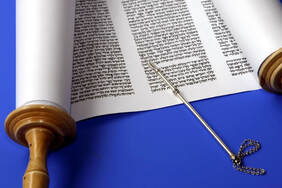
The first mention of a scheduled Torah-reading cycle appears in the Bible, in Deuteronomy, where Moses instructs the tribe of Levi and the elders of Israel to gather all the people for a public reading from portions of the Torah once every seven years. The need to read the Torah publicly intensified after the destruction of the Second Temple in 70 CE; Jews were dispersed into other parts of the Middle East, into North Africa, and into Europe; and their earlier religious and cultural world became decentralized. Most Jews in the Diaspora now follow one Torah-reading cycle.
Because a reference in the Mishnah (the first effort to permanently record Jewish custom and law, compiled in the 3rd century C.E.) supported Deuteronomy’s prescription, we understand that Jews were continuing to read the Torah publicly; and we also know that there were Torah readings for festivals, special Shabbatot (plural of Shabbat) and fast days.
But it was not until the Talmudic era, about the 6th century C.E., that the Jews in the Land of Israel began to read the entire Torah in public and do so until all the Five Books of Moses were completed. At that time, the cycle took three years in a pattern called the Palestinian triennial, beginning the first year with the first book, Genesis, and finishing, at the end of the third year, with the fifth book, Deuteronomy.
The Jews of Babylon, however, followed a different custom, established by the beginning of the 7th century CE, and completed the entire cycle each year, which they did by dividing the Torah into 54 weekly portions. (Because the number of portions exceeds the number of weeks in a given year, more than one portion is read during certain weeks.) In Hebrew, the word for portion is Parsha (plural, parshiyot).
The vast majority of American Conservative and Reform congregations prefer the new modified triennial cycle. All Jews in Israel, however, and Orthodox Jews in America continue to follow the annual cycle with the full portion read each week. (Sourced in part from myJewishlearning.com)
Because a reference in the Mishnah (the first effort to permanently record Jewish custom and law, compiled in the 3rd century C.E.) supported Deuteronomy’s prescription, we understand that Jews were continuing to read the Torah publicly; and we also know that there were Torah readings for festivals, special Shabbatot (plural of Shabbat) and fast days.
But it was not until the Talmudic era, about the 6th century C.E., that the Jews in the Land of Israel began to read the entire Torah in public and do so until all the Five Books of Moses were completed. At that time, the cycle took three years in a pattern called the Palestinian triennial, beginning the first year with the first book, Genesis, and finishing, at the end of the third year, with the fifth book, Deuteronomy.
The Jews of Babylon, however, followed a different custom, established by the beginning of the 7th century CE, and completed the entire cycle each year, which they did by dividing the Torah into 54 weekly portions. (Because the number of portions exceeds the number of weeks in a given year, more than one portion is read during certain weeks.) In Hebrew, the word for portion is Parsha (plural, parshiyot).
The vast majority of American Conservative and Reform congregations prefer the new modified triennial cycle. All Jews in Israel, however, and Orthodox Jews in America continue to follow the annual cycle with the full portion read each week. (Sourced in part from myJewishlearning.com)
Why use a Lulav and Etrog on Sukkot?
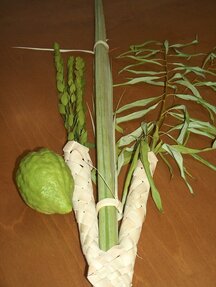
The "four species" of Sukkot are the etrog, palm, myrtle and willow. The lulav is the palm, the etrog is a lemon-like citrus fruit, and the two others are twigs from a shrub and a tree. but sometimes all four held together are referred to as the "Lulav", since it is the most prominent of the four.
The Four Species represent the four-letter Name of God יהוה, with the lulav representing the Hebrew letter vav ו, which channels the divine energy into the world and into us humans. If for no other reason, the four must be held together while waving to represent the Unity of The Name.
Each of the four relates to a particular limb through which a human is to serve God (cf. Sefer ha-Hinukh, #285): Etrog refers to the heart, the place of understanding and wisdom. Palm refers to the backbone, uprightness. Myrtle corresponds to the eyes, enlightenment. Willow represents the lips, the service of the lips (prayer).
The four species’ taste and fragrance is also symbolic. Taste represents learning. Smell represents good deeds. The etrog has both taste and smell, learning and good deeds. The lulav has taste but not fragrance, only learning. The myrtle has smell but no taste, only good deeds. And the willow has neither, simple. Each represents a different type of person. Some have both learning and good deeds; some have one without the other; and some are simple and down to earth. Real community is found in all being bound together each contributing in his or her unique way making an interdependent whole that is greater than the sum of its parts.
On Sukkot we ritually wave the Lulav and its species while holding them bunched together in our palms, as we pray for agricultural abundance and spiritual blessings for the coming year. (Sourced in part from myJewishlearning.com)
The Four Species represent the four-letter Name of God יהוה, with the lulav representing the Hebrew letter vav ו, which channels the divine energy into the world and into us humans. If for no other reason, the four must be held together while waving to represent the Unity of The Name.
Each of the four relates to a particular limb through which a human is to serve God (cf. Sefer ha-Hinukh, #285): Etrog refers to the heart, the place of understanding and wisdom. Palm refers to the backbone, uprightness. Myrtle corresponds to the eyes, enlightenment. Willow represents the lips, the service of the lips (prayer).
The four species’ taste and fragrance is also symbolic. Taste represents learning. Smell represents good deeds. The etrog has both taste and smell, learning and good deeds. The lulav has taste but not fragrance, only learning. The myrtle has smell but no taste, only good deeds. And the willow has neither, simple. Each represents a different type of person. Some have both learning and good deeds; some have one without the other; and some are simple and down to earth. Real community is found in all being bound together each contributing in his or her unique way making an interdependent whole that is greater than the sum of its parts.
On Sukkot we ritually wave the Lulav and its species while holding them bunched together in our palms, as we pray for agricultural abundance and spiritual blessings for the coming year. (Sourced in part from myJewishlearning.com)
Why is Rosh HaShanna a two day holiday, or is it? And more.
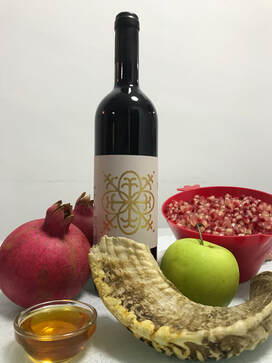
Rosh Hashanah (the head of the year) is known by several names including Yom HaZikaron (the Day of Remembrance), Yom Teruah (a day of sounding [the shofar]), and Yom HaDin (the Day of Judgement), and Yoma Arikhta (a Single Long day).
“A single long day.” An odd description for our new year. Is Rosh Hashanah a one-day holiday? Is it a two-day holiday? Or, as the rabbis suggest, is it simply one very long day stretching over forty eight hours? It is a two-day-long day because of ancient calculation doubts regarding the actual date of the new year. Celebrating two days reconciled the ambiguity, and ever since Yoma Arikhta remains the enduring tradition.
The two days of Rosh Hashanah usher in the Ten Days of Repentance (Aseret Yemei Teshuvah), also known as the Days of Awe (Yamim Noraim), which culminate in the major fast day of Yom Kippur, the Day of Atonement. Sounding a ram’s horn, the shofar, is intended as a wake-up call to cleaning up our act. Rosh Hashanah itself is also known as Yom Hadin or the Day of Judgment, on which God opens the Books of Life and Death, which are then sealed on Yom Kippur.
At the start of the holy days, it is customary to recite the Shehecheyanu blessing thanking God for enabling us to reach this new and fresh moment. However, if Rosh Hashanah is really one long day, Yoma Arikhta, does the Shehecheyanu blessing need to be recited on the second night as well? The answer is yes, though, we eat new fruits for the first time on the second night over which we recite the second night’s Shehecheyanu blessing rather than a merely repeating the first night’s custom. Thus we regard Rosh Hashannah as both a one long day and two separate days both at once. (Sourced from myJewishlearning.com)
“A single long day.” An odd description for our new year. Is Rosh Hashanah a one-day holiday? Is it a two-day holiday? Or, as the rabbis suggest, is it simply one very long day stretching over forty eight hours? It is a two-day-long day because of ancient calculation doubts regarding the actual date of the new year. Celebrating two days reconciled the ambiguity, and ever since Yoma Arikhta remains the enduring tradition.
The two days of Rosh Hashanah usher in the Ten Days of Repentance (Aseret Yemei Teshuvah), also known as the Days of Awe (Yamim Noraim), which culminate in the major fast day of Yom Kippur, the Day of Atonement. Sounding a ram’s horn, the shofar, is intended as a wake-up call to cleaning up our act. Rosh Hashanah itself is also known as Yom Hadin or the Day of Judgment, on which God opens the Books of Life and Death, which are then sealed on Yom Kippur.
At the start of the holy days, it is customary to recite the Shehecheyanu blessing thanking God for enabling us to reach this new and fresh moment. However, if Rosh Hashanah is really one long day, Yoma Arikhta, does the Shehecheyanu blessing need to be recited on the second night as well? The answer is yes, though, we eat new fruits for the first time on the second night over which we recite the second night’s Shehecheyanu blessing rather than a merely repeating the first night’s custom. Thus we regard Rosh Hashannah as both a one long day and two separate days both at once. (Sourced from myJewishlearning.com)
What is the Selichot, forgiveness, service before Rosh HaShanna?
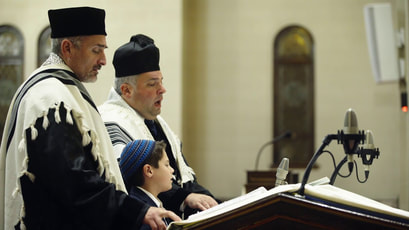
The Mahzor Vitry, an 11th‑century work describing the yearly cycle of observances and prayers, tells us that “it is a custom to begin on the Saturday night before Rosh Hashanah to rise early to the synagogue, before the sun rises, and beg for mercy.”
Selichot, prayers for forgiveness, are ancient prayers already mentioned in the Mishnah. They originated as prayers for fast days. The Mishnah describes public fast days and the order of prayer for such occasions as featuring a series of exhortations that end with the words “He will answer us,” recalling the times in Jewish history when God answered those who called upon Him. The Tanna debei Eliyahu Zuta, a midrashic work that dates at the latest to the ninth century, mentions a special service for forgiveness instituted by King David when he realized that the Temple would be destroyed.
The Selichot service also emphasizes the recitation of The 13 Attributes. Over the centuries, special poems embellishing this passage were added to the Selichot.
Sephardic communities begin reciting Selichot at the beginning of Elul so that a period of 40 days, similar to the time Moses spent on Mount Sinai, is devoted to prayers of forgiveness. The practice among Ashkenazi Jews is to begin saying them on the Saturday night prior to Rosh Hashanah. (Sourced from myJewishlearning.com)
Selichot, prayers for forgiveness, are ancient prayers already mentioned in the Mishnah. They originated as prayers for fast days. The Mishnah describes public fast days and the order of prayer for such occasions as featuring a series of exhortations that end with the words “He will answer us,” recalling the times in Jewish history when God answered those who called upon Him. The Tanna debei Eliyahu Zuta, a midrashic work that dates at the latest to the ninth century, mentions a special service for forgiveness instituted by King David when he realized that the Temple would be destroyed.
The Selichot service also emphasizes the recitation of The 13 Attributes. Over the centuries, special poems embellishing this passage were added to the Selichot.
Sephardic communities begin reciting Selichot at the beginning of Elul so that a period of 40 days, similar to the time Moses spent on Mount Sinai, is devoted to prayers of forgiveness. The practice among Ashkenazi Jews is to begin saying them on the Saturday night prior to Rosh Hashanah. (Sourced from myJewishlearning.com)
According to Jewish tradition, how should we treat animals?
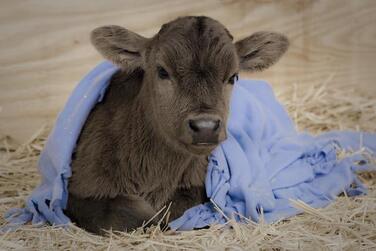
The Torah is highly compassionate toward animals, such as the biblical commandment to send away the mother bird before taking eggs from a nest found in the wild, known as “shiluah haken” (see Deuteronomy 22:6) and the biblical prohibition against slaughtering a mother animal and its child on the same day, known as “oto v’et Beno” (see Leviticus 22:28). Additional examples of biblical prohibitions that are based on compassion for animal suffering are: “Do not plow with an ox and a donkey together” (Deuteronomy 22:10) and “Do not muzzle an ox on the threshing floor” (Deuteronomy 25:4). We also find a general prohibition in the Gemara [Talmud] against causing animals pain, known as “tzaar baalei hayim” (see for example Bava Metzia 32b), and a requirement to feeds one’s animals first before feeding oneself (Berakhot 40a). (Sourced from myJewishlearning.com)
Why is the shofar sounded in synagogue every day during the month of Elul? Can both men and women sound the shofar?

During the Hebrew month of Elul, we blow the shofar on a daily basis at the conclusion of the morning service. This custom is derived from the Midrash that Moses ascended Mount Sinai at the beginning of Elul to receive the second set of tablets, having broken the first set when he witnessed the Israelites worshipping the Golden Calf. While Moses was on the mountain, the Israelites blew the shofar on a daily basis to serve as a warning to the people to maintain their faith in God. It is interesting to note that the Shulchan Aruch explicitly permits a woman to blow shofar for herself or for other women on Rosh Hashanah. The Rema, Mishnah Berurah, and other halakhic authorities categorize blowing the shofar during Elul as a minhag, custom, rather than as an obligation. With these considerations in mind, a woman could blow shofar for herself or in the presence of other women during Elul to assist them in fulfilling the minhag. (Sourced from myJewishlearning.com)
Elul is the upcoming Jewish month but also a poetic acronym. What is it and what does it mean?
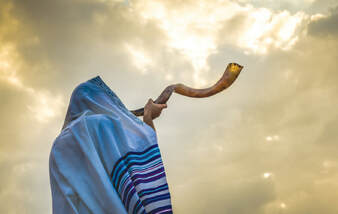
Elul — the sixth month of the Jewish year immediately precedes Rosh Hashanah and is designated as the time to prepare for the High Holy Days. Because these days are filled with so much meaning and potency, we are called upon to enter them thoughtfully and to consider what they mean. As the Maharal of Prague said, “All the month of Elul, before eating and sleeping, a person should look into his soul and search his deeds, that he may make confession.” Jewish tradition points to the name of the month as symbolically appropriate — the letters of Elul form an acronym for the words in the verse Ani le‑dodi ve‑dodi li–“I am my beloved’s and my beloved is mine” (Song of Songs 6:3). Believing that the “beloved” refers to God, the sages take this verse to describe the particularly loving and close relationship between God and Israel. Elul, then, is our time to establish our closeness to the Divine so that we can approach the Yamim Noraim, or Days of Awe, in trusting acceptance of God’s judgment. We approach the trial not out of fear, but out of love. (Sourced from myJewishlearning.com)
Why do traditional Jewish Men Have Beards?
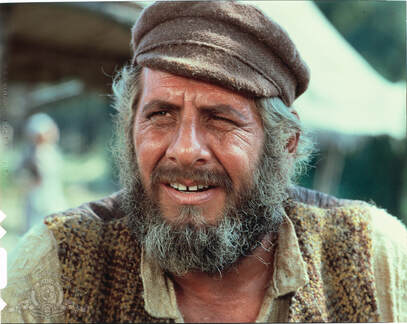
The practice derives from Leviticus 19:27 in the Torah, which states: “You shall not round off the corners on your head, or destroy the corners of your beard.” According to the 12th-century scholar Maimonides, this prohibition was a way to differentiate Jews from idolatrous priests, who shaved their beards. The prohibition on shaving has traditionally been understood as a prohibition on removal of the hair with a razor. And because for centuries it was generally too difficult to achieve a close shave without a razor, observant Jewish men tended to be bearded. According to the historian, Rabbi Berel Wein, beard norms began to change among some Orthodox men in Europe in the 18th and 19th centuries, when chemical depilatories became available, enabling hair removal without a razor. More recently, the advent of electric shavers makes it possible to achieve a close shave without a razor actually touching the skin. As a result, many men today do shave their beards while continuing to follow Orthodox interpretation of Jewish law. However it remains customary in most ultra-Orthodox circles to retain one’s beard as a sign of piety.
For Hasidic and some other Orthodox men, the practice of not shaving at all extends to the sidelocks, known in Hebrew as payot (often spelled and pronounced payos, or payes) — literally “corners.” As with beards, practices on payot vary within Orthodoxy. Among Hasidic Jews, payot are often very prominent and sometimes curled, but they are also often tucked discreetly behind the ear. Many observant Jewish men consider it sufficient merely to avoid complete removal of the sideburns. Some Jewish men who usually do shave nonetheless allow their facial hair to grow during periods of mourning. This is traditionally done for 30 days following the death of a close relative. It is also traditionally observed during two annual periods of communal mourning — the Omer period between the holidays of Passover and Shavuot, when Jews mourn the deaths of the students of the Talmudic sage Rabbi Akiva; and the three weeks between the fast days of the 17th of Tammuz and the Ninth of Av (Tisha B’Av) when Jews mourn the destruction of the ancient temples in Jerusalem. (Sourced from myJewishlearning.com)
For Hasidic and some other Orthodox men, the practice of not shaving at all extends to the sidelocks, known in Hebrew as payot (often spelled and pronounced payos, or payes) — literally “corners.” As with beards, practices on payot vary within Orthodoxy. Among Hasidic Jews, payot are often very prominent and sometimes curled, but they are also often tucked discreetly behind the ear. Many observant Jewish men consider it sufficient merely to avoid complete removal of the sideburns. Some Jewish men who usually do shave nonetheless allow their facial hair to grow during periods of mourning. This is traditionally done for 30 days following the death of a close relative. It is also traditionally observed during two annual periods of communal mourning — the Omer period between the holidays of Passover and Shavuot, when Jews mourn the deaths of the students of the Talmudic sage Rabbi Akiva; and the three weeks between the fast days of the 17th of Tammuz and the Ninth of Av (Tisha B’Av) when Jews mourn the destruction of the ancient temples in Jerusalem. (Sourced from myJewishlearning.com)
What is Tu B'Av?
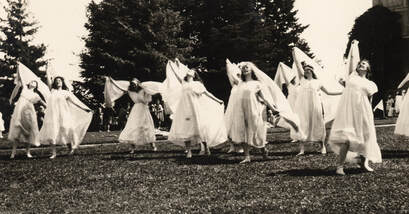
Tu B’Av is a little-known Jewish holiday, coming just six days after the mournful commemoration of tragedy during Tisha B’Av. Tu B’Av , the 15th Day of Av, is both an ancient and modern holiday. Originally a post-biblical day of joy, it served as a matchmaking day for unmarried women in the Second Temple period (before the fall of Jerusalem in 70 C.E.). Tu B’Av was almost unnoticed in the Jewish calendar for many centuries but it has been rejuvenated in recent decades, especially in the modern state of Israel. In its modern incarnation it is gradually becoming a Hebrew-Jewish Day of Love, slightly resembling Valentine’s Day in English-speaking countries. (Sourced from myJewishlearning.com)
What is Tisha B’Av (the 9th day of Av)?
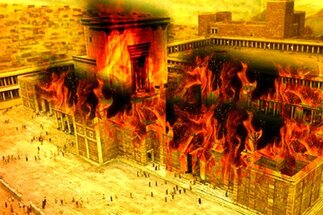
The ninth day of the month of Av, in Hebrew Tisha B’Av, is the day of destruction. The day recalls the destruction of the First Temple, the Second Temple, the defeat by the Romans of our short lived Bar Kokhba rebellion, the 1290 Expulsion from England, as well as the end the expulsion from Spain in 1492. It’s a pretty heavy day. Our sages teach that all these terrible things happened on the same day so that our calendar would not be cluttered with sadness, so that we don’t need to extend ancient grief beyond the observances of Tisha B’av. During the nine days, from the 1st of Av to the 9th, there is a sense of gloom and doom. Traditionally, during these nine days one does not see movies, go swimming, eat meat, drink wine, launder cloths, or celebrate anything (except a Brit Milah, Ritual Circumcision). On Tisha B’av we fast and recite designated prayers. (Sourced from myJewishlearning.com)
How many Universities does Isreal have?

There are seven lucrative Universities in Israel in addition to many colleges. Technion–Israel Institute of Technology (est. 1924, Haifa) The Technion serves as a center of basic and applied research in the sciences and engineering to advance the country’s industrial development. The Hebrew University of Jerusalem (est. 1925) Since its inception, Hebrew University scientists have been actively involved in every phase of Israel’s national development, and its Jewish Studies departments rank among the most comprehensive in the world. Weizmann Institute of Science (est. 1934, Rehovot), named for Dr. Chaim Weizmann, Israel’s first president and a renowned chemist. Today, it is a recognized post-graduate center of research in physics, chemistry, mathematics, and the life sciences. Bar Ilan University (est. 1955, Ramat Gan) embodies a unique integrative approach which combines enrichment programs in Jewish heritage with a liberal education, in a wide range of disciplines, particularly in the social sciences. Tel Aviv University (est. 1956) was founded by incorporating three existing institutions to meet the need for a university in the Tel Aviv area, the country’s most populous region. Haifa University (est. 1963), which serves as a center of higher education in the northern part of the country. The university includes a unit for the study of the kibbutz as a social and economic entity, as well as a center dedicated to the advancement of understanding and cooperation between Jews and Arabs in Israel. Ben-Gurion University of the Negev (est. 1967, Be’er Sheva) was established to serve the residents of southern Israel and to encourage the social and scientific development of the country’s desert region. (Sourced from myJewishlearning.com)
What makes food kosher, or not?

Ask an average person to describe kosher food and they might say it is food “blessed by a rabbi.” The word “kosher,” however, is Hebrew for “fit” or “appropriate” and describes the food that is suitable for a Jew to eat according to biblical standards. The system of defining which foods are kosher was further developed by the rabbis of late antiquity. According to the Torah (Leviticus 11), only certain kinds of animals are considered inherently kosher. For land animals, any creature that both chews its cud and has split hooves is kosher. For sea creatures, any fish that has both fins and scales is acceptable, and for birds, only those birds approved by the Torah (or others that later authorities have judged to be like them, a list that excludes scavengers and birds of prey). In addition, it is repeated three times in the Torah that it is forbidden to cook a baby goat in its own mother’s milk. The rabbis in the Talmud further developed this principle of kashrut to include separating dishes. Additionally, in order to consume kosher land animals and birds, it is necessary to slaughter them in a manner that has been described as a more humane method. (Sourced from myJewishlearning.com)
How did modern Hebrew become the official language of Israel?
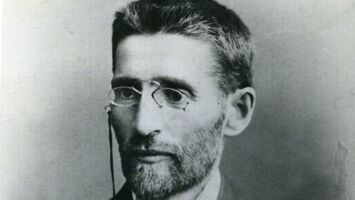
When Eliezer Ben-Yehuda arrived in Palestine in 1881, Hebrew had not been the spoken language of the Jewish people since the time of the Bible. Yet, thanks to Ben-Yehuda, by 1922 enough Jewish pioneers were speaking Hebrew that the British Mandate authorities recognized it as the official language of Jews in Palestine.
Ben-Yehuda conceived of Jewish nationalism as both the return to the historical homeland in the Land of Israel, as well as the revival of the Hebrew language. To accomplish the latter, Ben-Yehuda needed to inspire a near impossible feat: transform Hebrew, which for centuries had been used only in study, into a modern spoken language. (Sourced from myJewishlearning.com)
Ben-Yehuda conceived of Jewish nationalism as both the return to the historical homeland in the Land of Israel, as well as the revival of the Hebrew language. To accomplish the latter, Ben-Yehuda needed to inspire a near impossible feat: transform Hebrew, which for centuries had been used only in study, into a modern spoken language. (Sourced from myJewishlearning.com)
Where do the names of the months on the Hebrew Calendar come from?
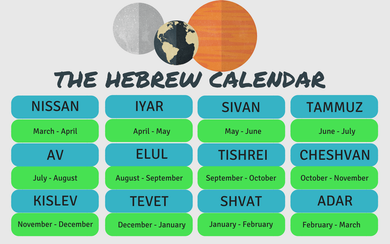
The names that we use for the Jewish months are actually Babylonian in origin and were adopted by the Jews as of the time of the Babylonian exile in the sixth century BCE. The Bible indicates that until then the months were often times called simply by their numerical position in the year (First Month, Second Month, etc.), just as the days of the week — with the exception of Shabbat — still are in Hebrew. In addition, the Bible does record some ancient names for the months that disappeared once the Jews adopted the Babylonian names. These include the now-forgotten months of Bul and Aviv, among others. (Sourced from myJewishlearning.com)
Why is a section set aside in Orthodox synagogues for women?
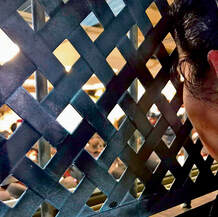
The origin of a special aria set aside in synagogue for women dates back about 3000 years, to Temple days. The largest court in the Temple was called Ezrat Nashim, Women’s Court. It was not intended to separate men from women but rather as an area for people who are ritually impure due to certain skin diseases in both sexes or menstruation. People with these conditions were biblically prohibited from entering the inner court of the Temple. Since many more women than men would be ritually impure at any given time due to menstruation this area received its name, Women’s Court, Ezrat Nashim. This same term, Ezrat Nashim, is used for the women’s sections in Orthodox synagogues. The Talmud (Sukkot 42b) mentions a yearly Temple celebration, of which dances and rituals were particularly boisterous and potentially sexually charged, Simhat Beit HaShoeva. During the night of Simhat Beit HaShoeva a special gallery was erected for women in order to curb ecstatic feelings from turning into inappropriate and unwelcome sexual behavior on the Temple grounds. This is likely the prototype for the later wide spread custom of creating a permanent women’s sections in pre-nineteenth-century synagogues. (Sourced in part from “The Jewish Book Of Why”, Kolatch page 139)
Why is the Torah read in synagogue on Monday and Thursday mornings but not on other weekdays?
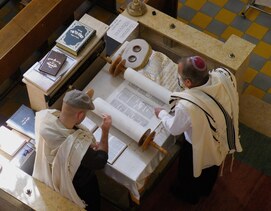
The most common explanation relates to Ezra the Scribe of the sixth century B.C.E who instituted communal reading from the Torah on Mondays, Thursdays, and Shabbat afternoons in addition to the already existing practice of Shabbat morning reading (Talmud Bavli, Baba Kama 82a). Ezra The Scribe explained that since the Children of Israel wondered in the desert for three days without water (Exodus 15: 22), Jews, therefore, should not go for three days without hearing the Torah read aloud, which sustains the spirit as water sustains the body. A more historical explanation is that Mondays and Thursdays where market days in Jerusalem in the sixth century B.C.E. Jews came to the city to sell their wares. And since they were assembled on these days in large numbers from the days of Ezra the Scribe onward it became customary to read the Torah publicly on market days. Another tradition claims that Moses climbed up Mount Sinai to receive the Torah on Thursday and returned on a Monday. (Sourced in part from “The Jewish Book Of Why”, Kolatch page 132)
Why is a Minyan, a quorum of 10, required for certain prayer services?
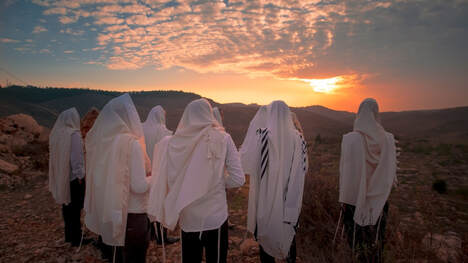
Traditionally it is required that ten men beyond Bar Mitzvah age be present when certain traditional prayers are recited. These prayers usually proclaim God’s sovereignty or kingship. A king by definition depends on having a kingdom, or a community. The Rabbis of the Talmud (Megilla 23b and Berakhot 21b) explain that because the ten spies who scouted the land of Israel are referred in the Torah as an “Eyda” (Numbers 14:26), a congregation, therefore ten will be the benchmark number that constitutes a Minyan for the purposes of proclaiming God’s sovereignty. The Rabbis relieved women from the obligation of time bound prayers, or any time bound Mitzvot, for that matter, because of the practical necessity that women be available at all times for the needs of children and other vulnerable members of the family and clan. In modern times many congregations count women in a Minyan as well. (Sourced in part from “The Jewish Book Of Why”, Kolatch page 141)
Why are Mezuzot (singular, Mezuzah) placed on the doorposts of Jewish homes?

The Mezuzah is a small parchment inscribed with verses from the Bible. It is rolled up, inserted in a case, and attached to the doorpost.
That a Mezuzah be placed on the doorposts of every Jewish home is mandated in the Bible: “And you shall write them (the commandments) upon the doorposts of your house and upon your gates...” (Deuteronomy 6: 9). Its function is twofold: to serve as a reminder of God’s laws, and to serve as a symbol of loyalty to the Jewish people.
The Jewish historian Flavius Josephus, who lived in Palestine in the first century c.e., wrote in his book Antiquities “The greatest benefits of God are to be written on the doors… in order that His benevolent providence may be made known everywhere.” And Rabbi Moses ben Maimon (Maimonides), the great twelfth century philosopher, wrote in his famous work Yad HaHazaka, “by the commandment of Mezuzah man is reminded of the unity of God, and is aroused to the love of Him…” The Mezuzah is also believed to be a protective amulet for the home and its inhabitants. (Sourced in part from “The Jewish Book Of Why”, Kolatch page 113)
That a Mezuzah be placed on the doorposts of every Jewish home is mandated in the Bible: “And you shall write them (the commandments) upon the doorposts of your house and upon your gates...” (Deuteronomy 6: 9). Its function is twofold: to serve as a reminder of God’s laws, and to serve as a symbol of loyalty to the Jewish people.
The Jewish historian Flavius Josephus, who lived in Palestine in the first century c.e., wrote in his book Antiquities “The greatest benefits of God are to be written on the doors… in order that His benevolent providence may be made known everywhere.” And Rabbi Moses ben Maimon (Maimonides), the great twelfth century philosopher, wrote in his famous work Yad HaHazaka, “by the commandment of Mezuzah man is reminded of the unity of God, and is aroused to the love of Him…” The Mezuzah is also believed to be a protective amulet for the home and its inhabitants. (Sourced in part from “The Jewish Book Of Why”, Kolatch page 113)
Why is a quill used for writing religious documents?
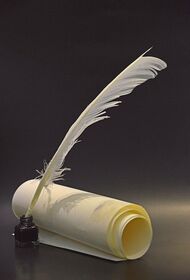
A quill from a kosher fowl is used to write religious documents, including a Torah scroll, a Mezuza parchment, a Tefilin parchment, and a divorce document (Get). A steel pen (or any other metal object, including a printing press) may not be used because iron products and their derivatives are considered symbols of war: they are materials from which swords and guns and other armaments are made. This tradition dates back to biblical times, when, in the construction of the altar, stones were not used if they had been shaped with iron tools. This is based on the biblical injunction, “And if you make Me an altar of stone, do not build it of hewn stones, for if you apply your “sword” (iron tool) to it, you have profaned it” (Exodus 20: 25).
Why is the star of David a popular symbol?
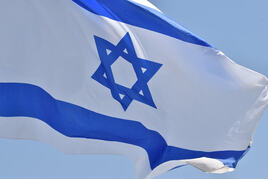
This six-pointed star (hexagram) is called “Magen David” in Hebrew. The words Magen David, generally translated as “Star of David”, literally means “Shield of David”.
Its earliest use in a synagogue dates back 1800 years, when it appeared next to a five-pointed star (pentagram) and a swastika on a frieze in the Synagogue of Capernaum. In sixth-century Italy, the Start of David emblem appeared for the first time on a tombstone.
The origin of the Star of David is clouded, and it probably has no connection whatsoever with King David. We do find that between the years 1300 and 1700 Kabbalists (Jewish mystics) used the terms “Shield of David” and “Shield of Solomon” interchangeably. The Star of David occurs as a specifically Jewish emblem in seventeenth-century Prague, where it appears on the official seal of the Jewish community and on printed prayerbooks. In 1987 it was adopted by the first Zionist Congress as its symbol, and in 1948 it became the central figure in the flag of the new State of Israel.
Its earliest use in a synagogue dates back 1800 years, when it appeared next to a five-pointed star (pentagram) and a swastika on a frieze in the Synagogue of Capernaum. In sixth-century Italy, the Start of David emblem appeared for the first time on a tombstone.
The origin of the Star of David is clouded, and it probably has no connection whatsoever with King David. We do find that between the years 1300 and 1700 Kabbalists (Jewish mystics) used the terms “Shield of David” and “Shield of Solomon” interchangeably. The Star of David occurs as a specifically Jewish emblem in seventeenth-century Prague, where it appears on the official seal of the Jewish community and on printed prayerbooks. In 1987 it was adopted by the first Zionist Congress as its symbol, and in 1948 it became the central figure in the flag of the new State of Israel.
Why is Matza eaten on Passover?
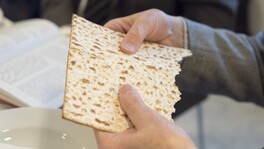
Matza is eaten to satisfy the biblical commandment to commemorate the hasty departure of the Children Of Israel from Egypt: “They took up their dough before it had time to leaven” (Exodus 12:34). The message is further amplified in Deuteronomy 16:3: “for seven days thereafter you shall eat unleavened bread… for you departed from the land of Egypt hurriedly… so that you may remember the day of your departure from the land of Egypt for as long as you live”. The implication of this verse as interpreted by the Rabbis, is that it is mandatory to eat Matza on the first night of Passover, and it is optional to eat it for the balance of the week, as long as Hametz (leavened bread and other products) is not eaten.
Why is a piece of Matza, called the Afikoman, “stolen” by children and hidden until it is ransomed?

During the early part of the Seder service, a piece of the middle Matza is placed in a napkin or a bag. This Matza, called the Afikoman, is distributed to all Seder participants after the meal and is then eaten as a dessert (Afikoman is a Greek word meaning dessert).
The custom of setting aside a piece of Matza for the end of the Seder was instituted 700 years ago by students of Rashi, the great French Rabbi and commentator. To make the Seder more exciting for children, they were allowed to “steal” and hide the Afikoman. Since the Seder could not continue until a piece of the Afikoman was eaten by everyone, the leader of the Seder had to search for it. If he or she could not find it, they would offer a gift to the children. Then the children would fetch the Afikoman from its hiding place. Nowadays, many Seder leaders hide the Afikoman and the children receive a gift, if they find it. When the Afikoman is finally returned, the leader of the Seder breaks it into small pieces, which he or she shares with everyone at the table. The intention is that the last flavor we taste at the Seder is that of Matza, as a way of internalizing its meaning. After partaking of the Afikoman the Seder can continue with the recitation of the Grace After The Meal and further songs and readings. (Sourced in part from “The Jewish Book Of Why”, Kolatch page 204)
The custom of setting aside a piece of Matza for the end of the Seder was instituted 700 years ago by students of Rashi, the great French Rabbi and commentator. To make the Seder more exciting for children, they were allowed to “steal” and hide the Afikoman. Since the Seder could not continue until a piece of the Afikoman was eaten by everyone, the leader of the Seder had to search for it. If he or she could not find it, they would offer a gift to the children. Then the children would fetch the Afikoman from its hiding place. Nowadays, many Seder leaders hide the Afikoman and the children receive a gift, if they find it. When the Afikoman is finally returned, the leader of the Seder breaks it into small pieces, which he or she shares with everyone at the table. The intention is that the last flavor we taste at the Seder is that of Matza, as a way of internalizing its meaning. After partaking of the Afikoman the Seder can continue with the recitation of the Grace After The Meal and further songs and readings. (Sourced in part from “The Jewish Book Of Why”, Kolatch page 204)
Why are drops of wine spilled from the cup while the 10 plagues are recited at the Seder?
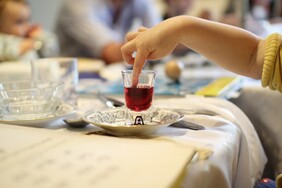
It is explained as an expression of sorrow for the pain suffered by the Egyptians from each plague. Traditionally, the pinky is dipped into the goblet and a drop at a time is tapped onto a saucer with the mention of each plague. The use of the finger is said to be a reminder of the biblical verse (Exodus 8:15) in which Pharaoh’s magicians, unable to duplicate the miracles performed by Moses, had to admit that it was the “finger of God” that executed these miracles. Some say that this Passover observance is simply a remnant of a prevailing custom in early societies who believed that evil spirits could be bribed with wine. Accordingly, some wine was always spilled from the cup before any of the wine in the cup was drunk. This custom may have carried over in ancient times to assure that spirits would not disrupted the festivities. (Sourced in part from “The Jewish Book Of Why”, Kolatch page 203)
Why is the Haggada recited during the Seder?

The Haggada as we know it today is a small volume which recounts the dramatic story of the Exodus from Egypt. It also contains psalms and songs to be sung in celebration of the event. The Haggada was introduced by the Members Of The Great Assembly (Anshei HaK’nesset HaGedolah) in the land of Israel almost 2500 years ago. These sages created the Haggada in order to comply with the biblical verse, “And you shall instruct your son on that day (Passover)… (Exodus 13:8). The word “haggada” is Hebrew for “the telling” (of the ancient story). As such it is a book of instruction, especially designed for the young. (Sourced in part from “The Jewish Book Of Why”, Kolatch page 197)
Why does the person leading the Seder traditionally recline against a pillow?
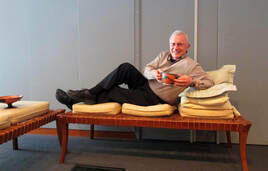
The custom of eating in a reclining position symbolizes freedom and independence. Persian, Greek, and Roman aristocrats followed this practice as a measure of leisure and stature. Jews who lived in the midst of, and under the rule of, these domineering cultures adopted the practice of reclining at the table on Passover as an expression of their desire to lead a free and independent existence. Imitating the ruling class, was also a form of cultural rebellion and defiance. The Mishnah (Pesachim 10:1) requires that even the poorest person of Israel must not eat on the first night of Passover unless he or she reclines. Another element of the traditional Seder that was also adopted from the infamous Roman banquet, was dipping herbs in salt water. (Sourced in part from “The Jewish Book Of Why”, Kolatch page 196)
Why is Leaven (Hametz) removed on Passover?

The word Hametz literally means “sour”. Anything leavened or Hametz in biblical times was considered ritually impure because it had fermented or soured. Matzah, unleavened bread, on the other hand, was a symbol of purity and mandated on Passover (Exodus 13: 7). Mitzvah is a reminder of the bread the Israelites took with them when they left Egypt in a haste. The Talmud says: “leaven represents the evil impulse of the heart” (Berakhot 17a). The following five grains: wheat, barley, spelt, rye, and oat, and anything made of them, are considered Hametz, and thus forbidden on Passover because they ferment easily. The only way they can be used is for the baking of Matza before the holiday. Since Matzah is made from only two ingredients, flour and water, and baked in a great haste (to prevent the unset of fermentation), it does meet the purity standard of the holiday. It is customary that Hametz is removed from the house before Passover so that it will not even be seen. That is why many Jews scour the house before the holiday to remove any and all Hametz. (Sourced in part from The Jewish Book Of Why, Kolatch 1985, p. 187)
Why are noisemakers, groggers, used when the Book Of Esther (Megillah) is read in the synagogue?
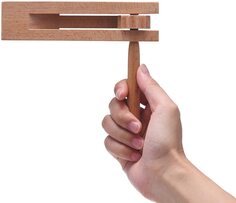
To blot out Haman’s name. Since Haman was the archenemy of the Jews of Persia, and also epitomizes all enemies of the Jewish people throughout the ages, noisemakers are sounded whenever his name is mentioned during the reading of the Megillah of Esther. This is a method of “erasing” Haman’s remembrance, in following with the biblical verse: “I will utterly erase the remembrance of Amalek from under the heavens” (Exodus 17:14). The biblical tribe of Amalek, who attacked the newly liberated Israelite slaves in the Sinai desert, are considered to be Haman’s ancestors. Turning groggers, stumping on the floor, and blowing horns and whistles are some of the methods used in synagogues to erase the name "Haman" from even being heard if not remembered.
Why do Hamantaschen have three corners?

The most common explanation is that the three corners resemble the three corner hat worn by Haman. However there is no evidence for this, and an alternative speculation is that the custom began in the nineteenth century to copy the Napoleonic triangular-shaped hat. More convincing linguistic and anthropological studies of Western Europe cuisine claim that a three corner pastry was a traditional German sweet in the middle ages called Mohntachen, literally poppy-seed pockets - mohn, poppyseed and tasche, pocket. The German Jewish community must have adopted the pastry in jest as their Purim specialty because of its phonetic resemblance with Haman, giving us hamantaschen. The traditional and religious explanation is that Queen Esther derived her strength and courage from the three patriarchs: Abraham, Isaac, and Jacob, hence three corners. (Sourced in part from The Jewish Book Of Why, Kolatch 1985, p. 276)
Does Tzedakah really mean charity?
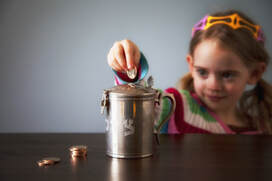
To Jews today, the term tzedakah צדקה connotes giving charitable contributions, but the term originates in another realm. In the Bible, tzedakah means “righteous behavior” and is often paired with “justice.” In Jewish thought and tradition, material support for those in need is not a matter of “charity”, a term that implies generosity beyond what may be expected, but a requirement. As in most areas of life, here too Jewish tradition makes practical demands and specifies expectations. Traditional Jewish law regulates the collection and disbursement of tzedakah in an attempt to assure fairness. Judaism provides guidance on how much to give, how to minimize embarrassment to the recipient, and how to set priorities among competing demands for assistance. The so-called “ladder of tzedakah” expounded by the medieval thinker Maimonides, one of the best-known Jewish sources on this subject, emphasizes the importance of anonymous, generous giving, and on helping those in need become self-sufficient.
(Sourced in part from My Jewish Learning)
(Sourced in part from My Jewish Learning)
Why is hunting discouraged in Jewish tradition?

Animals killed by hunters, even kosher animals (that have split hooves and chew their cud), are rendered non-kosher as designated by the Book of Exodus (22: 30). If a kosher animal in the wild, such as a deer, is trapped but not injured, the flesh may be eaten if slaughtered by a schochet in the prescribed ritual manner. Rabbi Akiba ruled that it is forbidden to take the life of a wild animal without giving it a fair trial before a court of twenty-three judges, the same as for a human being. Undoubtedly, this was not to be taken literally, but to emphasize the sanctity and importance of all living creatures. The Talmud (Chulin 60b) discourages hunting – especially for sport. It is seen in the category of cruelty to animals, a practice condemned in the Bible. (Sourced in part from The Jewish Book Of Why, Kolatch 1985, p. 88)
Why do traditional Jews refrain from using electricity on the Sabbath?

Traditional Jews consider electricity to be a form of fire, and lighting a fire on the Sabbath is prohibited in the Bible. These Jews do not turn on devices or use any electrical appliances on the Sabbath. Some authorities who doubt whether electricity can truly be labeled fire explain the ban on electricity as a protective measure (shevut), to safeguard against other violations that may stem from the use of electrical appliances. (Sourced in part from The Jewish Book Of Why, Kolatch 1985, p. 164)
Why is the word Kosher used to describe articles not related to food consumption?

The word “Kosher”, which is an anglicization of the Hebrew word “Kasher”, did not originally apply to food. The word first appears in the Bible (Esther 8:5 and Ecclesiastes 11:6) to mean “good” or “proper”. In later rabbinical literature it referred primarily to ritual objects, such as Talit (prayer shawl), Tefilin (phylacteries), etc., and meant “fit for ritual use”. Kasher is also used to describe witnesses at a trail who are “fit” or “competent to testify. The use of “Kosher” to qualify food items developed only in modern times as supervising a growing processed-foods industry has become necessary in order to satisfy Jewish religious standards for Jewishly observant consumers. (Sourced in part from The Jewish Book Of Why, Kolatch 1985, p. 86)
Why is the wedding ceremony held under a Huppah?
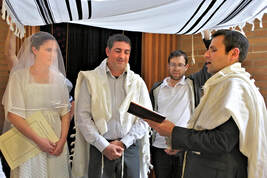
A Huppah is a wedding canopy usually a large piece of decorated fabric (sometimes a Talit, a prayer shawl) supported by four firm poles. It is a reminder of ancient times when the groom brought the bride to a room in his house at the end of the betrothal (engagement) period to copulate for consummating the marriage. The sexual joining, termed Yihud, was considered the essence of the wedding. During Middle Ages when weddings were performed in the synagogue, it became customary to erect the type of Huppah still in use today, symbolizing the Yihud room. Source: (Second Jewish Book of Why, Kolatch 1985, p. 35).
Why is the honor of witnessing up-close the reading of an open Torah-scroll named an “Aliya”?
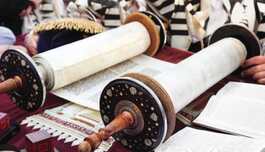
Aliya is Hebrew for “ascent.” Originally, the prophet, priest or king would read the entire weekly Torah portion during synagogue worship. Later-on in history, the Torah reading was divided among members of the congregation. Since the reader would physically ascend a platform (Bimah) to recite the portion, as well as assume a role previously reserved for dignitaries, this honor was termed an “Aliya”, ascent. In later centuries it became evident that many Jews were not knowledgeable enough to musically read the Torah portion, thus a designated reader, the “Baal Koray”, master-of-reading, would do so, and the term Aliya would then refer to the honor of witnessing the reading up-close and reciting the blessing before and after the performance of this Mitzvah.
Source: (Second Jewish Book of Why, Kolatch 1985, p. 133).
Source: (Second Jewish Book of Why, Kolatch 1985, p. 133).
Why does the groom break a glass at the end of the wedding ceremony?

The most popular explanation is that the breaking of the glass commemorates the destruction of the Temple In Jerusalem in the year 70 C.E.. The shattering of the glass is a reminder of our national loss and our enduring hope that we or our descendants will return to Jerusalem and rebuild the Temple. Other explanations relate the custom to medieval practices of warding off evil eye. Source: Second Jewish Book of Why, Kolatch 1985, p. 42
Why do some Jews sway when they pray?

Swaying, also known in Yiddish as Schuckling, is an ancient Jewish custom. The Zohar, a mystic work written by the second century C.E. Rabbi Shimon Bar Yohai, explains: “Rabbi Jose asks Rabbi Abba, why… Jews alone are in the habit of swaying the body when they study the Law? Rabbi Abba answered: It is proof of the refinement of their souls. “A person’s spirit is Adonai’s candle”, as referred to in Proverbs (20: 27). The light of that candle flickers and waves in harmony with the light of the Torah”. The fourteenth century German born sage, Rabbi Jacob Ben Asher (aka Baal HaTurim), explains that swaying while praying is an expression of awe, similar to the awe felt during the giving of the Torah at Mount Sinai.
Source: (Jewish Book of Why, Kolatch 1985, p. 151).
Source: (Jewish Book of Why, Kolatch 1985, p. 151).
Why does the day begin at sundown on the Jewish calendar?

The custom of reckoning days in this fashion is based on the first chapter of the book of Genesis. At the end of each day of Creation in Genesis chapter 1, it reads: “And God saw that it was good. And it was evening, and it was morning…”. Additionally in the book of Leviticus (23:32) we read: “… from evening onto evening you shall keep the Sabbath.” Thus, each twenty-four-hour period begins at sundown. The Sabbath and Holidays, for example, begin at sundown, i.e. we begin celebrating Shabbat every Friday evening, which ends twenty four hours later at Saturday nightfall. (Sourced in part from The Jewish Book Of Why, Kolatch 1985, p. 292)
Why do Jews observe the Sabbath as a day of rest?
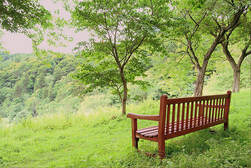
The idea of the Sabbath as a day of rest comes from the Torah. The second chapter of the book of Genesis tells that after creating the world in six days, God rested on the seventh day. In the Ten Commandments (Exodus 20: 2-14; and Deuteronomy 5:12-15), the Sabbath is referred to as a day of rest for servants as well as for masters, and as a day of commemorating Israel’s release from slavery in Egypt. These ideas also appear in Exodus 31:16,17. The Sabbath is an ancient protection against labor exploitation and slavery, intended to elevate the spiritual lives and quality of life for all. Source: (Jewish Book of Why, Kolatch 1985, p. 162)
Why are the Sabbath candles lit before sunset on Friday, and not on Saturday proper?
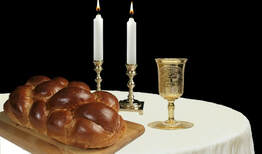
In the Jewish calendar all days begin at nightfall (of the evening before the actual day in question). Lighting fire on Shabbat is prohibited in the Torah. So, as not to desecrate the Sabbath by miscalculating the time on which night falls, it has become customary to light the Sabbath candles early - usually eighteen minutes before sunset, and approximately forty minutes before nightfall. The Sabbath ends on Saturday night approximately twenty minutes after nightfall. The end of Sabbath is too traditionally marked with a candle-lighting ceremony called “Havdallah”. Source: (Jewish Book of Why, Kolatch 1985, p. 163)
Why is the word “Amen” often said during public prayers?
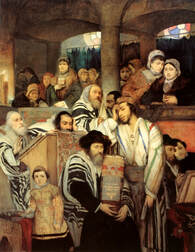
“AMeN” is an acrostic formed from the first letters of the three Hebrew words El Melekh Ne’eman, The Lord is a Trustworthy King (Talmud Shabbat 119b). The word appears for the first time in Torah in the book of Numbers (5:22) in relation to the Sotah ritual. As a response to a prayer or as a declaration, “Amen” means “truly” or “so be it”. According to Talmud Ta’anit 16a, after the Temple in Jerusalem was destroyed in 70 c.e. “Amen” replaced the longer traditional Temple response to prayer, “blessed is His glorious name forever and ever”. Because many congregants in early times were unable to read, the leader of the service would read an entire prayer, the congregation would listen, and at the conclusion respond “Amen. Fundamentally, the “Amen” response is a verbal statement of inclusion or affiliation when present at Jewish communal prayer or study. Source: (Jewish Book of Why, Kolatch 1985, p. 152)
Why is the honor of approaching an open Torah scroll to witness its reading named an Aliya?
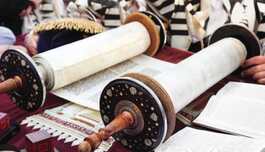
Aliya is the Hebrew word for “ascent.” Originally, the prophet, priest or king would read the entire weekly Torah portion during synagogue worship. Later, the Torah reading was divided among members of the congregation. Since the reader would physically ascend a Platform (Bimah) to recite the portion, as well as take on the role of a dignitary, this honor was termed an “Aliya”. In later centuries it became evident that many Jews were not knowledgeable enough to musically read the Torah portion, thus a designated reader, the “Baal Koray”, “master of the reading” would do so, and the term Aliya would then refer to the honor of witnessing the reading up-close and reciting the blessing before and after the act.
Source: (Second Jewish Book of Why, Kolatch 1985, p. 133).
Source: (Second Jewish Book of Why, Kolatch 1985, p. 133).
Why are the number of candles increased every night rather than decreased?
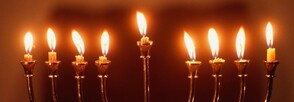
The Talmud discusses whether one candle should be lit the first night two the second and so on – the view of the School of Hillel the Elder. Or conversely, whether eight candles should be lit the first night, seven the second and so on till one candle is lit on the last night – the view of the School of Shamai. The decision was made to follow the opinion of Hillel the Elder, and that is how Hanukkah candles are lit till this day. This decision follows the principle that in matters of holiness (light) one should always increase and not decrease.
Why do Jews eat Potato Latkes on Hanukkah?
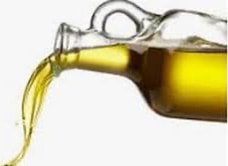
Potato Latkes are eaten because they are fried in oil, and oil symbolizes the miracle of the cruse of oil which lasted for eight days instead of one. Additionally, the Hebrew words for "oil" and for the number "eight", Shemen and Shemonah respectively, share the same three letter root, Shemen שמן. This teaches that oil symbolizes not only the substance of the miracle but also its length in days. Oil is also significant in Jewish tradition because in ancient times it was used to ritually sanctify or anoint high ranking officials, such as kings and priests, as well as holy objects used in Temple rites. In Israel these fried potatoes are called Levivot, reminiscent of the Levites who served in the holy Temple of Jerusalem. The Latkes, thus, connect us to our sacred past in a variety of ways. (Sourced in part from The Jewish Book Of Why, Kolatch 1985, p. 267)
Why is a Mezuzah placed on the doorpost of Jewish homes?
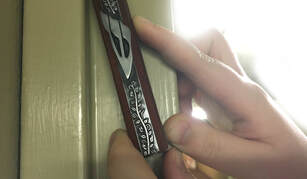
The Mezuzah is a small parchment inscribed with verses from the Bible. It is rolled up, inserted in a case, and attached to the doorposts of our homes. This practice is mandated in the Bible (Deuteronomy 6:9). It is intended to remind us of three things: 1. Torah law, 2. of God’s Unity, 3. to enter, and to leave our homes with love for God and for fellow human beings.
Source: Second Jewish Book of Why, Kolatch 1985, p. 113
Source: Second Jewish Book of Why, Kolatch 1985, p. 113
Why is a Jewish male child circumcised?
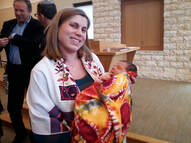
Biblical law requires that every son of a Jewish woman be circumcised on the eighth day after his birth. The word for circumcision in Hebrew is Brit, which means “covenant.” This refers to a pledge God made to Abraham (Genesis 17:2), in which God promised to bless Abraham and make him prosper, if Abraham would be loyal to God, and follow God’s Mitzvot, directives. This covenant was entered into and sealed by the act of circumcision, called in Hebrew Ot Brit, “sign of the covenant”. Source: Second Jewish Book of Why, Kolatch 1985, p. 14
Why wear a Yarmulkah (Yiddish) or Kipah (Hebrew)?
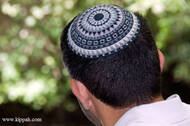
The Yarmulkah is a skullcap worn by Jews, traditionally by Jewish men and, increasingly, by women. While the meaning of the word Yarmulkah is unknown, it is thought to derive from the Hebrew expression Yareh M’Elokim (in awe of God). This is based on a statement by the Talmudic sage, Huna Ben Joshua, who said, “I never walked four cubits with uncovered head because God dwells over my head” (Kidushin 31a). Wearing a Yarmulkah is a widely accepted custom but not codified in Torah law. The Hebrew word Kipah simply means “covering”.
Source: (Second Jewish Book of Why, Kolatch 1985, p. 121).
Source: (Second Jewish Book of Why, Kolatch 1985, p. 121).
Why is pork so objectionable to Jews, even more than other non-Kosher animals?
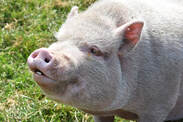
The Talmud teaches, “It is not proper to raise pigs”, adding, “Cursed is he who raises pigs.” Scholars associate the deep Jewish aversion to the pig with two historical periods. One, the Hasmonean period (second century B.C.E) when Antiochus, the Syrian-Greek King, ruled Israel and tried to force Jews to sacrifice pigs in the Temple in Jerusalem. The Maccabees eventually defeated this oppressive regime. The second reason is that during the early centuries of the Common Era the Romans, who ruled Palestine, cherished the pig as one of their symbols. To the Jews the pig became a reminder of the Roman reign of terror. Consequently, the animal was considered more repugnant than other non-kosher animals (The Second Jewish Book Of Why, Kolatch 1985).
Why is Jewish identity traditionally passed from mother to child?
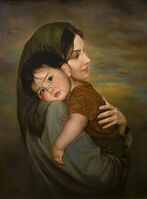
Jewish law considers a child Jewish if the mother is Jewish. The rule was established because one can be sure who gave birth to a child but the paternity is sometimes questionable. In 1983 the Reform rabbinate by a majority of three to one, recognized the validity of patrilineal descent, by which the child of non-Jewish mother and a Jewish father is to be considered Jewish if that child is reared as a Jew and is identified formally and publicly with the Jewish faith. Source: (Second Jewish Book of Why, Kolatch 1985, p. 14).
Why are some wines considered kosher and others not?

The Talmud indicates that wine intended for use in connection with idolatrous (pagan) worship, called Ya’yin Nesekh, was absolutely forbidden to Jews. Later this prohibition was extended to include all wine handled by Gentiles. Today it is generally presumed that Christians and Muslims are not idolaters, and wine handled by them may be used by Jews, although the tradition of caution and avoidance of non-kosher wine lingers.
Source: Second Jewish Book of Why, Kolatch 1985, p. 95
Source: Second Jewish Book of Why, Kolatch 1985, p. 95
Why is the word L’Chayim used when raising a glass and making a toast?

L’Chayim means “to life” in Hebrew. The Talmud, teaches that the custom of toasting someone with the word L’Chayim has its origins with the great scholar Rabbi Akiva. At a banquet he gave in honor of his son, Shimon, Rabbi Akiva offered each guest a glass of wine and saluted them with the words, “To the life and health of the Rabbis and their disciples!” (Shabbat, 67:b). (Second Jewish Book of Why, Kolatch 1985, p. 327).